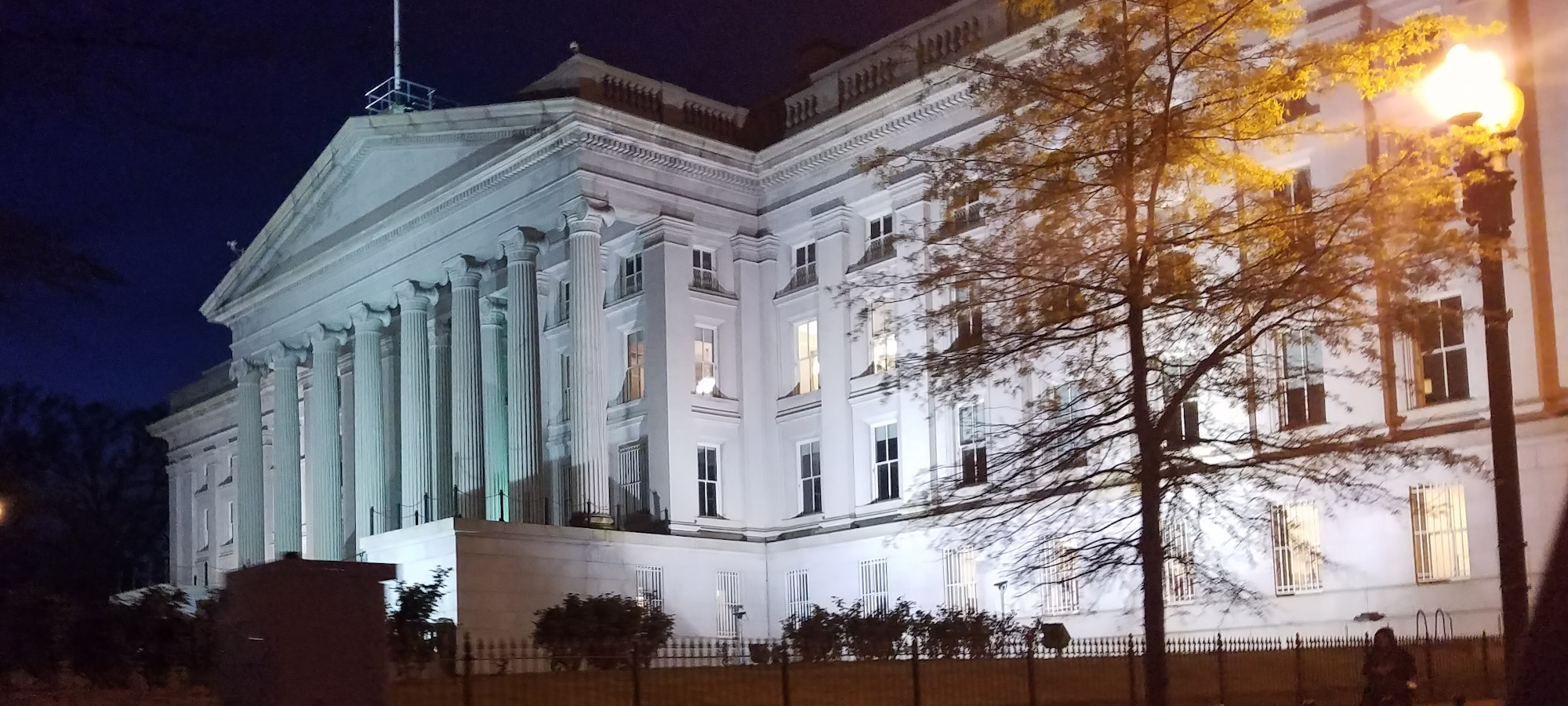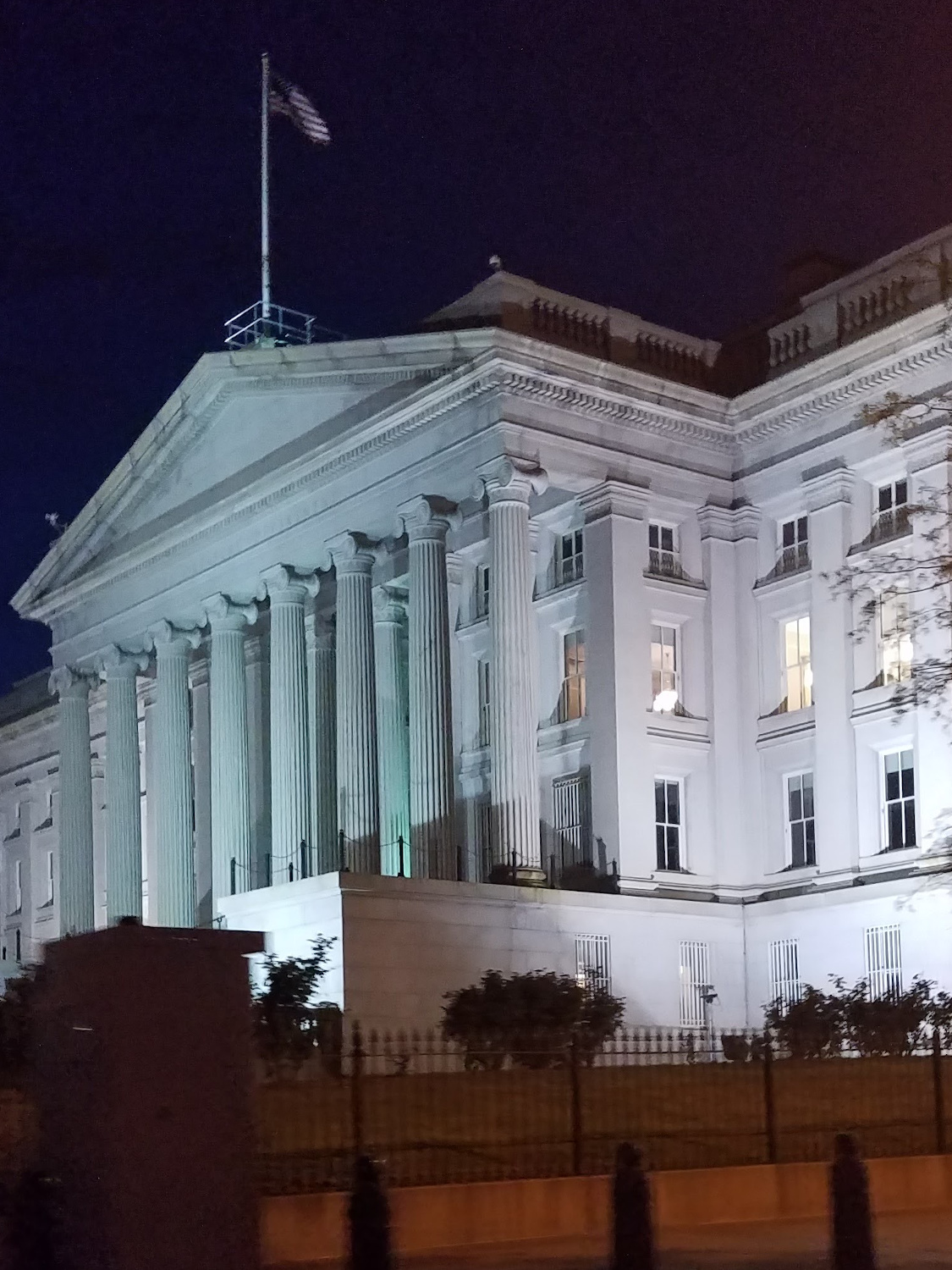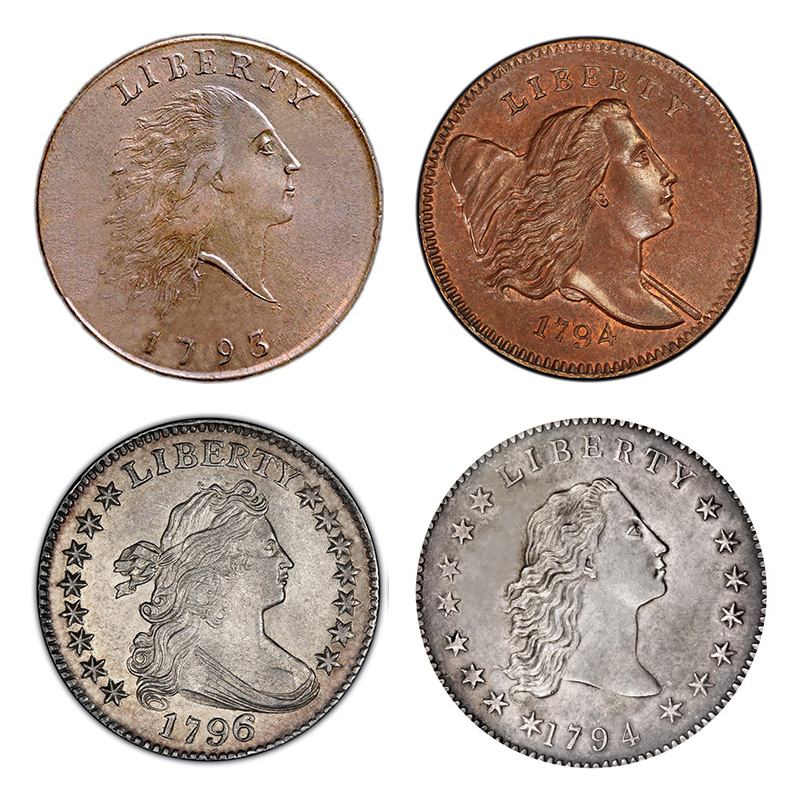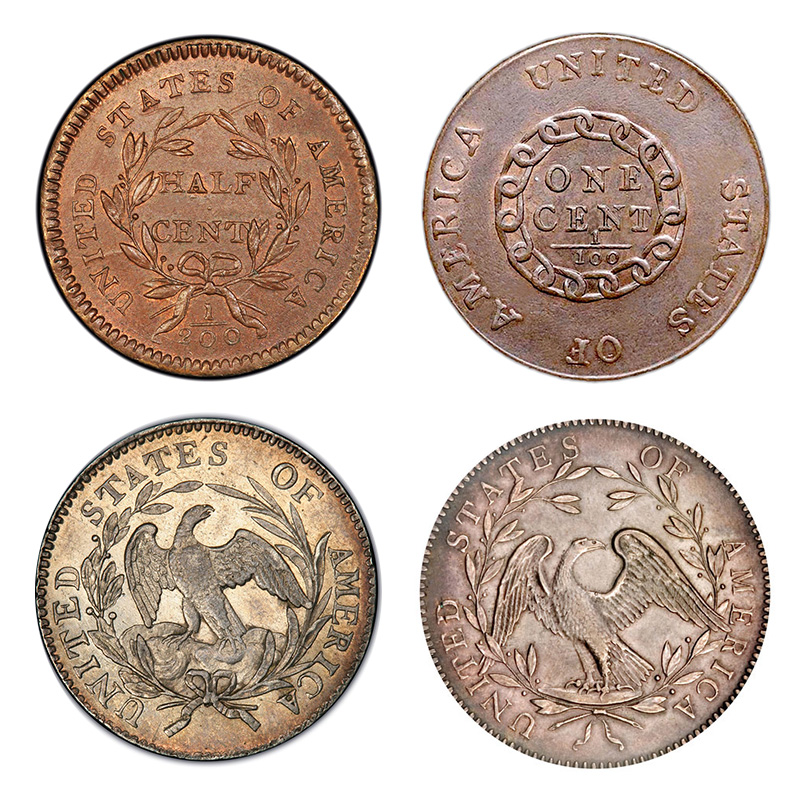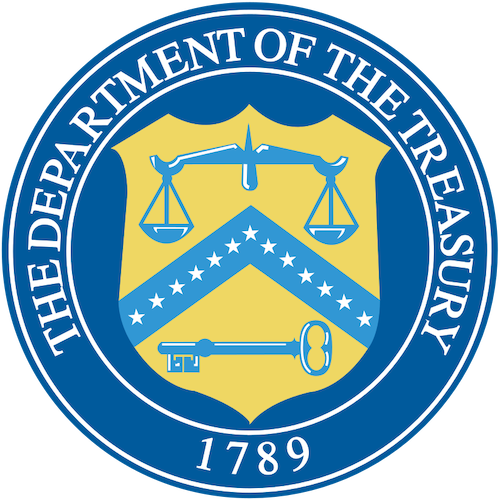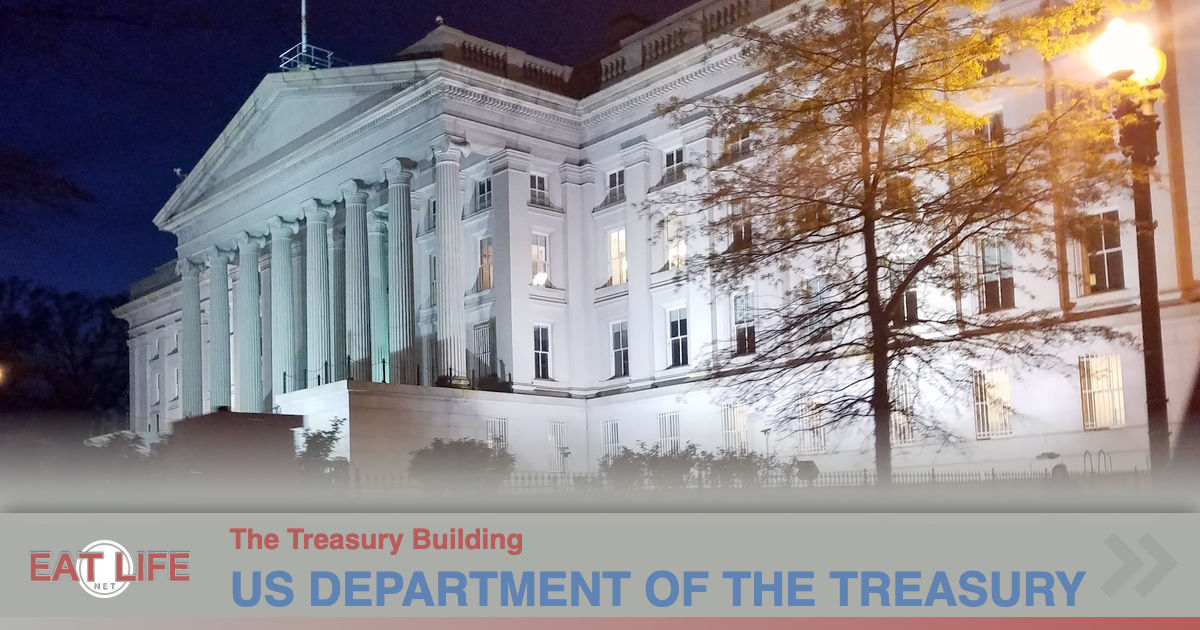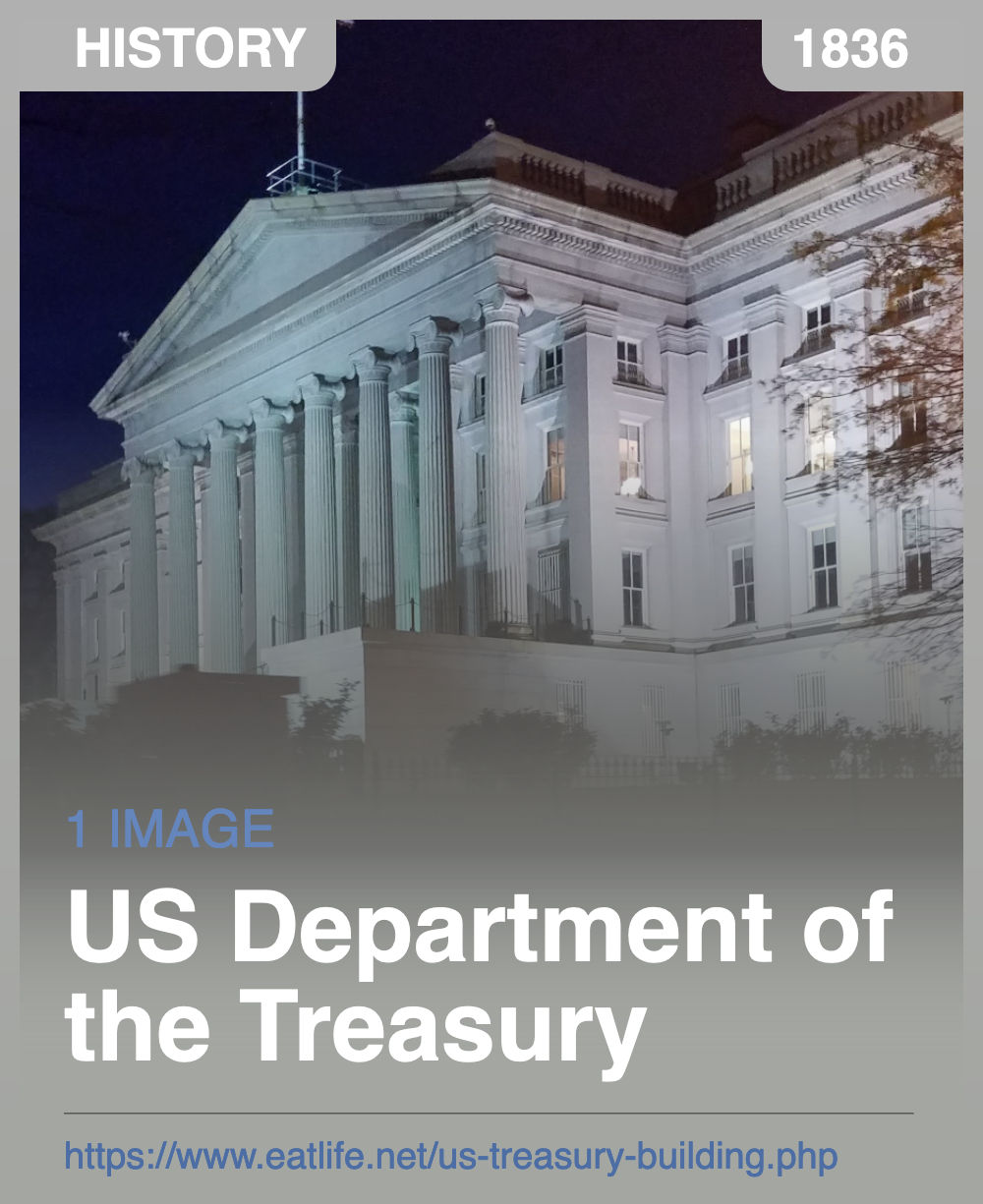Department of the Treasury:
It Enforces finance and tax laws and manages Federal finances by collecting taxes and paying bills and by managing currency, government accounts and public debt.The Department of the Treasury is organized into two major components:
- Departmental offices
- Operating bureaus
The Departmental Offices are primarily responsible for the formulation of policy and management of the Department as a whole, while the operating bureaus carry out the specific operations assigned to the Department. The bureaus make up 98% of the Treasury work force. The basic functions of the Department of the Treasury include:
- Managing Federal finances
- Collecting taxes, duties and monies paid to and due to the U.S. and paying all bills of the U.S.
- Currency and coinage
- Managing Government accounts and the public debt
- Supervising national banks and thrift institutions
- Advising on domestic and international financial, monetary, economic, trade and tax policy
- Enforcing Federal finance and tax laws
- Investigating and prosecuting tax evaders, counterfeiters, and forgers
https://home.treasury.gov/about/general-information/role-of-the-treasury
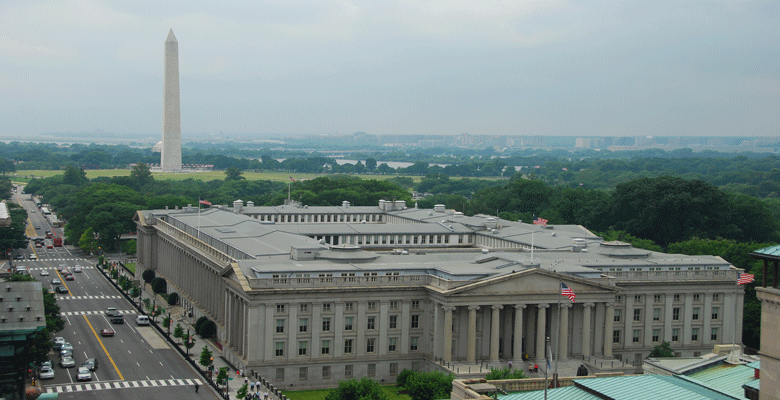
The oldest departmental building in Washington and has had a great impact on the design of other governmental buildings. At the time of its completion, it was one of the largest office buildings in the world. It served as a barracks for soldiers during the Civil War and as the temporary White House for President Andrew Johnson following the assassination of President Lincoln in 1865. The Treasury Building is unquestionably a monument of continuing architectural and historical significance. In acknowledgment of the building's significance, it was declared a National Historic Landmark in 1972.
https://soprema.us/projects/u-s-treasury-building-washington-dc
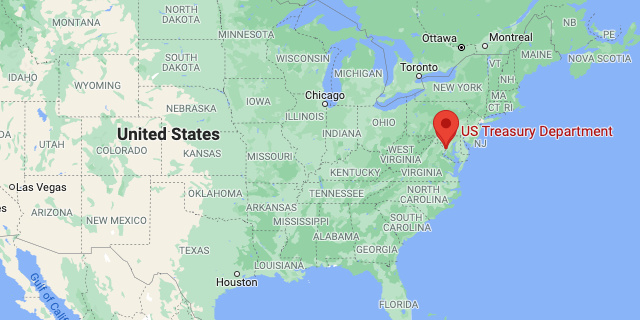
https://www.google.com/maps/place/US+Treasury+Department
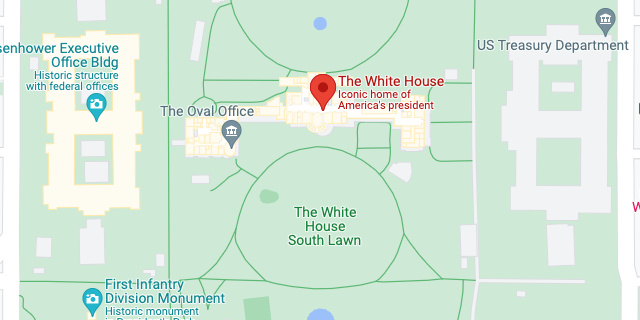
https://www.google.com/maps/place/US+Treasury+Department
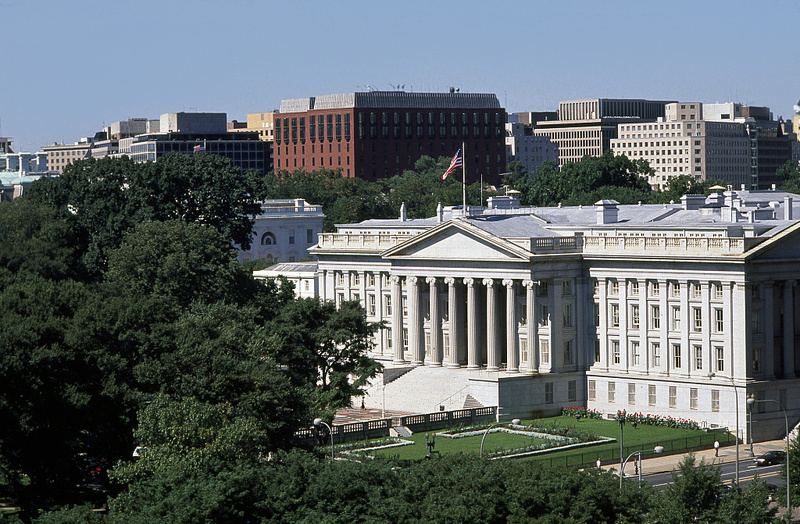
The Greek Revival style captured the spirit of the young republic. This building and the Patent Office, undertaken at the same time, are the most outstanding examples of Greek Revival civil architecture in the country. Not only were they the largest non-military buildings undertaken by the federal government in their own time, but they also influenced countless examples of civil architecture across the nation.
From 1800, the Treasury Department was housed in the first of George Hadfield's three brick Executive Offices, built between 1798 and 1799 on the site of the present north wing. The Treasury Office caught fire in 1801, 1814, and 1833, and it was not reconstructed after the third conflagration. Robert Mills, who had been in the capital since 1830, was asked to assess the fire, and by 1836, his plans for a new Treasury building were accepted by Andrew Jackson.
The Treasury Department building is the work of five major American architects:
- Robert Mills
- Thomas U. Walter
- Ammi B. Young
- Isaiah Rogers
- Alfred B. Mullett
Mills's design for the Treasury called for an E-shaped building opening west toward the White House, with a long classical facade on 15th Street, but only the east front and center wing were built under his supervision, from 1836 to 1842. The unusual vaulted structural system of the building and its monumental scale aroused suspicion in Congress, as well as some sharp professional jealousies among rival architects. In 1838, a bill was introduced in Congress to authorize the demolition of the half-completed structure. The architect presenting the case for demolition was Thomas U. Walter, Philadelphia's leading Greek Revival practitioner. Walter was appointed Architect of the Capitol in 1851, and he was authorized to prepare plans for extending the Treasury in 1855. His concept, which was carried through as others executed the work, established the ultimate rectangular layout, double courtyards, and portico facades.
The south wing was built from 1855 to 1861 under the supervision of Ammi B. Young, appointed Supervising Architect of the Treasury in 1852. While Mills had been forced to use Aquia Creek sandstone, the extension was carried out in granite. The columns were monoliths, whereas Mills' had been built up in drums. Young was abruptly dismissed by Secretary Salmon P. Chase in 1862 and replaced by Isaiah Rogers, who remained in the job until 1865, supervising completion of the west wing (1855-64), addition of an attic floor on all the wings (1863-65), and preliminary planning for the north wing. Upon his resignation, Rogers was succeeded by his former subordinate Alfred B. Mullett, who completed the north wing between 1867 and 1869. This wing contains the elaborately decorated marble Banking Room, which was the setting for Ulysses Grant's first inaugural ball in 1869.
By the late 1890s, the need for additional office space led to the insertion of a large truss-roofed drafting room in the south courtyard, for use by the Supervising Architect of the Treasury. The poor quality of the building's original Aquia Creek sandstone led to the rebuilding of Mills' colonnade. Architects York and Sawyer added an attic story to the building between 1909 and 1910 and made other alterations through 1923.
Interior:
The Mills interiors are minimally decorated, their architectural character resulting from the masonry barrel-vaulted corridors, flanked by groin-vaulted offices. The elegantly curved, cantilevered marble staircases are a signature of his work. In contrast, the interiors of the three later wings rely much more on interior decoration for their architectural character. In these wings, Young, Rogers, and Mullett made extensive and imaginative use cast iron of and cast plaster decoration, including cast iron pilasters and friezes in the main corridors. Mullett's Cash Room is the most lavish space in the building, displaying seven varieties of marble in the paneled walls, and richly sculptural bronze railings for the balcony.
https://historicsites.dcpreservation.org/items/show/603?tour=1&index=15
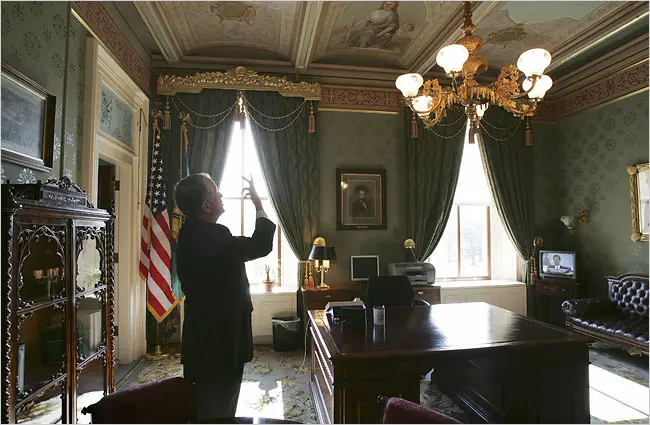
Restored, and historically significant, is the Salmon P. Chase suite, named after Lincoln's secretary of the Treasury who later became chief justice of the Supreme Court. One of Treasury's most elaborate mirrors is installed over the room's mantelpiece. It is believed to have been designed by J. Goldsborough Bruff, who worked in the Treasury architect's office; the fruits-and-vegetables theme symbolizes the abundance of America's agriculture.
Conservators stripped nearly a century's worth of paint to reveal two allegorical frescoes: a pastel-colored one called "Treasury," with a cornucopia of coins, and "Justice," a figure with a scale and sword, reflecting Chase's backgrounds in finance and law, and perhaps his forward-looking attitude (he is credited as the first person to hire women in the federal workforce, to replace men during the Civil War).
https://www.nytimes.com/2007/02/01/garden/01treasury.html

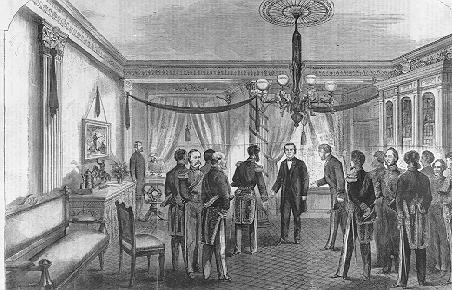
The assassination of Lincoln came at a critical time in our country's history, just one week after the surrender of the Confederate Army. The President's plans to reunite the country were interrupted on April 14, 1865 when John Wilkes Booth fired a fatal shot at Lincoln. The following morning Lincoln died, making his vice-president, Andrew Johnson, the seventeenth president of the United States.
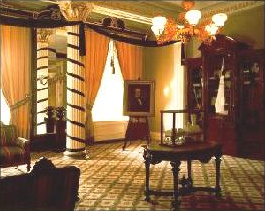
As a courtesy to Mary Todd Lincoln, Johnson delayed moving into the White House, allowing Mrs. Lincoln time to recover and plan her departure. In the meantime, Secretary of the TreasuryHugh McCulloch offered his recently decorated reception room for the President's official use. Here, within hours of Lincoln's death, Andrew Johnson held his first cabinet meeting in what would be his temporary executive office for the next six weeks.
https://home.treasury.gov/about/history/the-treasury-building/andrew-johnson-suite
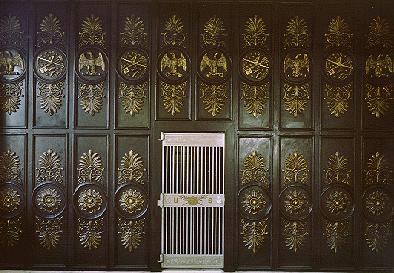
Renovators at the Treasury Building made an unexpected discovery in 1985 behind the walls in the old office of the Treasurer. They had stumbled across the forgotten armored vault that used to guard the government's cash.
The old vault was designed in 1864 by Isaiah Rogers and employed a creative "burglar-proof" design. A double layer of large ballbearings were sandwiched between a metal housing - the theory was that an attacking drill bit would just penetrate one layer and get caught in the spinning the balls. In any case, a retinue of 20 guards used to guard the space to ensure that it never came to that.
According to Fortress of Finance, by 1881 the Rogers vault was crammed with $1 billion in securities, $500 million in bonds and several million in gold and silver coins.
In addition to gold and silver, the vault used to hold many other strange treasures including "paintings, prints and photographs, furniture, decorative arts, sculpture, and architectural fragments."
1909 Cash Room:
The Rogers vault was replaced by a larger cash room in 1909 under the Department's south plaza. The newer subterranean space had double-story shelving, similar to library stacks. According to the Washington Post, the only way to get in was "by way of a tiny hydraulic elevator, which is protected by an iron door, opening almost at the elbow of the chief of the division of issues, who keeps the key in his desk."
Contemporary newspaper articles fawned over an advanced-for-the-time alarm system. The walls of the room were lined with a dense mesh of wires that, if disturbed from the outside, would send an electronic alert to a nearby guard station. The alarm would also activate if the connection between the guard post and vault were interrupted. The alarm 'checked in' with the guard post every 15 minutes, 24 hours a day.
1935 Fort Knox
The government moved its gold and silver reserves in 1935, in order to conform "With the Treasury Department's policy of moving all large gold deposits away from cities exposed to enemy attack." The so called "deep storage" loot is now stored at Treasury facilities in Fort Knox, Denver, and West Point.
https://architectofthecapital.org/posts/2016/8/14/vault-room-under-the-treasury-department
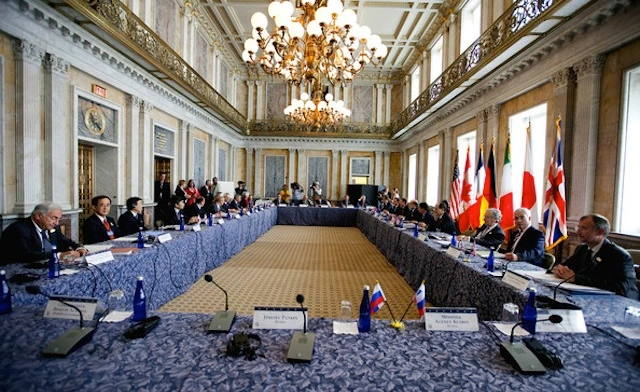
The US Treasury Cash Room dates back to 1869, when it was the location for the transaction of the government's financial business. The Treasury needed a bank in the building, and so one was built — in the style of "a roofed version of an Italian palazzo, a traditional bank design throughout Europe." It features seven different types of marble, three big old chandeliers
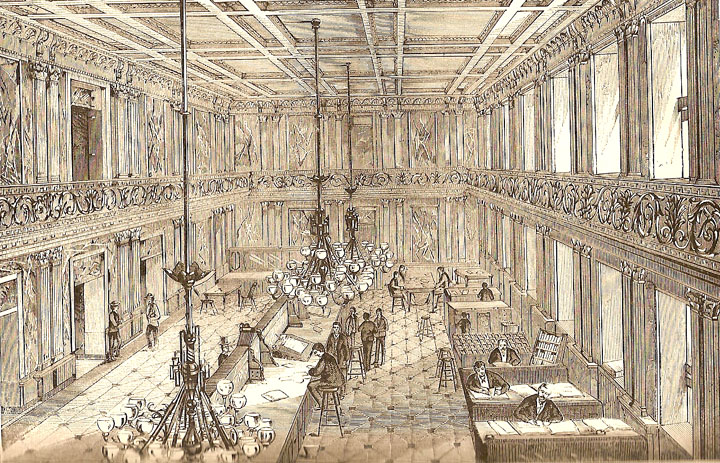
It was a "banker's bank" but it also did things for private citizens, like cashing checks. New deliveries of coinage and paper currency would be brought there and stored in its vaults, millions of dollars' worth at a time.
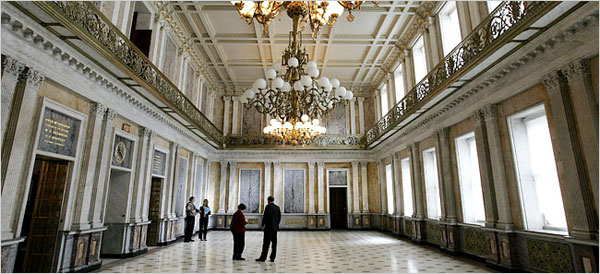
The Cash Room closed in 1976 after it became clear that the costs of upkeep and running it were fast outpacing its actual usefulness.
https://tradepractices.wordpress.com/2012/07/03/us-treasury-cash-room
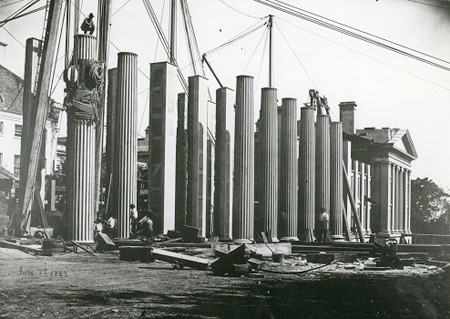
Before the Civil War on December 8, 1860, Secretary Howell Cobb wrote to President Buchanan:
I should no longer continue to be a member of your Cabinet. In the troubles of the country consequent upon the late Presidential election, the honor and safety of my State are involved... The evil has now passed beyond control, and must be met by each and all of us under our responsibility to God and our country.
Cobb left the Department of the Treasury in a state of disarray, with the South Wing extension unfurnished and the West Wing project completely halted, with slabs and columns of stone lining Pennsylvania Avenue.
It took seven Secretaries including Cobb, Thomas, Dix, Chase, Fessenden, and McCulloch and was led by four different architects, Walter, Young, Rogers, and Mullett to complete the West Wing expansion.
It fronts the White House:
As the capital city prepared for inevitable war, they feared that there was a conspiracy to seize the Treasury and the Capitol, thus attempting to establish the Confederate government in the hallowed halls of Union strongholds.
When Lincoln assumed the Presidency and the Civil War officially began in 1861, the Treasury building became so much more than a fortress of finance.
Between 1861 and 1865, the West Wing of the Treasury was completed, symbolizing the strength of the Union through turbulent times.
During this time, the Treasury Building served as not only a barricade and barracks for soldiers but a site of new innovation and the temporary White House for Johnson after the assassination of President Abraham Lincoln.
Before Lincoln took office, it had been decided by General Winfield Scott and Charles P. Stone that the Treasury would be used as an army barricade because of its sheer size, resources, and newly built basement that could serve as the Presidential bunker
The building was prepared for war and served as a central barricade and living quarters for the Union soldiers attempting to protect Washington D.C. from the Confederate rebels
In January of 1862 due to an increase in business, the need for more space for office space, and room for Treasury Note manufacturing, thanks to the National Currency Act of July 1861 which authorized "greenback" issuance, Construction on the West Wing resumed.
When the National Currency Act was passed in July 1861, it allowed the federal government to issue paper money. These "greenbacks" were printed off-site and shipped to the Treasury where they had to be separated and individually signed by Treasury clerks, thus creating a factory-system. This method required secure supervision and large amounts of space in order to process notes valued over $250 million.
Why was the Treasury the fortress of major protection and not the White House? Its location, next to the White House, made the Treasury Department the perfect place to hold soldiers but General Scott made sure that it was so much more than that:
All else must be abandoned, if necessary, to occupy, strongly and effectively, the Executive Square, with the idea of finally holding only the Treasury building...and should it come to the defense of the Treasury building as a citadel, then the President and all the members of his Cabinet must take up their quarters with us in that building! They shall not be permitted to desert the Capital!
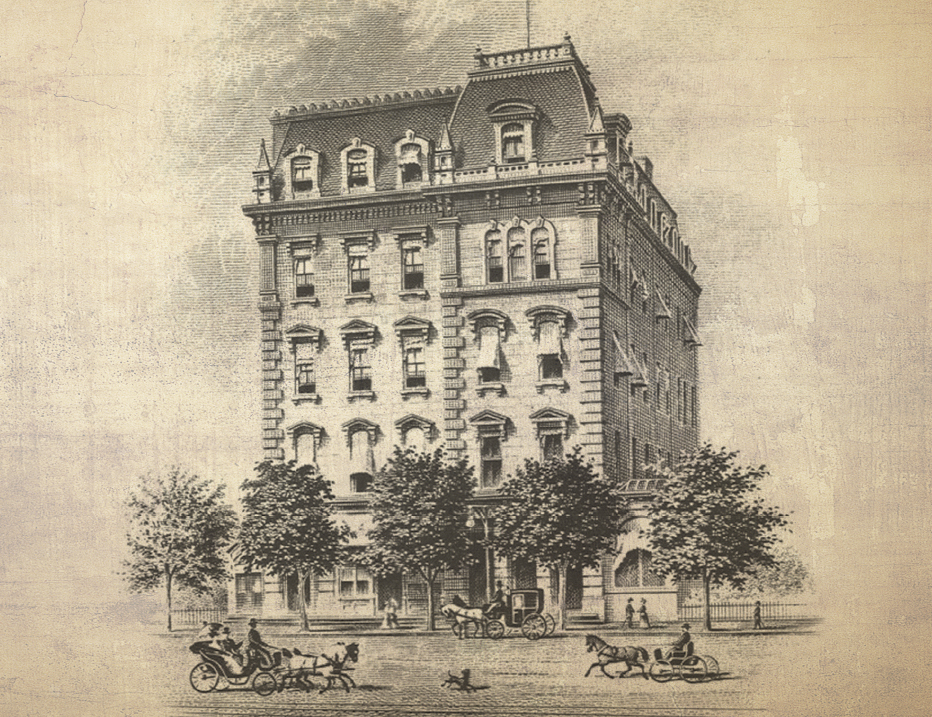
As the Civil War drew to a close, the United States Congress and President Lincoln recognized the need to aid newly freed black men and women in their transition to freedom. To support the land grants and other elements of the Freedman's Bureau Act, a Freedman's Bank was established to help newly freed Americans navigate their financial lives.
During it's existence, The Freedman's Bank maintained some 37 offices in 17 states, including the District of Columbia.
Seven years later, In June of 1872, the U.S. Congress voted to permanently close the Freedman's Bureau. The Bank however remained operational and in 1874 Frederick Douglass was asked to run the Freedman's Bank as its D.C. branch relocated to a new home across from the U.S. Department of Treasury, in a grand building.
When Douglass came on as the Bank's director however, he found rampant corruption within the Bank and risky investments across industries being made with depositor's savings. In a desperate attempt to stabilize the Bank, Douglass invested $10,000 of his personal funds, but sadly, later that year, in June of 1874 the Bank failed against the backdrop of the political forces that undermined Reconstruction. In the District alone over 3,000 depositors—both individuals and cultural institutions—lost their savings.
While the failure of the Freedman's Bank was tragic and left many African Americans with feelings of distrust of the American banking system, the records created by the bank are a rich source of documentation for black family research for the period immediately following the American Civil War. The records of twenty-nine branches of the Freedman's Savings Bank, including those of the Washington D.C. office, still survive today and are searchable at the National Archives.What make these records so important are the thousands of signature cards that contain personal data about the individual depositors.
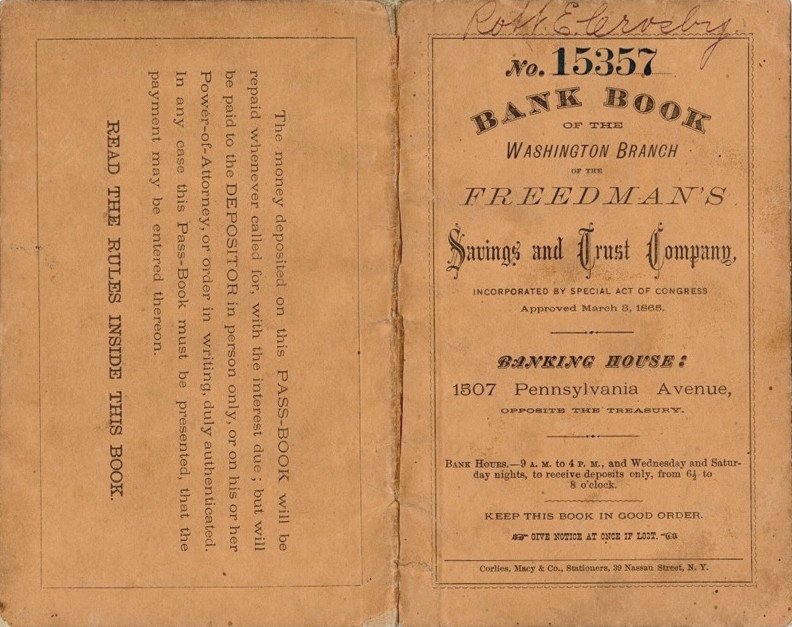
In addition to the names and ages of depositors, the files can contain their places of birth, residence, and occupations; names of parents, spouses, children, brothers, and sisters; and in some cases, the names of former slave owners.
https://www.archives.gov/research/african-americans/freedmans-bank.html
Renamed:
On On January 7, 2016, the Treasury Annex Building was renamed The Freedman's Bank Building, in honor of the site where the Freedman's Saving Bank once stood.

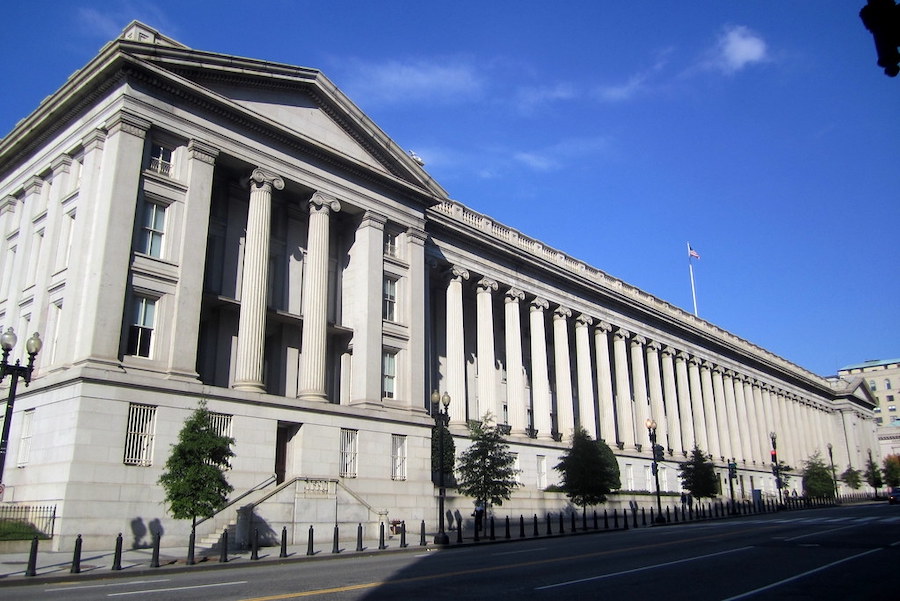
The Department of Treasury moved into a porticoed Gregorian-style building, designed by George Hadfield in 1800 when the federal government moved from Philadelphia. The structure was destroyed by the British in 1814, but rebuilt by James Hobson. It was again burned, this time by arsonists in 1833, with only the fireproof wing left standing.
Three years later, on July 4, 1836, Congress authorized construction of a new East and Center Wings. The most architecturally impressive feature of the Mills design is the 341-foot long colonnade of thirty 36-foot tall columns each one carved out of a single block of granite.
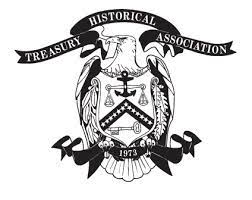 History of the Department of the Treasury:
History of the Department of the Treasury:The second oldest department in the Federal government, the United States Department of the Treasury was created by the Congress on September 2, 1789. Besides fulfilling its responsibility of managing money, the Department has performed many other functions in the past. Examples of agencies that have sprung from earlier Treasury organizations include portions of the Departments of Agriculture, Commerce, Health & Human Services, Homeland Security, the Interior, and Justice, as well as the General Services Administration, the Office of Management and Budget and, in the Legislative Branch, the Government Accountability Office.
Currently, Treasury consists of twelve bureaus and components, as well as the Departmental Offices (previously titled "Office of the Secretary"), with a total of over 103,000 employees (FY 2017). The primary activities of the Department include: economic and fiscal policy development; international and domestic economic research; government accounting; cash and debt management; supervision of financial institutions; production of currency, coins and commemorative medals; assessment and collection of taxes; and, fostering interagency and global cooperation against domestic and international financial crimes, as well as internal auditing and investigative functions.
https://treasuryhistoricalassn.org/index.php/treasury-history-tours/treasury-department
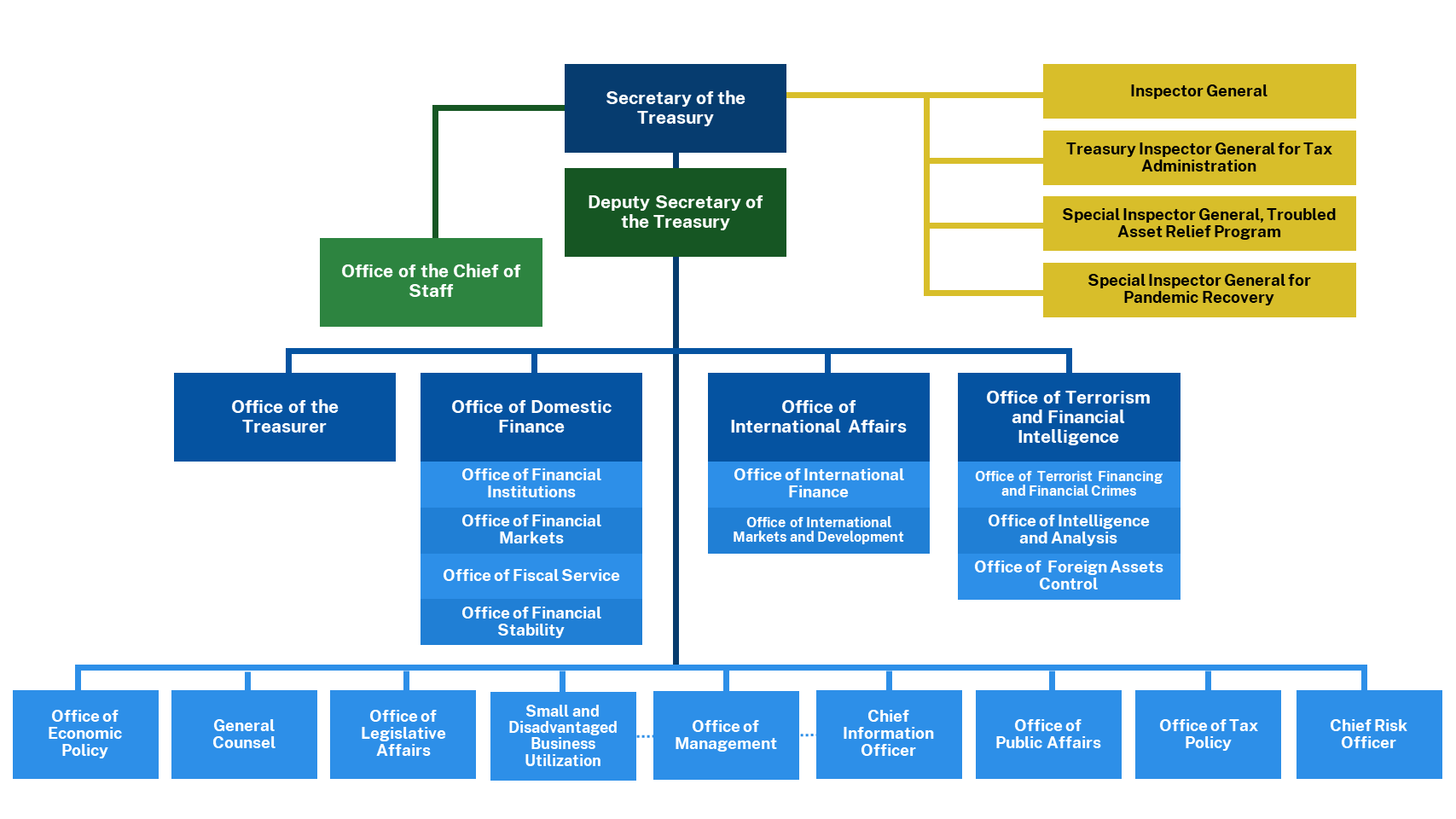
https://home.treasury.gov/system/files/136/treasury-org-chart.png
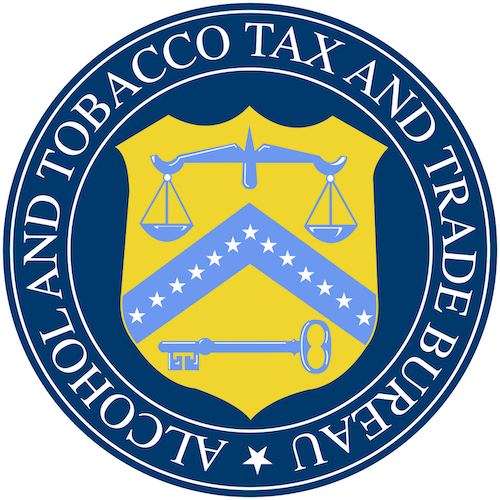 Alcohol and Tobacco Tax and Trade:
Alcohol and Tobacco Tax and Trade:The history of taxation and regulatory control on the alcohol and tobacco industries is as old as our nation itself. Since 1789, the United States Treasury Department and its Bureaus have played an integral role in writing its history and in defining our nation's identity. The Department's work with the alcohol and tobacco industries has been carried out by numerous agencies under just as many names, but those individuals serving to uphold the government's interests share in more than two centuries of dedicated service to the American people.
Today, the Department's work with the alcohol and tobacco industries is carried out by the Alcohol and Tobacco Tax and Trade Bureau. TTB was created in January of 2003, when the Bureau of Alcohol, Tobacco and Firearms was extensively reorganized under the provisions of the Homeland Security Act of 2002. The Act called for the tax collection functions to remain with the Department of the Treasury, and TTB was born.
TTB's mission is simple... to collect alcohol, tobacco, firearms, and ammunition excise taxes; to ensure that these products are labeled, advertised, and marketed in accordance with the law; and to administer the laws and regulations in a manner that protects the consumer and the revenue, and promotes voluntary compliance from industry members. And while TTB is the newest bureau under the Department, the roots of its vision and mission date back to the creation of the Treasury Department and the first Federal taxes levied on distilled spirits in 1791.
As such, TTB builds upon a rich history, one that is marked with accomplishment and success. After all, it was a Treasury agency that collected the first source of tax income for our new Republic: an excise tax on distilled spirits. These taxes, as called for by Alexander Hamilton, paid off our nation's debt in the Revolutionary War. It was the Treasury Department that found itself in the middle of the Whiskey Rebellion, an event that would later come to stand as the first true test of our Federal government's legitimacy.
Later, Treasury collected taxes and issued stamps for alcohol and tobacco products in order to finance the Civil War. And during the early part of the twentieth century, the Treasury Department enforced the Eighteenth Amendment, and through the work of agents like Eliot Ness, leader of "The Untouchables," brought to justice those who used the illegal liquor industry to finance organized crime.
Today, TTB employs some 600 people across the country, including our Headquarters Offices in Washington, D.C., and the National Revenue Center in Cincinnati, Ohio.
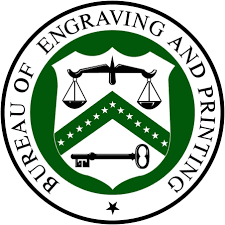 Bureau of Engraving and Printing:
Bureau of Engraving and Printing:As its primary function, the BEP prints billions of dollars - referred to as Federal Reserve notes - each year for delivery to the Federal Reserve System. The Federal Reserve operates as the nation's central bank and serves to ensure that adequate amounts of currency and coin are in circulation. The BEP does not produce coins - all U.S. coinage is minted by the United States Mint. The BEP also advises other federal agencies on document security matters. In addition, the BEP processes claims for the redemption of mutilated currency. The BEP's research and development efforts focus on the continued use of automation in the production process and counterfeit deterrent technologies for use in security documents, especially United States currency.
The BEP had its foundations in 1862 with workers signing, separating, and trimming sheets of United States Notes in the Treasury building. Gradually, more and more work, including engraving and printing, was entrusted to the organization. Within a few years, the BEP was producing Fractional Currency, revenue stamps, government obligations, and other security documents for many federal agencies. In 1877, the BEP became the sole producer of all United States currency. The addition of postage stamp production to its workload in 1894 established the BEP as the nation's security printer, responding to the needs of the U.S. government in both times of peace and war. Today, the BEP no longer produces government obligations or postage stamps, but it still holds the honor of being the largest producer of government security documents with production facilities in Washington, DC, and in Fort Worth, Texas.
| History of U.S. Currency |
|---|
| https://moneyfactory.gov/uscurrency/history.html |
1690 Colonial Notes:The Massachusetts Bay Colony, one of the 13 original colonies, issues the first paper money to cover costs of military expeditions. The practice of issuing paper notes spread to the other colonies. |
1739 Franklin's Unique Counterfeit Deterrent:Benjamin Franklin's printing firm in Philadelphia prints colonial notes with nature prints--unique raised impressions of patterns cast from actual leaves. This process added an innovative and effective counterfeit deterrent to notes, not completely understood until centuries later. |
1775 Continental Currency:The Continental Congress issues paper currency to finance the Revolutionary War. Continental currency was denominated in Spanish milled dollars. Without solid backing and easily counterfeited, the notes quickly lost their value, giving rise to the phrase "not worth a Continental." |
1792 Monetary System:The Coinage Act of 1792 creates the U.S. Mint and establishes a federal monetary system, sets denominations for coins, and specifies the value of each coin in gold, silver, or copper. |
1861 Greenbacks:The first general circulation of paper money by the federal government occurs. Pressed to finance the Civil War, Congress authorizes the U.S. Treasury to issue non-interest-bearing Demand Notes. All U.S. currency issued since 1861 remains valid and redeemable at full face value. |
1861 First $10 Bills – Demand Notes:The first $10 notes are Demand Notes, issued in 1861 by the Treasury Department. A portrait of President Abraham Lincoln is included on the face of the notes. |
1862 Treasury Department Authorization:The Treasury Secretary is authorized to engrave and print notes at the Treasury Department; the design of which incorporates fine-line engraving, intricate geometric lathe work patterns, a Treasury seal, and engraved signatures to aid in counterfeit deterrence. |
1862 Spencer Clark:Spencer M. Clark, Chief Clerk in the Treasury Department's Bureau of Construction, obtains presses for the Treasury's Loan Branch for overprinting seals on notes. About the same time, Clark experiments with two hand-crank machines for trimming and separating. Later that year, Treasury Secretary Salmon Chase directs Clark to proceed with trials using steam-powered machines to trim, separate, and seal $1 and $2 United States Notes. |
1863 National Banknotes:Congress establishes a national banking system and authorizes the U.S. Treasury to oversee the issuance of National Banknotes. This system sets federal guidelines for chartering and regulating "national" banks and authorizes those banks to issue national currency secured by the purchase of United States bonds. These notes are printed by private companies and finished by the BEP until 1875, when the BEP begins printing the faces. |
1863 Fractional Currency:Fractional Currency notes, in denominations of 5, 10, 25, and 50 cents, are issued. This is the first currency produced entirely at the Treasury Department. |
1864 Spencer Clark :The 5-cent note of the second issue of Fractional Currency features the portrait of Spencer Clark, causing a public uproar. It is unclear how Clark's portrait ended up on the note, but in 1866, Congress prohibits the portrait or likeness of any living person on currency notes, bonds, or securities. |
1865 United States Secret Service :The United States Secret Service is established as a bureau of the Treasury for the purpose of deterring counterfeiters whose activities are destroying the public's confidence in the nation's currency. The Secret Service is now part of the Department of Homeland Security. |
1865 Gold Certificates:Gold Certificates, backed by gold held by the Treasury, are first issued. Along with Fractional Currency, Gold Certificates are one of the first currency issues produced entirely by the BEP. |
1866 Revenue Stamps:The BEP begins producing revenue stamps to be placed on boxes of imported cigars. |
1869 United States Notes:The BEP begins engraving and printing the faces and seals of United States Notes, Series 1869. Prior to this time, United States Notes were produced by private banknote companies and then sent to the BEP for sealing, trimming, and cutting. |
1874 Bureau of Engraving and Printing:For the first time, Congress allocates money specifically to a "Bureau of Engraving and Printing" for fiscal year 1875. |
1876 All Revenue Stamps:Congress passes an appropriation bill that directs the Internal Revenue Service to procure stamps engraved and printed at the Bureau of Engraving and Printing – provided costs do not exceed that of private firms. As a result, the BEP begins producing almost all revenue stamps in fiscal year 1878. |
1877 All Currency:The BEP begins printing all United States currency. |
1878 Silver Certificates:Silver Certificates are first issued. Backed by silver held by the Treasury, the certificates are authorized by legislation directing an increase in the purchase and coinage of silver. |
1880 First Facility:The first building constructed specifically for BEP operations is completed at the corner of 14th Street and B Street (Independence Avenue). |
1890 Treasury Coin Notes:Treasury Notes, also known as Treasury Coin Notes, are first issued as part of legislation requiring the Treasury Secretary to increase government purchases of silver bullion. |
1894 Postage Stamps:The BEP begins printing postage stamps. The first BEP-printed stamp issued is the 6 cent President Garfield. |
1900 Postage Stamps:The first issue of postage stamps in small booklets is produced. |
1905 Paper Currency with Background Color:The last United States paper money printed with background color is the $20 Gold Certificate, Series 1905, which had a golden tint and a red seal and serial number. |
1912 Offset Printing:Offset printing is first used in the BEP for the production of checks, certificates, and other miscellaneous items. |
1913 Federal Reserve Act:The Federal Reserve Act of 1913 establishes the Federal Reserve as the nation's central bank and provides for a national banking system that is more responsive to the fluctuating financial needs of the country. Federal Reserve Bank Notes are authorized by the Federal Reserve Act and used as a form of emergency currency in the early twentieth century. The Board of Governors of the Federal Reserve System then issues new notes called Federal Reserve notes. |
1914 The first $10 Federal Reserve Notes:The first $10 Federal Reserve notes are issued. These notes are larger than today's notes and feature a portrait of President Andrew Jackson on the face. |
1914 New DC Facility:The BEP moves into a new, larger facility, later known as the "main" building. |
1929 Federal Reserve Note Standardized Design:The first sweeping change to affect the appearance of all paper money occurs in 1929. In an effort to lower manufacturing costs, all Federal Reserve notes are made about 30 percent smaller. The reduced size enables the BEP to convert from eight to 12 notes per sheet. In addition, standardized designs are instituted for each denomination across all classes of currency, decreasing the number of different designs in circulation. This standardization makes it easier for the public to distinguish between genuine and counterfeit notes. |
1938 Annex Building:BEP operations begin in the "annex" building. The building is officially dedicated in November, 1938. |
1939 Food Stamps:The BEP begins printing Food Order and Surplus Food Order stamps. The Cotton Order and Surplus Cotton Order stamps follow in 1940. The stamps encourage consumption of surplus farm commodities while providing assistance to low-income consumers. |
1942 Hawaii Overprints:The BEP receives an order for special $1, $5, $10, and $20 notes overprinted with the word "Hawaii." The overprinted notes replace regular currency in Hawaii. In the event of enemy occupation of the islands, the overprinted currency can be declared worthless. |
1943 Allied Military Currency:The War Department places an order for Allied Military Currency (AMC). The first AMCs are used by Allied forces in Italy. Production begins in July, 1943. |
1946 Military Payment Certificates:The BEP begins work on Military Payment Certificates for use by U.S. troops. |
1951 Congressional Appropriations:The BEP begins operating on a reimbursable basis in accordance with a legislative mandate to convert to business-type accounting methods. As a result, annual Congressional appropriations cease. |
1952 18-Subject Sheets:The BEP begins conversion from 12- to 18-subject sheets in currency production. The use of larger sheets is made possible by new non-offsetting ink. By reducing wetting and drying operations, distortion of paper is decreased. By September 1953, all currency is produced from 18-subject plates. |
1957 In God We Trust:Following a 1955 law that requires "In God We Trust" on all currency, the motto first appears on paper money on series 1957 $1 silver certificates, then on 1963 series Federal Reserve notes. |
1957 32-Subject Sheets:The BEP begins producing currency on high-speed rotary presses that print notes via the dry intaglio process. Paper distortion caused by wetting is now completely eliminated and sheet sizes increase from 18- to 32-subjects. The first notes printed by this process are the series 1957 silver certificates. |
1968 Barr Notes:Joseph W. Barr served as Secretary of the Treasury from December 21, 1968 to January 20, 1969. There are fewer notes bearing his facsimile signature than notes imprinted with signatures of other Secretaries of the Treasury because of his short tenure in that office. |
1969 High-Denomination Notes:The Treasury Secretary announces that currency in denominations larger than $100 will no longer be issued. Last printed in 1945, the high-denomination notes had been used mainly by banking institutions, but advances in bank transfer technologies preclude their further use. |
1976 $2 Federal Reserve Note:The $2 Federal Reserve note is re-introduced on the 233rd anniversary of Thomas Jefferson's birth. Issuance of the $2 United States Note had been halted in 1966 as United States Notes were phased out of existence. |
1990 Security Thread and Microprinting:A security thread and microprinting are introduced to deter counterfeiting by advanced copiers and printers. The features first appear in Series 1990 $100 notes. By Series 1993, the features appeared on all denominations except $1 and $2 notes. |
1990 Western Currency Facility:The BEP's Western Currency Facility in Fort Worth, Texas begins producing currency. It is the first government facility outside Washington, DC to print United States paper money. The facility is intended to better serve the currency needs of the western half of the nation and to act as a contingency operation in case of emergencies at the DC facility. |
1996 Currency Redesign:In the first significant design change in 67 years, United States currency is redesigned to incorporate a series of new counterfeit deterrents. The new notes are issued beginning with the $100 note in 1996, followed by the $50 in 1997, the $20 in 1998, and the $10 and $5 notes in 2000. |
2003 Redesigned $20 Note:For the first time since the Series 1905 $20 Gold Certificate, the new currency features subtle background colors, beginning with the redesigned $20 note on October 9, 2003. The redesigned $20 note features subtle background colors of green, peach and blue, as well as images of the American eagle. |
2004 Redesigned $50 Note:The currency redesigns continue with the $50 note, issued on September 28, 2004. Similar to the redesigned $20 note, the redesigned $50 note features subtle background colors and highlights historical symbols of Americana. Specific to the $50 note are background colors of blue and red, and images of a waving American flag and a small metallic silver-blue star. |
2005 Final Postage Stamp Run:The BEP produces its final run of postage stamps, printing the 37-cent Flag on the Andreotti gravure press. |
2006 Redesigned $10 Note:A redesigned Series 2004A $10 note is issued on March 2, 2006. The A in the series designation indicates a change in some feature of the note, in this case, a change in the Treasurer's signature. Like the redesigned $20 and $50 notes, the redesigned $10 note features subtle shades of color and symbols of freedom. Specific to the $10 note are background colors of orange, yellow and red, and images of the Statue of Liberty's torch and the words, We the People, from the United States Constitution. |
2008 Redesigned $5 Note:A redesigned Series 2006 $5 note is issued on March 13, 2008. The redesigned $5 note retains two of the most important security features first introduced in the 1990s: the watermark and embedded security thread. |
2013 Redesigned $100 Note:On October 8, the Board of Governors of the Federal Reserve System issues the redesigned $100 note. Complete with advanced technology to combat counterfeiting, the new design for the $100 note retains the traditional look of U.S. currency. |
2014 50-Subject Printing:On February 14, the BEP ushers in a new era by completing its first $1 note 50-subject production order. Fifty-subject and 32-subject notes are distinguishable by one minor technical change. On a 50-subject produced note, the letter and number of the alpha numeric note-position identifier, is the same font size and smaller than the alpha letter of the 32-subject note. In comparison, on the 32-subject note, the number is a smaller font size compared to the letter. |
 Bureau of the Fiscal Service:
Bureau of the Fiscal Service:Right before World War II, in 1939, President Franklin Roosevelt began a reorganization of the executive department. The president consolidated all Treasury financing activities into a "Fiscal Service" under the direction of a fiscal assistant secretary.
These activities included accounts, deposits, bookkeeping, warrants, loans, currency, disbursements, surety bonds, savings bonds, and the public debt.
By 1940, the Fiscal Service consisted of the Bureau of Accounts, the Bureau of the Public Debt, and the Office of the Treasurer—all under the direction of the fiscal assistant secretary.
A 1974 reorganization of the Fiscal Service created the Bureau of Government Financial Operations, which consolidated most of the functions of the Office of the Treasurer.
In 1984, the Bureau of Government Financial Operations was renamed the Financial Management Service (FMS). The new name reflected Treasury's aim to achieve greater efficiency and economy in government financial management.
During this time, the Bureau of the Public Debt (BPD) continued to track, account for, and manage the various elements of the public debt structure first established by George Washington's Secretary of the Treasury, Alexander Hamilton.
On October 7, 2012, Treasury Secretary, Timothy Geithner issued Treasury Order 136-01 [ https://home.treasury.gov/about/general-information/orders-and-directives/treasury-order-136-01 ] creating the Bureau of the Fiscal Service, consolidating the operations of the Bureau of the Public Debt and the Financial Management Service.
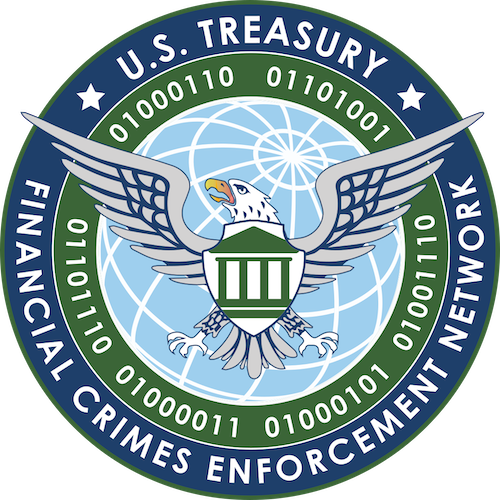 Financial Crimes Enforcement Network:
Financial Crimes Enforcement Network:FinCEN is a bureau of the U.S. Department of the Treasury. The Director of FinCEN is appointed by the Secretary of the Treasury and reports to the Treasury Under Secretary for Terrorism and Financial Intelligence. FinCEN's mission is to safeguard the financial system from illicit use and combat money laundering and promote national security through the collection, analysis, and dissemination of financial intelligence and strategic use of financial authorities.
FinCEN carries out its mission by receiving and maintaining financial transactions data; analyzing and disseminating that data for law enforcement purposes; and building global cooperation with counterpart organizations in other countries and with international bodies.
FinCEN exercises regulatory functions primarily under the Currency and Financial Transactions Reporting Act of 1970, as amended by Title III of the USA PATRIOT Act of 2001 and other legislation, which legislative framework is commonly referred to as the "Bank Secrecy Act" (BSA).
The basic concept underlying FinCEN's core activities is "follow the money." The primary motive of criminals is financial gain, and they leave financial trails as they try to launder the proceeds of crimes or attempt to spend their ill-gotten profits. FinCEN partners with law enforcement at all levels of government and supports the nation's foreign policy and national security objectives. Law enforcement agencies successfully use similar techniques, including searching information collected by FinCEN from the financial industry, to investigate and hold accountable a broad range of criminals, including perpetrators of fraud, tax evaders, and narcotics traffickers. More recently, the techniques used to follow money trails also have been applied to investigating and disrupting terrorist groups, which often depend on financial and other support networks.
FinCEN's insignia has FinCEN spelled out in binary code
 Internal Revenue Service:
Internal Revenue Service:
Four primary IRS Divisions:
- Wage and Investment
- Large Business and International
- Small Business/Self-Employed
- Tax-Exempt and Government Entities
Other principal offices:
- Office of Chief Counsel
- Criminal Investigation
- Appeals
- Return Preparer Office
- Office of Professional Responsibility (OPR)
- Communications and Liaison
- Whistleblower Office
- Privacy, Governmental Liaison and Disclosure
- Equity, Diversity and Inclusion
- Procurement
https://www.irs.gov/about-irs/at-a-glance-irs-divisions-and-principal-offices
| IRS History Timeline: |
|---|
| https://www.irs.gov/irs-history-timeline |
1787 - 1789 Evolution of Taxation:On February 21, 1787, Congress approved a Constitutional Convention to revise the Articles of Confederation: "... the Congress shall have the power to lay and collect taxes, duties, imposts, and excesses, to pay the debts and provide for the common defense and general welfare of the United States." On September 2, 1789, Congress established the Department of the Treasury and appointed Alexander Hamilton as the first Secretary. |
1794 The Whiskey Rebellion:1794 saw the first outright challenge to the U.S. government's revenue laws when a federal court summoned 75 distillers in western Pennsylvania to appear in court and explain why they shouldn't be arrested for whiskey tax evasion. The Whiskey Rebellion set up a clash between citizens and federal officers. The federal government prevailed, but at a cost of $1.5 million to American taxpayers. |
1812 - 1817 The War of 1812:To pay for the War of 1812, Congress passed new internal taxes on refined sugar, carriages, distillers and auction sales and reinstated the Commissioner of the Revenue to collect them. On August 24, 1814, the British burned the Treasury building in Washington, D.C. On December 23, 1817, Congress repealed these and all remaining internal taxes and abolished the position of the Commissioner of the Revenue and all offices to collect them |
1836 - 1842 The Treasury Gets a New Home:Construction began on a new Treasury building in 1836. The first segment opened in 1842. |
1862 Civil War Expenses:On July 1, 1862, President Lincoln signed the second revenue measure of the Civil War into law. This law levied internal taxes and established a permanent internal tax system. Congress established the Office of the Commissioner of Internal Revenue under the Department of the Treasury. On July 17, 1862, George S. Boutwell became its first commissioner. |
1863 - 1864 Property Seizures and Tax Refunds:In its first year, 1863, the Office of the Commissioner of Internal Revenue collected $39.1 million. The Revenue Act of June 30, 1864, authorized the Commissioner of Internal Revenue to compromise all suits "relating to internal revenue," to abate outstanding assessments and to refund taxes subject to current regulations |
1867 State-of-the-Art Technology:In February 1867, the Secretary of the Treasury adopted a hydrometer to establish a uniform system to inspect and gauge alcoholic spirits subject to tax. The March 1, 1867 Revenue Act authorized the Secretary of the Treasury to adopt, procure and prescribe these and other weighing and gauging instruments to prevent and detect fraud by spirit distillers. |
1870 Personal Privacy:Representative (later president) James Garfield of Ohio spearheaded an effort to make tax information private. On April 5, 1870, IRS Commissioner Delano forbade tax assessors from furnishing lists of taxpayers for publication. On July 14, 1870, Congress passed a revenue act stating, "no collector ... shall permit to be published in any manner such income returns or any part thereof, except such general statistics ..." |
1913 First Federal Income Tax:On February 25, 1913, the 16th Amendment officially became part of the Constitution, granting Congress constitutional authority to levy taxes on corporate and individual income. The Bureau of Internal Revenue established a Personal Income Tax Division and Correspondence Unit to answer a flood of questions about its enforcement, and a special division within General Counsel to prepare opinions interpreting internal revenue laws. |
1914 Form 1040:On January 5, 1914, the Treasury Department unveiled the four-page form (including instructions) for the new income tax. The form was numbered 1040 in the ordinary stream of numbering forms in sequential order. In the first year, no money was to be returned with the forms. Instead, each taxpayer's calculations were verified by field agents, who sent out bills on June 1. Tax payments were due by June 30 |
1917 Public Awareness:In 1917, the Internal Revenue Bureau launched a special nationwide public education program to help citizens understand the new tax burden. The campaign tried to popularize war taxes by emphasizing the needs of the country and appealing to national pride and patriotism. "Four Minute Men" fanned out across the nation, preaching the importance of paying taxes promptly and fully. |
1919 Prohibition:Congress passed the National Prohibition Enforcement Act on October 27, 1919. It prohibited the manufacture, sale, and use of intoxicating beverages. It also designated the Bureau of Internal Revenue as the enforcement agency. The Bureau hired and trained hundreds of prohibition agents to enforce the law and created a new intelligence unit to uncover corrupt prohibition agents and bootleggers |
1930 Bureau of Internal Revenue Gets New Home:On June 1, 1930, the main section of the new Internal Revenue building opened, 16 months ahead of schedule and with a total construction cost of just over $6 million. In addition to a state-of-the-art fire alarm system, it contained 1,400 telephones and a synchronized system of 861 clocks, the largest system of its kind at the time. |
1931 Al Capone:American gangster Alphonse "Al" Capone attained fame during the Prohibition era by raking in millions of dollars through bootlegging and other illicit activities. In 1931, an IRS Intelligence Unit investigation led to his indictment on federal income tax evasion and violations of the Volstead Act. He pled guilty, was convicted, and sentenced to 11 years in federal prison, a $50,000 fine, and ordered to pay $215,000 plus interest on back taxes. |
1935 Payroll Withholding:On August 14, 1935, Franklin D. Roosevelt signed the Social Security Act. Employees originally paid one percent of the first $3,000 of their salaries to finance the benefits. The law required a new system of tax withholding, which the Bureau of Internal Revenue had to collect and turn over to the Social Security Trust Fund. It also created an unemployment compensation program and laid the foundation for modern payroll withholding |
1942 Victory Tax:The Roosevelt administration hoped to pay for at least half the cost of World War II by increased taxation. The 1942 Revenue Act sharply increased most existing taxes, introduced the Victory tax (a 5 percent surcharge on all net income over $624 with a postwar credit), lowered exemptions and began provisions for medical and dental expenses and investors' expense deductions. Still, taxes only funded 43 percent of the war's cost, 7 percent short of the goal. |
1948 -1950 Early Tax Collection Modernization:In 1948, the Bureau introduced punch-card equipment to process notices. They also introduced photocopying to reduce the typing workload and relieve a typist and stenographer shortage. In 1949, the IRS introduced electric typewriters, continuous forms, dual-roller platens and posting machines to more efficiently process income tax returns. By 1950, the Bureau introduced computers for tabulation. |
1953 Internal Revenue Service Created:In 1952, President Harry S. Truman called for a comprehensive reorganization of the Bureau of Internal Revenue. The agency officially became the Internal Revenue Service on July 9, 1953. |
1950 - Present Taxpayer Communication and Support:During the 1950s, the Service primarily interacted with taxpayers through written and print communication using the U.S. Postal Service and walk-in offices. Walk-in offices, or Tax Assistance Centers (TAC), continue to help taxpayers today. |
1953 - 1959 Public Outreach:In 1953, the IRS began the "Teaching Taxes" program by mailing a tax kit with teaching text, enlarged copies of tax return forms and regular return forms to 30,000 junior and senior high school principals. By 1959, the IRS offered public service announcements to television and radio stations throughout the entire year, not just during filing season. |
1959 - 1962 IRS Modernizes Data Processing:In 1959, Congress and the Secretary of the Treasury approved IRS plans to install a nationwide automatic data processing system. By January 1962, automated data processing entered full operation, processing up to 680,000 characters per second |
1961 President Kennedy Visits IRS:On May 1, 1961, President John F. Kennedy attended the Joint Conference of Regional Commissioners and District Directors of the IRS. The only U.S. president to visit IRS headquarters, President Kennedy praised the Service for pursuing fair taxation in the promotion of national interest. |
1962 Tingle Table Invented:For over 50 years, Tingle Tables have saved taxpayers millions of dollars by reducing the time it takes IRS employees to sort through individual paper-filed returns. In 1962, James Tingle invented the table while working in an IRS Service Center. Mr. Tingle built the prototype in his backyard. Still in use today, over 15 million tax returns flowed through the tables during the 2019 tax filing season. |
1966 - 1967 Taxpayer Service:The toll-free telephone network system, piloted in 1966, eventually allowed the IRS to handle most taxpayer inquiries by phone. On January 1, 1967, the IRS launched a nationwide, automated federal tax system. That same year, the IRS established a long-range study to determine automated data processing requirements through 1970 and beyond. |
1972 - Present Reaching More Taxpayers:In 1972, the IRS began to offer tax information in Spanish. Over time, translations expanded to include additional languages in print and on IRS.gov. In 1976, the Service offered toll-free telephone and teletypewriter service to the deaf and hard of hearing. Today, the IRS provides support through social media channels, relay services, American Sign Language YouTube videos, and at Volunteer Individual Tax Assistance Centers. |
1978 Faster, More Accurate Service:In 1978 the IRS installed a Remittance Processing System (RPS) and an Omnisort mail sorting system in all service centers. The system automated the sorting and opening of incoming tax returns at a rate of 22,000 pieces of mail per hour with a 98 percent accuracy rate. In contrast, the top speed of the manual sort process it replaced was 1,200 pieces per hour. |
1986 Tax Reform Act of 1986:U.S. Congress passed the Tax Reform Act to "simplify the income tax code." The Service marked a pivotal change in the way it interacted with taxpayers by beginning the progression from paper-based filing to electronic filing. |
1988 Service Design:In 1978, the IRS studied the economic, social and behavioral factors that impact taxpayer compliance. In 1986, the IRS established an artificial intelligence laboratory as part of an initiative to explore potential applications of new technologies to tax processing. In 1988, the IRS revised its "Understanding Taxes" program for high school students to include computer software and video programs in the instructional materials. |
1988 Taxpayer Rights:In 1988, the IRS published Publication 1, Your Rights as a Taxpayer, which required the IRS to fully inform taxpayers of their rights as a taxpayer and the processes for examination, appeal, collection, and refunds. |
1991 Electronic Filing:The IRS started electronic filing to lower operating costs and paper use. The Service anticipated over 90% of 150 million individual returns would be filed electronically for the 2019 tax-filing season. |
1994 IRS Bulletin Board System:The National Technical Information Service (NTIS) established FedWorld in 1992 to serve as the online locator service for an extensive inventory of information distributed by the federal government. Two years later in 1994, NTIS launched a Bulletin Board System (BBS) to support the IRS, giving the Service the ability to provide forms and publications online. |
1996 - 2018 Digital Daily:The Digital Daily was the first presence of the IRS on the World Wide Web. It had a warm and humorous tone, and a design that resembled a newspaper. The site grew and evolved into IRS.gov, which had more than 609 million visits in 2018. |
1998 Restructuring and Reform Act of 1998:The IRS Restructuring and Reform Act of 1998 prompted the most comprehensive reorganization and modernization of the IRS in nearly half a century. The IRS reorganized itself in 2000 to closely resemble the private sector, creating four major business divisions, each aligned to a group of taxpayers with similar needs. |
2001 - 2007 Digital Tools for Taxpayers:The IRS leaned into digital innovation, launching multiple tools:
|
2002 - 2013 Online Payments:To keep up with digital demand, the IRS introduced two applications that allowed taxpayers to pay their bills online.
|
2004 - 2008 Digital Tools for Tax Professionals:In a continued effort to move toward a paperless filing process, the IRS launched digital solutions for tax professionals.
|
2010 IRS Student Aid Tool:The Department of Education and the IRS collaborated to build a tool that enabled students and parents to transfer tax information from the IRS directly to their Free Application for Federal Student Aid (FAFSA) online application, streamlining the student aid application experience. |
2011-2015 IRS Goes Mobile:As taxpayers moved toward mobile devices, the IRS developed applications to meet demand. In January 2011, the IRS launched its first native mobile application, IRS2Go. The app initially allowed taxpayers to check the status of their refunds and returns from their mobile devices. Subsequent updates let users access free tax preparation assistance, link to IRS news and use the app in Spanish. |
2014 Taxpayer Bill of Rights:In 2014, Commissioner John Koskinen and Taxpayer Advocate Nina E. Olson released an enhanced Taxpayer Bill of Rights. Written to be clear, understandable and accessible for both taxpayers and IRS employees, the updated document grouped the dozens of existing rights in the tax code into ten fundamental rights. The Taxpayer Bill of Rights is displayed in IRS offices across the country as a reminder that "respecting taxpayer rights continues to be a top priority for IRS employees." |
2016 Tax Design Challenge:IRS hosted its first crowdsourcing competition that encouraged innovative ideas for the taxpayer experience of the future. Of 48 submissions, winners from California, Minnesota and Washington, D.C., were among those selected in categories covering:
|
2016 Online Account:In November 2016, the IRS launched Online Account, a self-service application that allows taxpayers to check the amount they owe, see their payment history for the last two years, view a snapshot of their most recently filed tax return and link to payment options or full transcripts. |
2017 IRS.gov Redesigned:In August 2017, the IRS.gov team launched a major refresh of the website. The new site was designed to be accessible for people with disabilities, viewable on mobile devices and organized for taxpayers to quickly find what they need. |
2017 Tax Cuts and Jobs Act:On December 22, 2017, President Donald J. Trump signed into law H.R. 1, known as the Tax Cuts and Jobs Act, the most significant piece of tax reform legislation in decades. Today, the IRS continues its mission to provide America's taxpayers with top quality service by helping them understand and meet their tax responsibilities and enforce the law with integrity and fairness to all. |
2018 IRS Social Media:As part of its mission to help taxpayers understand and meet their tax responsibilities, the IRS added Instagram to its social media portfolio in late 2018. The @IRSnews account brings new audiences closer to tax topics that affect all taxpayers. The Service also has an established presence on:
|
2018 New 1040:As part of a larger effort to help taxpayers, the Internal Revenue Service streamlined the Form 1040 into a shorter, simpler form. In December 2018, the IRS released the redesigned Form 1040 and six accompanying schedules for taxpayers with more complicated returns. This new Form 1040 retired the use of Form 1040-A and Form 1040-EZ for tax year 2018. |
2019 Criminal Investigation Centennial:In 1919, the Treasury Secretary asked the IRS Commissioner to form a criminal investigation unit to go after tax cheats and other criminals. 100 years later, Criminal Investigation (CI) special agents continue to bring down the most notorious criminals. CI remains the only law enforcement agency with the authority to investigate tax crimes—and has earned the reputation as the premier financial investigation unit in the world. |
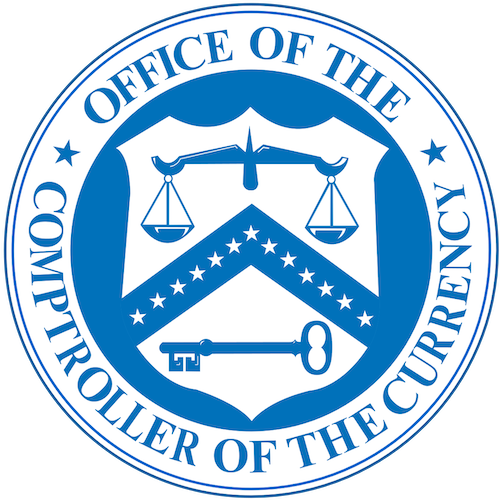 Office of the Comptroller of the Currency:
Office of the Comptroller of the Currency:The OCC ensures that national banks and federal savings associations operate in a safe and sound manner, provide fair access to financial services, treat customers fairly, and comply with applicable laws and regulations. It supervises nearly 1,200 national banks, federal savings associations, and federal branches and agencies of foreign banks that serve consumers, businesses, and communities across the United States and conducts approximately 70 percent of banking activity in the country. These banks range from community banks serving local neighborhood needs to the nation's largest most internationally active banks.
The Comptroller also serves as a Director of the Federal Deposit Insurance Corporation and a member of the Financial Stability Oversight Council and the Federal Financial Institutions Examination Council.
February 25, 1863:
President Lincoln signed the National Currency Act into law, creating the Office of the Comptroller of the Currency and charging it with responsibility for organizing and administering a system of nationally chartered banks and a uniform national currency.
President Abraham Lincoln recognized that the United States' fragmented banking and monetary system needed tighter structure and order.
President Lincoln recognized that unreliable paper money and inadequate credit was problematic. Along with his Treasury Secretary, Salmon P. Chase, he conceived the national banking system and the Office of the Comptroller of the Currency to regulate and supervise it.
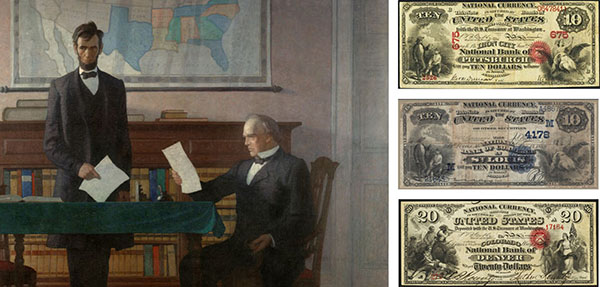
Through the National Bank Act, Congress sought to achieve both short- and long-term goals. One crucial objective was to generate cash desperately needed to finance and fight the Civil War. After prospective national bank organizers submitted a business plan and had it approved by the OCC, they were required to purchase interest-bearing U.S. government bonds in an amount equal to one-third of their paid-in capital. Millions of much-needed dollars flowed into the Treasury in this manner.
But the national banking system was also designed to achieve longer term economic goals. Under the new system, the purchased bonds were to be deposited with the Treasury, where they were held as security for a new kind of paper money: national currency. Bearing the name of the issuing national bank and the signatures of its officers, these notes were otherwise identical in design, size, and coloration. Anyone holding a national bank note could present it for redemption in, gold or silver coin, at the issuing bank or at reserve banks around the country. If, for whatever reason, the issuing bank was unable to meet the demand for cash redemption, the system was set up so that the government could sell the bank's bonds and pay off the noteholders directly.
Once accepting and holding national currency became essentially risk-free, it gained in public confidence and circulated throughout the nation. This represented a marked improvement over the pre-Civil War money supply, which had involved thousands of different varieties of paper money issued by local banks, rampant counterfeiting, chronic uncertainty about the value of paper money, and, as a result, difficulty conducting private business. Through the more orderly national money and banking system, Congress sought to promote economic growth and prosperity and a stronger sense of American nationalism.
Shortly after the turn of the 20th century, the country adopted a new currency system based on Federal Reserve notes, which were obligations of the government rather than individual banks. With that change, national currency faded in importance, and the OCC's mission focused increasingly on the safety and soundness of national banks.
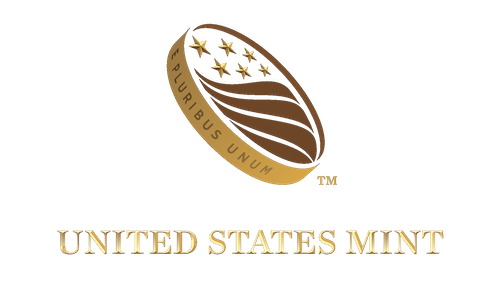 U.S. Mint:
U.S. Mint:On April 2, 1792, Congress passed the Coinage Act, establishing the first national mint in the United States. During the Colonial Period, monetary transactions were handled using foreign or colonial currency, livestock, or produce. After the Revolutionary War, the U.S. was governed by the Articles of Confederation, which authorized states to mint their own coins.
In 1788, the Constitution was ratified by a majority of states and discussions soon began about the need for a national mint. Congress chose Philadelphia, what was then the nation's capital, as the site of the first Mint. It was the first federal building erected under the Constitution. Coin production began immediately. The Act specified the following coinage denominations:
- In copper: half cent and cent
- In silver: half dime, dime, quarter, half dollar, and dollar
- In gold: quarter eagle ($2.50), half eagle ($5), and eagle ($10)
In March 1793, the Mint delivered its first circulating coins: 11,178 copper cents.
In 1795, the Mint became the first federal agency to employ women: Sarah Waldrake and Rachael Summers were hired as adjusters
Southern Branch Mints:
In the early 1800s, America experienced its first two gold rushes: first in North Carolina and then in Georgia. Demand on the Philadelphia Mint to melt, refine, and produce coins from this gold pushed the Mint to its limits. In 1835, Congress passed legislation to establish three new branch Mints located in Charlotte, NC; Dahlonega, GA; and New Orleans, LA.
In 1861 at the beginning of the Civil War, the Confederacy gained control of these three facilities, sporadically making Confederate coinage before converting all of them to assay offices. The U.S. regained possession of the facilities in 1862. Dahlonega never reopened, and Charlotte opened briefly in the 1870s as an assay office. The New Orleans Mint opened in 1879 to produce silver and gold coins until it stopped coining operations in 1909.
Mint Expands West:
In 1849, the California Gold Rush brought a flood of people west for the chance to get rich. Transporting the gold east all the way to the Philadelphia Mint was time-consuming and fraught with risk. In 1854, a branch Mint opened in San Francisco to convert the miners' gold into coins. By the end of that year, the San Francisco Mint produced $4,084,207 in gold coins.
Denver:
Gold fever spread to Colorado in 1858, bringing hundreds of people to settle around the new city of Denver. In 1862, Congress approved a branch Mint in Denver and bought the building of Clark, Gruber and Company, a private mint. The following year, the Denver facility opened as an assay office for miners to bring gold to be melted, assayed, and cast into bars. It didn't produce any gold coins, as was originally intended. In 1895, Congress converted the Denver facility back to a Mint, and in 1906 it produced its first gold and silver coins.
Carson City:
The country's largest silver strike, referred to as the Comstock Lode, started in Nevada in 1859. Congress authorized a branch Mint in nearby Carson City. The Carson City Mint opened in 1870 to accept deposits from the Comstock Lode and to mint coins. During its operation, it produced eight different coin denominations. Congress withdrew its mint status in 1899 when the Comstock's ore declined, but it continued as an assay office until 1933.
Fort Knox:
The Mint's demand for the gold and silver needed to produce coins in increasing quantity for the growing U.S. population meant that there needed to be a secure location to store the country's bullion. In 1936, the Fort Knox Bullion Depository opened in Kentucky.
Today:
The Mint maintains production facilities in Philadelphia, San Francisco, Denver, and West Point, and a bullion depository in Fort Knox.
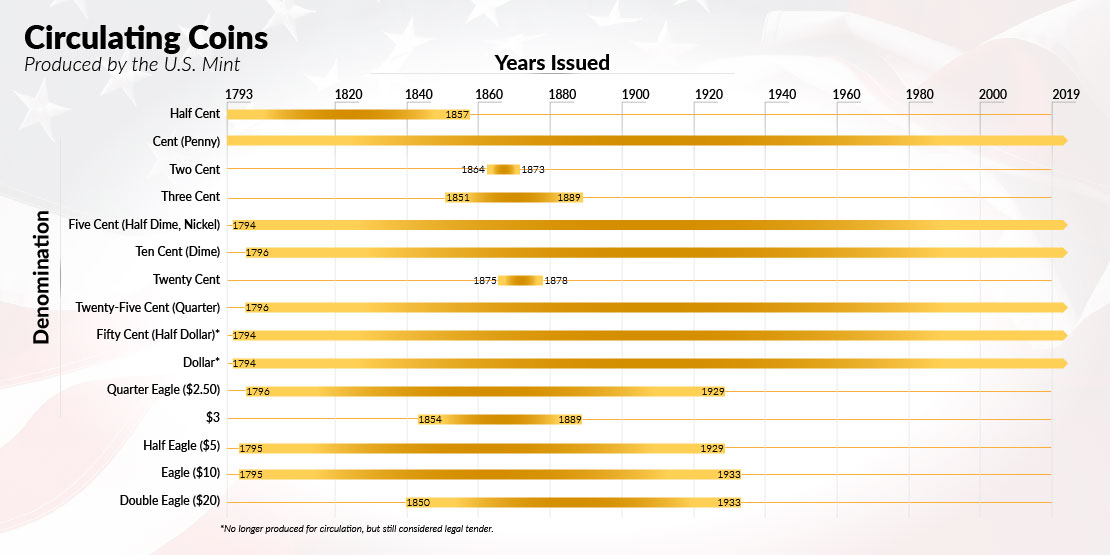
U.S. circulating coins began long before the opening of a national mint in 1792. Before national coinage, a mix of foreign and domestic coins circulated, both during the Colonial Period and in the years following the Revolutionary War. After Congress established the U.S. Mint in 1792, the Mint struggled for many years to produce enough coins. Finally, production numbers grew to meet the demands of a growing nation, providing some of the most beloved circulating coin designs.
Colonial Period:
During the Colonial Period, a variety of coins circulated, including British pounds, German thalers, Spanish milled dollars, and even some coins produced by the colonies. Spanish milled dollars became a favorite because of the consistency of the silver content throughout the years. To make change for a dollar, people sometimes cut the coin into halves, quarters, eighths, and sixteenths to match the fractional denominations that were in short supply.
After the Revolutionary War:
The Articles of Confederation governed the country. The Articles allowed each state to make their own coins and set values for them, in addition to the foreign coins already circulating. This created a confusing situation, with the same coin worth different amounts from state to state.
Fugio cents:
In 1787, after much debate about national coinage, Congress authorized the production of copper cents. Called Fugio cents, the coins featured a sundial on the obverse and a chain of 13 links on the reverse. However, the following year, a majority of states ratified the Constitution, establishing a new government and creating a new debate over national coinage.
Coinage Act of 1792:
The Coinage Act of 1792 established a national mint located in Philadelphia. Congress chose decimal coinage in parts of 100, and set the U.S. dollar to the already familiar Spanish milled dollar and its fractional parts (half, quarter, eighth, sixteenth). This resulted in coins of the following metals and denominations:
- Copper: half cent and cent
- Silver: half dime, dime, quarter, half dollar, and dollar
- Gold: quarter eagle ($2.50), half eagle ($5), and eagle ($10)
March 1, 1793:
In 1792, during construction of the new Mint, 1,500 silver half dimes were made in the cellar of a nearby building. These half dimes were probably given out to dignitaries and friends and not released into circulation. The Mint delivered the nation's first circulating coins on March 1, 1793: 11,178 copper cents.
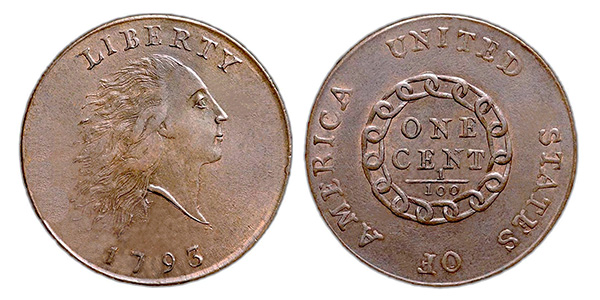
These new cents caused a bit of a public outcry. They were larger than a modern quarter, a bulky size for small change. The image of Liberty on the obverse showed her hair steaming behind her and her expression "in a fright." The reverse featured a chain of 15 links, similar to the Fugio cent. However, some people felt that it symbolized slavery instead of unity of the states. The Mint quickly replaced the chain with a wreath, and a couple months later designed a new version of Liberty.
Symbols on Coins:
Early and modern US coins are full of symbolism. Many symbols have ancient Greek and Roman origins and were widely used in the 18th and 19th centuries.
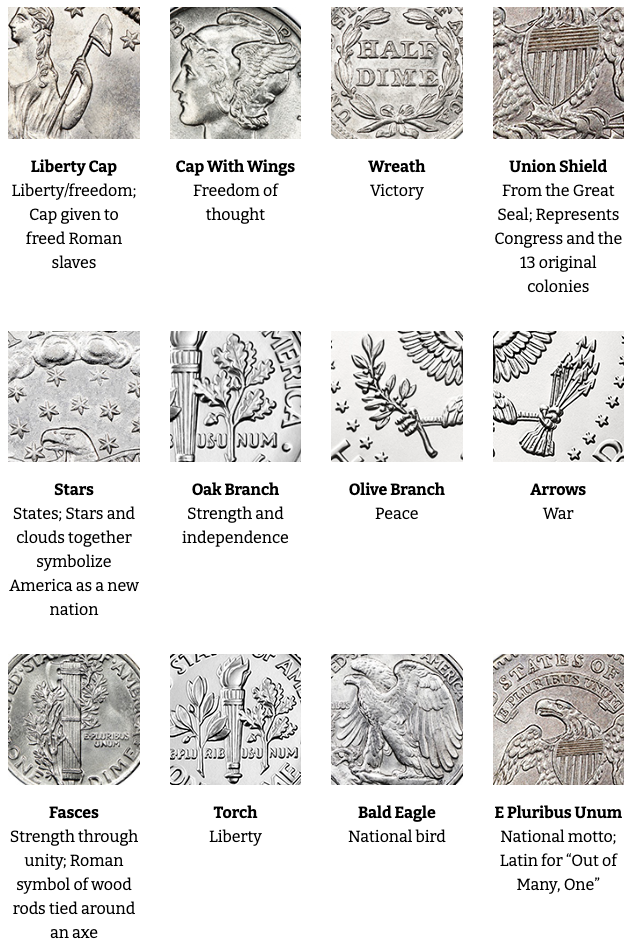
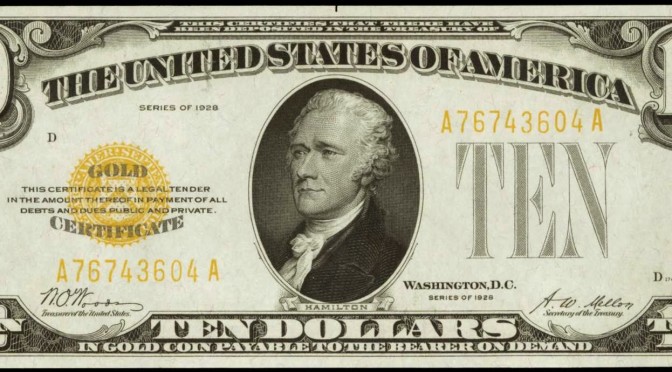
Hamilton was America's first treasury secretary, of course, from 1789 to 1795. But in many ways he's also the inventor of American money: He encouraged the use of the dollar bill as the basic unit of currency and called for a series of coins broken into smaller values, a new concept in an age when bartering was the preferred method of transaction. To encourage the new American spirit, he recommended putting presidential faces on the money. Since there was only one president at that time, this meant the basic unit currency went to Hamilton's good friend George Washington.
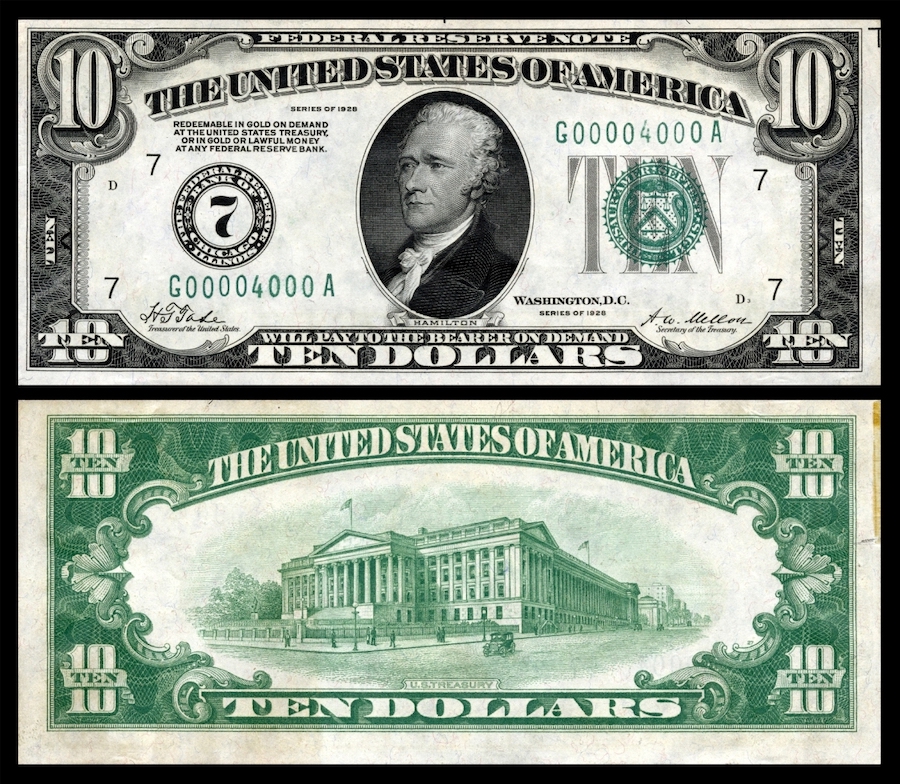
The Treasury Department Building is on the back
https://www.boweryboyshistory.com/2015/06/ten-facts-about-alexander-hamilton-on-the-10-bill.html
| Prior Secretaries: |
|---|
| https://home.treasury.gov/about/history/prior-secretaries |
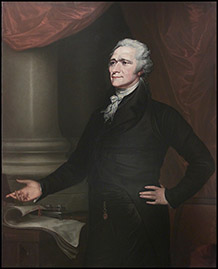 Alexander Hamilton At the inauguration of the constitutional government in 1789 Alexander Hamilton (1757- 1804), George Washington's former military aide and a renowned financier, was appointed the first Secretary of the Treasury and thus he became the architect of the structure of the Department. Desirous of a strong, centrally controlled Treasury, Hamilton did constant battle with Thomas Jefferson, then Secretary of State, and Albert Gallatin, then a Congressman, over the amount of power the Department of the Treasury should be allowed to wield. He designed a Treasury Department for the collection and disbursing of public revenue, but also for the promotion of the economic development of the country.1789 - 1795 (President Washington) Facing a chaotic treasury burdened by the heavy debt of the Revolutionary War, Hamilton's first interest when he took office was the repayment of the war debt in full. "The debt of the United States ... was the price of liberty,'' he affirmed, and he then put into effect, during 1790 and 1791, a revenue system based on customs duties and excise taxes. Hamilton's attack on the debt helped secure the confidence and respect of foreign nations. He introduced plans for the First Bank of the United States, established in 1791 which was designed to be the financial agent of the Treasury Department. The Bank served as a depository for public funds and assisted the Government in its financial transactions. The First Bank issued paper currency, used to pay taxes and debts owed to the Federal Government. Hamilton also introduced plans for a United States Mint. Though he wanted the Mint to be a structural part of the Treasury, he lost the battle to Jefferson and it was established in 1792 within the State Department. The Mint became an independent agency in 1797 and was eventually transferred to Treasury in 1873. Under personal financial pressure, his office paying only $3500 a year, Hamilton resigned in 1795 and joined the New York bar. He kept in close contact with President Washington, however, and continued to give financial advice to his successor, Oliver Wolcott. Hamilton was killed in 1804 in a duel with Aaron Burr arising from a political dispute. |
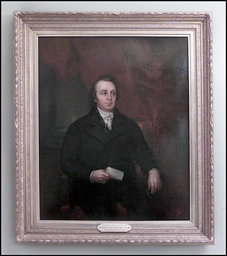 Oliver Wolcott, Jr. Beginning in 1789, Oliver Wolcott Jr. (b.1760 - 1833) played an important role in the organization of the nascent Treasury Department. First, as Auditor, he established its clerical forms and methods, and two years later, as Comptroller, he was instrumental in establishing the branches of Secretary Alexander Hamilton's First Bank of the United States. In 1795 Wolcott was appointed by President Washington to be Hamilton's successor, continuing as Secretary under President John Adams. Charged with the task of raising revenue for the rapidly growing Federal Government, Wolcott constantly sought and received Hamilton's advice. As Hamilton's ally he faced difficulties in Congress, where Hamilton's opponent Albert Gallatin sought more congressional control of Treasury's financial policy. Wolcott resigned in 1800 under a storm of criticism from Jeffersonians in Congress. In reaction he invited a congressional investigation of the Treasury Department in 1801, which cleared his name.1795 - 1800 (President Washington, President John Adams) |
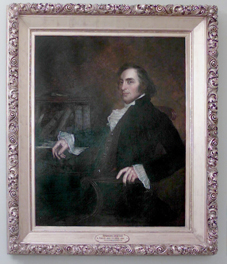 Samuel Dexter Educated at Harvard and trained as a lawyer, Samuel Dexter (1761 - 1816) resigned his seat as Massachusetts Senator in June 1800 to accept the position of Secretary of War in the Cabinet of President John Adams. Upon Secretary of the Treasury Oliver Wolcott's resignation in December 1800, Adams appointed Dexter an interim Secretary to serve until the inauguration of Thomas Jefferson as President. Dexter served less than a year in Adams' Cabinet and has no great acts associated with his name. It has been said that "his temperament and intellectual endowment ill suited him for that minute diligence and attention to intricate details which the departments of War and Finance imposed on the incumbents of office."1801 (President John Adams, President Jefferson) Shortly before the termination of Adams' Administration, the President offered Dexter a foreign embassy, but Dexter declined, remaining at the Treasury Department until Jefferson became President. |
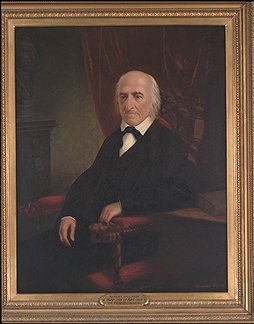 Albert Gallatin Elected to the House of Representatives in 1795 and serving until 1801, Gallatin fought constantly with the independent minded first Secretary of the Treasury Alexander Hamilton. He was responsible for the law of 1801 requiring an annual report by the Secretary of the Treasury, and he submitted the first one later that year as Secretary. He also helped create the powerful House Ways and Means Committee to assure Treasury's accountability to Congress by reviewing the Department's annual report concerning revenues, debts, loans, and expenditures. Appointed Secretary of the Treasury in 1801 by President Jefferson and continuing under President James Madison until 1814, Gallatin was in office nearly thirteen years, the longest term of any Secretary in the Department's history.1801 - 1814 (President Jefferson, President Madison) As Secretary, he followed a Hamiltonian course, establishing the independence of the Secretary of the Treasury and institutionalizing the Department structures. Gallatin considerably reduced the federal debt by setting aside revenue for that purpose, and he revived internal taxes to pay for the War of 1812 but they were not sufficient. Having failed to convince Congress to recharter the First Bank of the United States in 1811, and foreseeing financial disaster, he resigned in 1814. That year Gallatin went to Russia to represent the United States in the peace conference with England and France settling hostilities. The outcome of the conference was the Treaty of Ghent signed in 1814. |
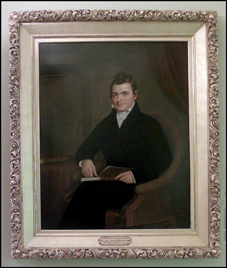 George W. Campbell Born in Scotland, George W. Campbell (1769 - 1848) moved with his family to North Carolina in 1772. When President Madison appointed him Secretary of the Treasury in 1814, he became the first Cabinet member from a region west of the Appalachian Mountains.1814 (President Madison) Campbell entered office during the War of 1812 and the state of the Nation's finances was in serious disorder. Congress had failed to recharter the First Bank of the United States after its charter expired in 1811 and had not made appropriations to finance the War of 1812. Campbell's most perplexing problem was convincing the American people to buy government bonds to pay for the war. Much of the Nation's money was concentrated in New England, which was opposed to the war, and though Campbell put up bonds for sale and begged northern bankers to subscribe, he could not inspire their confidence. He was forced to meet to lenders terms, selling government bonds at exorbitant interest rates. In September 1814 the British occupied Washington and the credit of the Government was lowered even further. Campbell was unsuccessful in his efforts to raise money through additional bond sales and he resigned that October after only eight months in office, disillusioned and in bad health. |
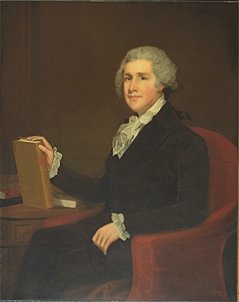 Alexander J. Dallas When Alexander Dallas (1759 - 1817) was appointed Secretary of the Treasury by President Madison in 1814, he was faced with a bankrupt Treasury depleted by the War of 1812 and with an unstable currency situation caused by the proliferation of commercial banks and their worthless bank notes not backed by specie. In a report to Congress in 1814, Dallas advocated permanent annual revenue to be raised by internal taxes, in addition to the external revenue already derived from Customs duties. He also advised the creation of the Second Bank of the United States to supply financial resources to an embarrassed Treasury and regulate bank note circulation.1814 - 1816 (President Madison) The revenue measures elaborated in this report mark the beginning of a conflict between advocates of internal revenue and those of solely external revenue. This conflict continued until the imposition of the income tax in 1913. Excise taxes, established in 1813 as a temporary wartime measure, continued to be collected until 1817. In addition, Congress enacted a high external tariff in 1816 to help pay the war debt. Dallas succeeded in his efforts to establish the Second Bank of the United States, which was chartered by Congress in 1816. He retired that year after the new Bank had been organized. |
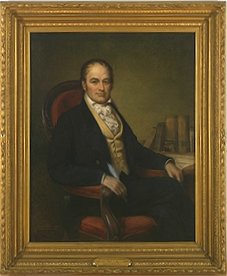 William H. Crawford In the Senate, where he served from 1807 to 1813, William H. Crawford (1772 - 1834) distinguished himself as an advocate of conservative public finance, promoting an extension of the charter of the First Bank of the United States in 1811.1816 - 1825 (President Madison, President Monroe) President Madison appointed him Secretary of the Treasury as the Second Bank of the United States was established, and he continued under President James Monroe. Crawford took over a Department still in fiscal confusion resulting from the poorly financed War of 1812. With the goal of organizing the Nation's bookkeeping, he initiated the Reform Bill of 1817, which charged with the Treasury Department with the responsibility for settling the financial accounts of all the Federal Departments. The structure of the Treasury Department was subsequently altered to accommodate its increased duties. During his Secretary tenure, Crawford also oversaw extensive improvements to the Nation's infrastructure, including the initiation of coastal fortifications and the construction of the great westward leading Cumberland Road. In 1825 Crawford refused President John Quincy Adams' offer to continue as Secretary, citing important differences in their views, and resigned at the end of Monroe's term. |
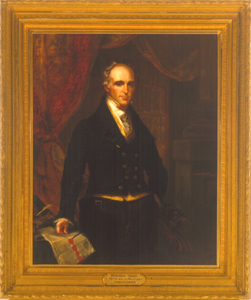 Richard Rush Richard Rush (1780 - 1859) held several public offices in the administrations of presidents Madison and Monroe, including Comptroller at the Treasury Department, before being appointed Secretary of the Treasury by President John Quincy Adams in 1825. The Second Bank of the United States, chartered in 1816, still faced widespread opposition when Rush became Secretary. Rush defended the Bank and stated that in addition to being a secure depository for government funds, it afforded the necessary facilities for transferring the public monies from place to place. 1825 - 1829 (President J.Q. Adams) Concerning trade, Rush was a protectionist. He advocated restrictive tariffs that would serve to increase the productivity of American manufacturers. He initiated improvements in the collection and publishing of commercial statistics in order to study the relation of tariff duties to trade. Rush resigned in 1829 at the conclusion of Adams' presidency. |
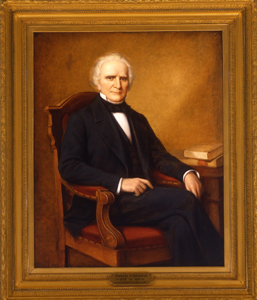 Samuel D. Ingham Samuel D. Ingham (1779 - 1869), a manufacturer and a long time member of the House of Representatives from Pennsylvania (1812 - 1818, 1822 - 1829), was appointed Secretary of the Treasury by President Andrew Jackson in 1829. The inauguration of Jackson coincided with the opening of an industrial expansion in the United States and was a symbol of a new government dedicated to the common man. 1829 - 1831 (President Jackson) The Second Bank of the United States, viewed by Jackson and much of the Nation as an unconstitutional and dangerous monopoly, was Ingham's primary concern as Secretary. Jackson not only mistrusted the Second Bank of the United States, but all banks. He thought that there should be no currency but coin and that the Constitution was designed to expel paper currency as part of the monetary system. Ingham believed in the Bank and labored to resolve conflicts between Jackson, who wanted it destroyed, and the Bank's president, Nicholas Biddle. Ingham was unable to reach any resolution between Jackson and Biddle but he left office over an incident unrelated to the Bank. Unwilling to comply with Jackson's demand that Mrs. Eaton, the socially unacceptable wife of the Secretary of War, be invited to Washington social functions, Ingham and several other members of Jackson's Cabinet resigned. |
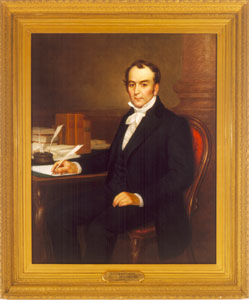 Louis McLane At the time President Jackson appointed Louis McLane (1786 - 1857) Secretary of the Treasury in 1831, the President was increasingly inclined to oppose the Second Bank of the United States. Though McLane's views on finance did not agree with those of the President, Jackson respected McLane and in making the appointment overlooked this potential conflict. During thirteen years in Congress (1816 - 1829), McLane had championed the cause of the Bank and had denied the power of Congress to interfere with its operations. As Secretary, he urged Congress to renew the Bank's charter when the measure was introduced in 1832. The bill was passed that year by Congress, but was vetoed by the President. 1831 - 1833 (President Jackson) Jackson ran for reelection in 1832 on the Bank issue and he interpreted his resounding triumph at the polls as public disapproval of the Bank. He pressured McLane to remove government deposits from the Bank, since the Secretary of the Treasury was the only person authorized to do so. Though McLane refused to withdraw the deposits, he wanted to avoid further conflict with Jackson and readily agreed to move to the position of Secretary of State when that office became available in 1833. |
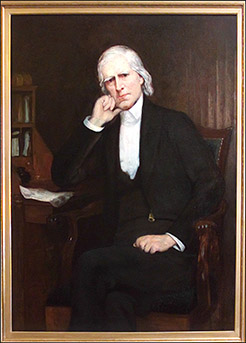 William J. Duane President Jackson, searching for a Secretary who would do his bidding, appointed William J. Duane (1780 - 1865) Secretary of the Treasury in May 1833 after the shift of Secretary Louis McLane to the State Department. Jackson hoped that he could persuade Duane to withdraw the Government's deposits from the Second Bank of the United States, which McLane had refused to do. Duane was opposed to the Bank in principle and felt that it was unconstitutional and monopolistic, but he recognized that the sudden removal of the Government's funds from the Bank would cause a panic affecting the farmer and the common man which would "plunge the fiscal concerns of the country into chaos. 1833 (President Jackson) Duane also maintained that he had no right to withdraw the funds without the consent of Congress, which had, in its previous session, declared the Bank safe for Government deposits. Jackson enlisted the help of his Attorney General, Roger B. Taney, to present his argument for the withdrawal of funds to the entire Cabinet. Duane still refused to take any action without the consent of Congress, and Jackson dismissed him after only four months of service, declaring, "He is either the weakest mortal, or the most strange composition I have ever met with." |
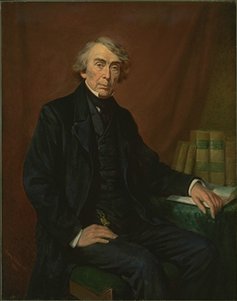 Roger B. Taney Roger B. Taney (1777 - 1864) entered President Jackson's Cabinet as Attorney General in 1831 and was Jackson's legal advisor during the President's crusade against the Second Bank of the United States. After Jackson was reelected in 1832, Taney advised him to withdraw the Government's deposits from the Bank. When Treasury Secretary Duane refused to do so, Jackson named Taney Acting Secretary in his stead. Taney's appointment was never confirmed by Congress, but during his nine months as Acting Secretary he transferred the Government's deposits from the Second Bank to designated commercial banks. 1833 - 1834 (President Jackson) The Bank's charter did not expire until 1836, but by draining it of government funds Taney rendered it weak and ineffective before its time was up. Taney resigned when Congress refused to confirm his appointment as Secretary in 1834. Two years later, Jackson, in gratitude for Taney's actions against the Second Bank, appointed him Chief Justice of the Supreme Court. |
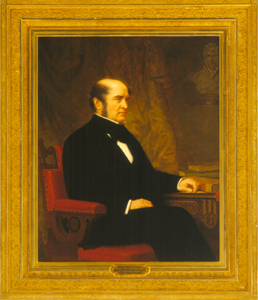 Levi Woodbury Levi Woodbury (1798 - 1851), formerly Secretary of the Navy, was appointed Secretary of the Treasury by President Jackson in 1834 and continued under President Martin Van Buren. Woodbury had been an opponent of the Second Bank of the United States in the Senate and as Secretary he continued to oppose it. Like his predecessor, Acting Secretary Roger B. Taney, Woodbury refused to place government funds with the Second Bank, depositing them instead in commercial banks. The 1830's were a period of general prosperity and by 1834 the national debt had been paid off. 1834 - 1841 (President Jackson, President Van Buren) In 1836, when the Treasury realized an unprecedented surplus, the money was turned over to the States in four installments. This extra money was a contributing factor to wild speculation and an expansion of credit resulting in a panic in 1837. Consequently, Woodbury realized the need for a system which would enable the Government to directly administer its own funds. In 1840 Congress passed an act establishing an ''independent Treasury System", where the Treasury Department, not commercial banks, was to manage the Government's funds. Much of this law was repealed the next year, but Woodbury had laid the groundwork for a more permanent Independent Treasury system that was eventually established in 1846. He also oversaw the construction of the new Treasury Building, begun by architect Robert Mills in 1836, after the Department's previous quarters had been destroyed by fire. Woodbury resigned at the end of Van Buren's term in 1841. |
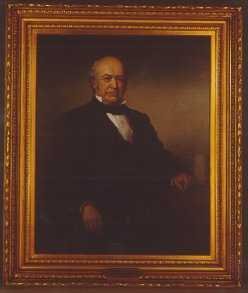 Thomas Ewing President William Henry Harrison appointed Thomas Ewing (1789 - 1871) Secretary of the Treasury in 1841 and he was retained by President John Tyler after Harrison's death. As a Senator from Ohio (1831 - 1837), Ewing had advocated rechartering the Second Bank of the United States and had denounced President Jackson's removal of government deposits. In 1841, after Congress repealed former Secretary Levi Woodbury's law creating an Independent Treasury System, Ewing was called upon to devise a new depository for the Government's funds. He introduced several options, including bills for a new national bank. 1841 (President W.H. Harrison, President Tyler) None of his suggestions were adopted and Tyler thwarted his plan for organizing a central bank to replace the Independent Treasury System, maintaining that it was unconstitutional for the Treasury Department to authorize bank branches in the States without their consent. After only six months, along with most of Tyler's Cabinet, Ewing resigned in protest against Tyler's opposition to his proposals. Eight years later, in 1849, President Zachary Taylor appointed Ewing the first Secretary of the newly created Department of the Interior. |
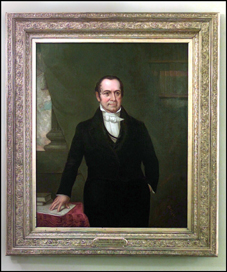 Walter Forward Walter Forward (1786 - 1852), a judge from Pittsburgh, was an active supporter of President William Henry Harrison and Vice President Tyler in the Presidential campaign of 1840 and was rewarded by Harrison with the appointment as Comptroller of Currency in the Treasury Department. Upon Secretary Thomas Ewing's resignation in 1841, Forward was appointed Secretary of the Treasury in President Tyler's reorganized Cabinet. 1841 - 1843 (President Tyler) That year, former Secretary Levi Woodbury's Independent Treasury System of 1840 was repealed and the Government's funds were deposited once more with commercial banks. Soon after Forward took office, he was asked by Millard Fillmore, then chairman of the House Ways and Means Committee, to devise a plan to increase the tariff, in response to the serious decrease in revenue caused by the Panic of 1837. He was also asked to develop plans for a Board of Exchequer to receive and disburse Customs revenue, since the Independent Treasury System was no longer in effect. In August 1842 a strongly protective tariff was passed and Secretary Forward resigned that year to practice law. |
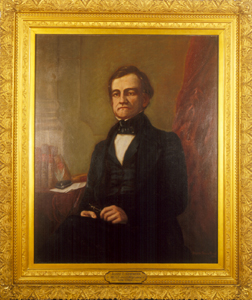 John C. Spencer John C. Spencer (1788 - 1855), formerly President Tyler's Secretary of War, became Tyler's Secretary of the Treasury in 1843 following Walter Forward's resignation. Like his predecessor, Spencer was preoccupied with the tariff and believed that the deficit and other federal expenditures should be funded by duties on imports rather than by internal taxation. When he assumed office he was forced to announce this plan for the fiscal year 1843. The expenditures of the Treasury had exceeded its receipts, and Secretary Spencer advocated additional import duties on certain articles such as coffee and tea. He also continued to develop a plan, initiated by Forward, for a Board of Exchequer to keep and disburse public funds raised by duties. 1843 - 1844 (President Tyler) The Exchequer Bill, which reflected the Government's continuing interest in some form of Independent Treasury System, failed due to a political conflict in Congress. As the only Northerner in a Cabinet dominated by Southern interests, Spencer found it increasingly difficult to serve under President Tyler and finally resigned in 1844 in opposition to Tyler's annexation of Texas. |
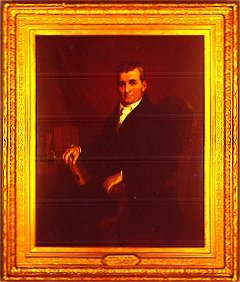 George M. Bibb George M. Bibb (1776 - 1859) was appointed President Tyler's fourth Secretary of the Treasury in 1844, upon the resignation of John C. Spencer. He was a very aged man when he assumed the Treasury position, dressing "in antique style, with knee breeches." 1844 - 1845 (President Tyler, President Polk) His Annual Report on the State of the Finances for 1844 consisted of an elaborate compilation of statistics detailing the financial history of the Nation since 1789. In addition, he presented a solid argument for the establishment of a "sinking fund," accumulated through regular deposits and used to pay the interest and principal on the national debt. Bibb advocated using Treasury's surplus revenue from Customs and Internal Revenue collection to supply the sinking fund. Such a fund had been used effectively to reduce the deficit from 1789 to 1835 but Bibb was unable to revive it. After serving less than a year, Bibb resigned at the end of Tyler's Administration in 1845. |
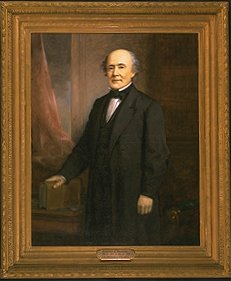 Robert J. Walker When Robert J. Walker (1801 - 1869) was appointed Secretary of the Treasury by President James K. Polk in 1845, he had already established himself as a supporter of an independent Treasury System plan and an apostle of free trade. His first concern as Secretary was the establishment of the Independent Treasury System of 1846, whereby the Treasury Department was made solely responsible for the handling of public monies. The new system established subtreasuries for the collection, safe-keeping, transfer, and disbursement of the public revenue. 1845 - 1849 (President Polk, President Taylor) Walker was also committed to free trade and was responsible for the Walker Tariff Bill of 1846, which significantly lowered import duties. He believed that no more money should be collected than was necessary for the needs of the Government and that imports should be free if the country wanted to export its surplus products. The new lower tariff had a positive effect, resulting in an increase in trade and a coincidental increase in revenue for the Government. Domestically Walker was an expansionist and was largely responsible for the establishment of the Department of the Interior in 1849. He retired at the end of Polk's Administration. |
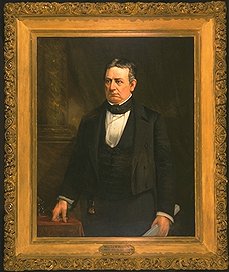 William M. Meredith President Zachary Taylor, wanting a Pennsylvanian Whig for his Cabinet, appointed William M. Meredith (1799 - 1873) Secretary of the Treasury. Meredith strongly opposed the free-trade legislation passed the year before under his predecessor, Robert J. Walker. He felt that there was a need to protect the American workman, who was subject to competition from poorly paid European labor. Meredith's principal contribution in office was his Annual Report of 1849 in which he set forth an elaborate argument for a protective tariff.1849 - 1850 (President Taylor, President ) The increase in the public debt due to the recent war with Mexico (1846-1848) and the acquisition of California gave Meredith additional arguments for raising revenue through higher import duties, but no action was taken on the tariff during Meredith's term. Because the Coast Survey had seen great expansion and improvement with the introduction of steam powered ships, he also recommended a revision of the Coast Survey Code, which had not been changed since its implementation in 1806. Meredith resigned with the rest of the Cabinet upon Taylor's death in 1850. |
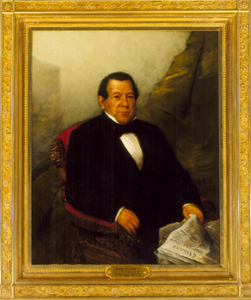 Thomas Corwin President Taylor's death brought Millard Fillmore to the Presidency and Thomas Corwin (1794 - 1865) to the Office of Secretary of the Treasury. Corwin had established himself as "the most captivating and effective political orator the country had ever produced" during his years as a Whig senator from Ohio (1845 - 1850). Like his immediate predecessor, William M. Meredith, Corwin believed in a protective tariff, but he did not want to make sudden or drastic changes in the free-trade tariff law of 1846.1850 - 1853 (President Fillmore, President Pierce) He objected to that law's provisions, which taxed some imported raw materials at a higher rate than the imported manufactured goods made from those materials. Corwin stated in a report to Congress that, "such provisions certainly take from the manufacturer and artisan that encouragement which the present law was intended to afford." As a longtime Whig, however, Corwin was unsuccessful in passing any tariff legislation in a Congress controlled by Democrats. He retired as Secretary at the end of Fillmore's Administration. |
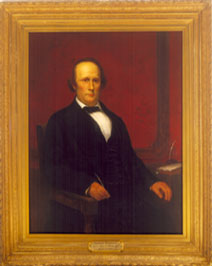 James Guthrie A prominent businessman and financier in the South, James Guthrie (1792 - 1869) was appointed Secretary of the Treasury by President Franklin Pierce in 1853. As Secretary he was a vigorous and effective administrator, and he soon realized that the recent significant growth of government business demanded a revision of Treasury Department methods. He overhauled Treasury regulations, curbed extravagance, and weeded out incompetence, declaring as his aim "to infuse vigilance, fidelity and economy into the public service." Guthrie warned Customs collectors that they could not "too soon enter upon the task of reforming what has been amiss, and introducing a more energetic, vigilant and economical system," and he required of them monthly, rather than quarterly, reports.1853 - 1857 (President Pierce, President Buchanan) By 1853 the government surplus was large and commercial banks were suffering from the lack of currency in circulation. Guthrie used the surplus to buy silver bullion for coinage and to pay off the federal debt, returning money to circulation and increasing the reserves of commercial banks. He also hired Army Engineer Major Alexander Bowman in 1853 to begin construction on the south wing of the Treasury Building extension. Guthrie resigned at the end of Pierce's term in 1857. |
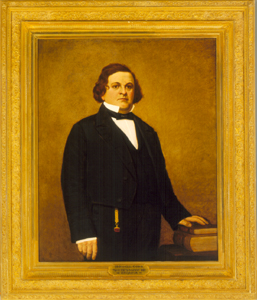 Howell Cobb As a congressman, Howell Cobb (1815 - 1865) had supported the Presidential campaign of James Buchanan, and the victorious Buchanan appointed him Secretary of the Treasury in 1857. Like his predecessor Secretary James Guthrie, Cobb felt that the accumulating surplus in the Treasury vaults was causing stringency in the money market. To relieve this, he introduced surplus funds into circulation by buying back government bonds from commercial banks, which had purchased them as investments.1857 - 1860 (President Buchanan) When a panic hit in 1857, the Treasury was in the embarrassing situation of having empty coffers, and it had to rely for the first time on commercial banks to buy federal bonds and relieve the crisis. The crisis had passed by 1858, but recovery had not yet set in when the threat of secession of the Southern states caused another business disturbance. Customs receipts began falling off as the Southern states refused to cooperate in the collection of duties, and the deficit grew. Cobb recommended higher tariffs in order to raise much needed revenue but Congress ignored his suggestions. It was not until 1860, Cobb's last year in office, that Congress passed a bill to raise revenue through higher tariffs. When Abraham Lincoln was elected President in 1860, Cobb, a Southerner, believing that this justified secession, resigned from the Cabinet urging his native state of Georgia to leave the Union. |
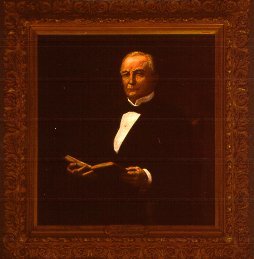 Philip F. Thomas When Secretary of the Treasury Howell Cobb resigned in 1860, President Buchanan appointed Philip F. Thomas (1810-1890), former Governor of Maryland, in his place. Thomas reluctantly accepted the position and immediately upon entering office had to market a bond to pay the interest on the public debt.1860 - 1861 (President Buchanan) There was little faith in the stability of the country due to the threat of secession by the Southern states, and war appeared inevitable. Northern bankers refused to invest in Thomas's loan, wary that the money would go to the South. Thomas resigned after only a month in response to his failure to obtain the loan, stating: "This loan was the direct cause of my leaving the Cabinet before the expiration of Mr. Buchanan's term. It was reported to me that some New York capitalists had gone to Mr. Buchanan and said that they would not subscribe for the loan as long as a Southern man remained at the head of the Treasury.... my service in the Cabinet was anything but an agreeable part of my public life." |
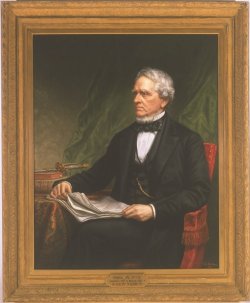 John A. Dix After the resignation of Secretary of the Treasury Philip F. Thomas in 1860 and the secession of South Carolina the same year, the moneyed interests in the East demanded that John A. Dix (1798 - 1879) be made Secretary. A former postmaster and Senator from New York, Dix was reputed to be "a cultivated writer, a fluent vigorous speaker, a man of great courage, prompt decision and proved executive ability."1861 (President Buchanan, President Lincoln) Entering office during a financial panic, he quickly obtained the much needed loans from banks and the American people that his predecessor had failed to secure. He won further confidence in the North by dispatching a message to a Treasury Customs official in New Orleans to take possession of a Treasury Department revenue cutter there. "If anyone attempts to haul down the American flag," he ordered, "shoot him on the spot." Dix was in office less than three months, resigning at the end of Buchanan's presidency. Buchanan's successor, President Lincoln, rewarded his performance as Secretary with the commission of Major General in charge of Alexandria and Arlington, Virginia during the Civil War. |
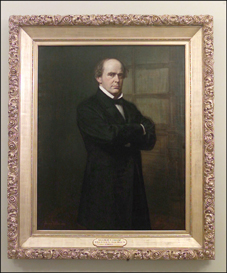 Salmon P. Chase Salmon P. Chase (1808 - 1873) resigned from the Senate in 1861 to become President Lincoln's Secretary of the Treasury as the Civil War began. The war created the need to raise money, and with Customs revenue from the Southern cotton trade cut off, Chase had to implement internal taxes. The Bureau of Internal Revenue, later the Internal Revenue Service, was created in 1862 to collect stamp taxes and internal duties.1861 - 1864 (President Lincoln) The next year it administered the Nation's first income tax. In order to further finance the war, the Bureau of Engraving and Printing was established in 1862 to print the Government's first currency, known as greenback because of its color. These were legal tender notes not backed by specie. Chase disapproved in principle of the legal tender notes; with no requirement for specie backing they could be printed in unlimited quantities and were therefore inflationary. He recognized their necessity in a time of emergency, but later, as Chief Justice of the Supreme Court, he would declare the notes unconstitutional. The National Banking System was created in 1863 to establish a uniform currency. The greenbacks, within a new network of national banks, directly involved the Government in banking for the first time. Chase resigned in 1864, having put the Nation's finances in a more favorable condition. Lincoln appointed him Chief Justice later that year, and he presided over the Court during the difficult period of Reconstruction. |
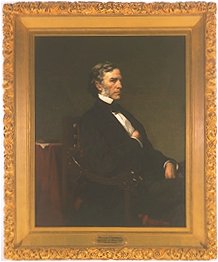 William P. Fessenden When Secretary of the Treasury Salmon P. Chase resigned in 1864, President Lincoln promptly appointed William P. Fessenden (1806 - 1869) to succeed him. As Chairman of the Senate Finance Committee (1861 - 1864), Fessenden had taken a leading part in framing measures relating to revenue and appropriations to finance the Civil War. Reluctant to take the position of Secretary due to ill health, Fessenden succumbed to Lincoln's wishes when Lincoln told him "that the crisis demanded any sacrifice, even life itself."1864 - 1865 (President Lincoln) Upon assuming office he was immediately faced with the Government's need for money. With the aid of Civil War financier Jay Cooke, Fessenden marketed several successful short-term loans bearing exceptional interest rates that were well subscribed to by the American people. During Fessenden's term, the problem created by the inflationary greenbacks, first issued in 1863, began to emerge. Debate would rage for the rest of the century over replacing them with currency backed by specie or taking advantage of the inflationary soft money during periods of expansion. After only eight months, Fessenden resigned and returned to the Senate where he became Chairman of the Joint Committee on Reconstruction. |
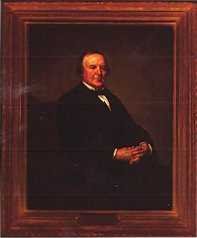 Hugh McCulloch As President of the State Bank of Indiana, Hugh McCulloch first came to Washington to protest Secretary of the Treasury Salmon P. Chase's National Banking System. Ironically, Chase asked McCulloch to launch the System in 1863 as the first Comptroller of Currency. After some hesitation McCulloch accepted, and the National Banking System was largely successful due to his influence with existing state banks. McCulloch became President Lincoln's Secretary of the Treasury in 1865 and continued in office under President Andrew Johnson.1865 - 1869 (President Lincoln, President A. Johnson) Immediately confronted with inflation caused by the Government's wartime issue of greenbacks, he recommended their retirement and a return to the gold standard. However, this would have reduced the supply of currency and was unpopular during the period of postwar reconstruction and westward expansion. Adopted in 1866, the gold standard was abandoned two years later and the battle over its revival raged for the next fifty years . During his tenure, McCulloch maintained a policy of reducing the federal war debt and the careful reintroduction of federal taxation in the South. |
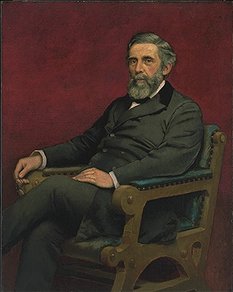 George S. Boutwell George S. Boutwell (1818 - 1905) had spent a long career in public service, including tours of duty as the first Commissioner of Internal Revenue (1862 - 1863) and as a Congressman (1863 - 1869), before being appointed by President Ulysses S. Grant as Secretary of the Treasury in 1869. His chief objectives as Secretary were to improve the organization of the Department and to continue reducing the national debt. Boutwell set up a system for the manufacture of money which made it easier to detect counterfeit currency and he reorganized the Mint, which became part of the Treasury Department in 1873 after seventy-four years as an independent agency. He also instituted an efficient system of bookkeeping and accounting for the Customs Houses.1869 - 1873 (President Grant) Shortly after his appointment, Boutwell had to rise to the challenge of the infamous "Black Friday," September 23, 1869, when speculators on Wall Street tried to corner the gold market. He successfully blocked their scheme by releasing great quantities of Treasury gold and thereby flooding the market. Boutwell left Treasury in 1873 to return to the Senate. |
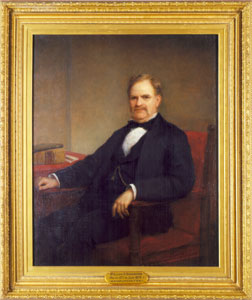 William A. Richardson Previously Assistant Secretary of the Treasury under Secretary George S. Boutwell, President Grant promoted William A. Richardson (1821 - 1896) to Secretary when Boutwell resigned. The postwar economy had expanded so quickly that commercial banks became nervous and began calling in their loans. As a result, in the summer of 1873 the money supply tightened drastically, causing a panic. Richardson responded by issuing $26 million in greenbacks to meet the demand. The legality of his action was doubtful, but Congress did not interfere and the crisis was eased. (Such cycles of expansion and panic continued for the next thirty years, and were the basis for the creation of the Federal Reserve in 1913).1873 - 1874 (President Grant) In his last months in office Richardson became embroiled in the "Sanborn Incident." John Sanborn, hired by Richardson under a congressional act to recover unpaid taxes, had kept much of what he had collected. Congress investigated the matter, and through no direct involvement by Richardson, his removal was demanded. Grant responded by appointing Richardson to a position on the Massachusetts Court of Claims in 1874. |
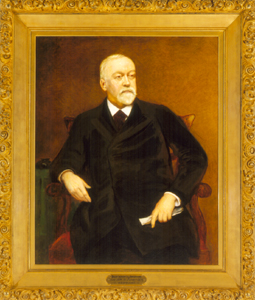 Benjamin H. Bristow Benjamin H. Bristow (1832 - 1896) served as the first Solicitor General (1870 - 1872) and was appointed Secretary of the Treasury by President Grant in 1874. He promptly initiated a much needed internal reorganization of the Department, dismissing the Second-Comptroller for inefficiency, shaking up the detective force, and consolidating collection districts in the Customs and Internal Revenue services.1874 - 1876 (President Grant) Bristow argued vigorously but unsuccessfully for the resumption of specie payments: "The history of irredeemable paper currency repeats itself whenever and wherever it is used. It increases prices, deludes the laborer with the idea that he is getting higher wages, and brings fictitious prosperity ... until it is discovered that trade and commerce have become fatally diseased." Bristow's greatest accomplishment was the breaking up in 1874 of the Whiskey Ring, a powerful group of moonshiners who evaded the Internal Revenue tax on whiskey. Bristow's investigation implicated many local and Treasury officials, including some close to Grant. The Ring, fighting back, convinced Grant that Bristow was using his office to scheme for the Republican nomination. Fearing competition, Grant pressured Bristow to resign in 1876. |
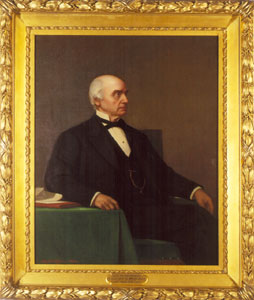 Lot M. Morrill Lot M. Morrill (1812 - 1883) earned the reputation of an accomplished financier in the Senate (1861 - 1876) as the first Chairman of the Senate Committee on Appropriations. In 1862 he played a major role in emancipating the slaves of the District of Columbia and in gaining them suffrage. President Grant appointed Morrill Secretary of the Treasury in 1876 upon Secretary Benjamin Bristow's resignation. The prominent concern at the time was the redemption of all Civil War issue greenbacks and the return to a currency backed by gold, specified by Congress to occur in 1879.1876 - 1877 (President Grant, President Hayes) Like Bristow, Morrill advocated a currency backed by gold and considered "irredeemable and inconvertible paper currency... essentially repugnant to the principles of the Constitution." This was unpopular in the South and West, areas that required capital for expansion and therefore preferred cheap paper money. Though he was not in office long enough to effect major legislation, Morrill suggested in his Annual Report of 1876 that the Secretary of the Treasury begin accumulating gold in anticipation of the eventual adoption of a gold backed currency in 1879. He resigned at the end of Grant's term, but the currency debate was to continue for years to come. |
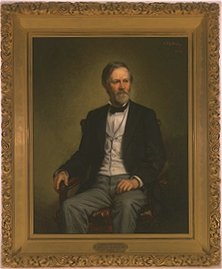 John Sherman John Sherman (1823 - 1900) had enjoyed an illustrious career in Congress (1855 - 1877) before President Rutherford B. Hayes appointed him Secretary of the Treasury in 1877. As a member of the Senate Finance Committee he had led the planning of Secretary Salmon P. Chase's National Banking System. Later, as Chairman of that committee, he oversaw national policy on the postwar banking system, dominated by the debate over the inflationary greenback. Champions of reconstruction and westward expansion wanted to continue use of the plentiful greenback while conservative financiers wanted to control inflation and use a currency backed by gold.1877 - 1881 (President Hayes) This matter grew complicated and became a sectional issue when Westerners advocated a currency based on both gold and the cheaper and more readily available Western silver. Although he was faced with business failures and inflation which magnified public opposition to "hard money," Secretary Sherman advocated a gold standard and built up the Nation's gold reserves. He also recommended in 1880 that sweeping changes be made in public service in order to retain valuable employees. This recommendation resulted in the Civil Service Act of 1883. At the end of Hayes' presidency, Sherman returned to the Senate where he continued his fight against currency backed by silver. |
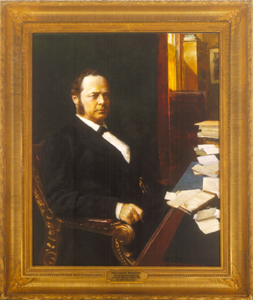 William Windom William Windom (1827 - 1891) resigned from the Senate in 1881 to become President James Garfield's Secretary of the Treasury, serving until the President's death eight months later when Windom returned to the Senate to complete his term. As a Senator he chaired a special committee on transportation routes to the western seaboard and was a proponent of expansion.1881 (President Garfield) |
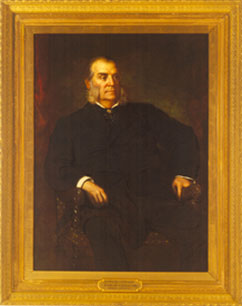 Charles J. Folger Appointed Secretary of the Treasury in 1881 by President Chester A. Arthur, Charles J. Folger (1818 - 1884) presided over the greatest surplus the Government had ever had. With some humor he observed that times had changed since the first Treasury Secretary in 1789 was charged with devising plans for the collection of revenue; "What now perplexes the secretary is not wherefrom he may get revenue enough for the pressing needs of the government, but whereby he shall turn back into the flow of business the more than enough for those needs, that has been drawn from the people."1881 - 1884 (President Arthur) He considered several options, including using the surplus to pay off the federal debt or depositing it with commercial banks, both of which were of questionable legality. Finally, Folger advocated reducing the Customs duties. However, a reduction in Internal Revenue rates together with a decrease in Customs receipts in 1884 cut down the Government's income and put off until 1890 the need for decisive action to prevent a surplus. In 1883 Folger oversaw the reclassification of the Treasury Department according to Civil Service rules. He died in office the next year. |
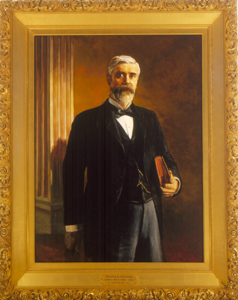 Walter Q. Gresham Upon the death of Secretary of the Treasury Charles J. Folger in September 1884, Walter Q. Gresham (1832 - 1895) accepted President Arthur's stopgap appointment as Secretary. Gresham, previously Arthur's Postmaster General, had been close to Folger and shared his ideas on finance. The overriding question was what to do with the Treasury's surplus, an issue unresolved during Folger's tenure. Gresham agreed with Folger's suggestion that the surplus should be reduced by a cut in Customs duties. He stated that ''public credit has been so firmly established and the public debt so largely reduced that we can now safely reduce taxation within the demands of the law."1884 (President Arthur) A believer in sound money, Gresham told New York businessmen that the only way to keep government currency afloat as legal tender was for the Government to keep enough gold in the Treasury to meet the demand of notes presented. Gresham resigned after two months to become Circuit Judge of the Seventh Judicial District. |
 Hugh McCulloch McCulloch was appointed Secretary a second time in 1884 by President Chester Arthur. During his six months in office at that time, he continued his fight for currency backed by gold, warning that the coinage of silver used then as backing for currency, should be halted.1884 - 1885 (President Arthur) |
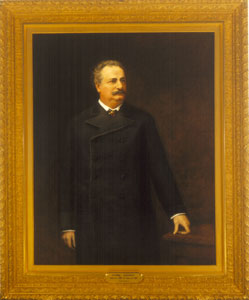 Daniel Manning President Grover Cleveland appointed Daniel Manning (1831 - 1887) Secretary of the Treasury in 1885. The pressing issue of the period was government currency, specifically, how much currency should be in circulation and whether it should be backed by gold or silver. Conservative Eastern financiers urged a currency backed by gold, while Western speculators, in need of a large, more plentiful money supply to build railroads and businesses on the frontier, wanted a currency backed by readily available silver.1885 - 1887 (President Cleveland) Manning advocated a compromise currency based on both gold and silver which would be redeemable in gold. He stated that "every dollar note shall be the representative certificate of a coin dollar actually in the Treasury and payable on demand; a currency in which our monetary unit coined in gold ... and its equivalent coined in silver-shall not be suffered to part company." In the international arena, Manning began work on what eventually became the McKinley Tariff of 1890, which significantly lowered Customs duties. He resigned from the Cabinet in 1887 due to ill health. |
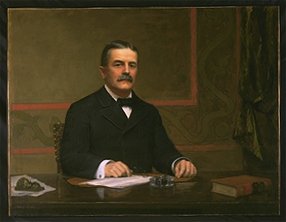 Charles S. Fairchild Charles S. Fairchild (1842 - 1924) became Assistant Secretary of the Treasury under Daniel Manning in 1885. When Manning's health forced him to retire in 1887 President Cleveland promoted Fairchild to Secretary of the Treasury. Upon assuming the Office of the Secretary, Fairchild was confronted with a huge government surplus, the result of heavy taxation and large Customs receipts. In order to prevent more money from accumulating in the Treasury vaults, Fairchild appealed to Congress to reduce taxation and to allow Treasury to deposit Treasury funds in commercial banks, an action then not permitted by law.1887 - 1889 (President Cleveland, President B. Harrison) Congress refused to act and Fairchild took matters into his own hands. By buying back government bonds from commercial banks which held them as investments, and increasing government deposits in commercial banks over the next two years, he was partly able to dispose of the surplus revenue. Fairchild suffered sharp congressional criticism, but he continued with his policy of putting funds into circulation and averted a financial crisis. He resigned at the end of Cleveland's term in 1889. |
 William Windom President Benjamin Harrison appointed him Secretary a second time in 1889.1889 - 1891 (President B. Harrison) Windom's expansionist beliefs combined with his Minnesota roots made him personally sympathetic to the new Western states' desire for a currency backed by silver. Although he advocated a gold standard, he effected a compromise in the Sherman Silver Purchase Act of 1890, which authorized the Secretary to buy silver and gold bullion and to issue notes of full legal tender. In 1891 Windom addressed the New York Board of Trade with the words, "As a poison in the blood permeates arteries, veins, nerves, brain and heart, and speedily brings paralysis or death, so does a debased or fluctuating currency permeate all arteries of trade, paralyze all kinds of business and brings disaster to all classes of people." Seconds later he suffered a heart attack and died. |
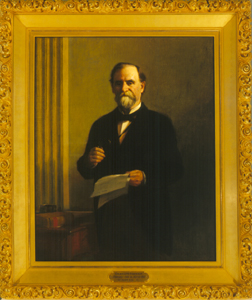 Charles Foster Previously a businessman, a Congressman (1870 - 1879), and the Governor of Ohio (1879 - 1891), Charles Foster (1828 - 1904) was appointed Secretary of the Treasury in 1891 by President Benjamin Harrison. By 1890 the Treasury Department, with a long history of regulating and intervening in the money market, was regarded as the ultimate source of currency in times of need. However, beginning that year the Treasury surplus of the 1880s disappeared. Foster felt the effects of the Sherman Silver Purchasing Act (which obligated the Secretary to buy silver bullion and issue legal tender notes based on silver as well as gold, redeemable in gold) and the McKinley Tariff Act (which lowered tariffs), both of 1890.1891 - 1893 (President B. Harrison, President Cleveland) As the gold in Treasury vaults was replaced by silver and Customs revenues declined, it became more and more difficult for the Treasury to meet demands for redemption of notes in gold. Though Foster believed in the Sherman Silver Purchase Act and pledged to maintain parity between gold and silver, the run on Treasury gold made him nervous. In 1893 he sold legal tender notes to commercial banks in exchange for gold, in order to build up the Treasury gold supply. In spite of his efforts, the gold reserves continued to decline and this led ultimately to the Panic of 1893 during the term of his successor, Secretary John G. Carlisle. Foster had meanwhile resigned at the end of Harrison's term. |
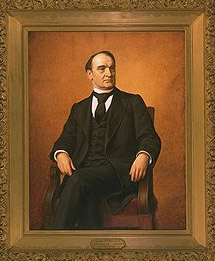 John G. Carlisle John G. Carlisle (1835 - 1910) resigned from the Senate in 1893 to become President Cleveland's Secretary of the Treasury. As Secretary he was faced with declining Treasury gold reserves, a trend begun during the administration of his predecessor, Secretary Charles Foster. Shortly after he took office in 1893, there occurred a severe nationwide panic. Carlisle attributed the financial ills of the country to the over issue of government notes based on silver, and demanded their withdrawal and a return to a gold standard.1893 - 1897 (President Cleveland, President McKinley) The Sherman Silver Purchase Act was repealed in 1893, and the Secretary of the Treasury was relieved from his obligation to buy silver. Carlisle then began to retire the Sherman silver notes. (Final provision for their retirement was established by the Gold Standard Act of 1900, which returned the country to a currency based on gold.) The Panic of 1893 also set the stage for the introduction of an income tax that same year, to provide the Government with steady revenue. The tax was declared unconstitutional and repealed in 1895, and the revenue problem continued. (The tax was finally made constitutional by the ratification of the Sixteenth Amendment and permanently reintroduced in 1913.) Carlisle resigned at the end of Cleveland's term in 1897. |
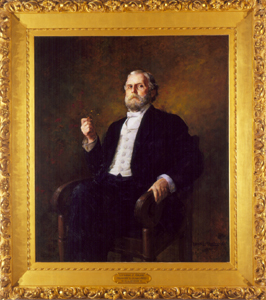 Lyman J. Gage A staunch defender of the gold standard during the election of 1896, Lyman J. Gage (1836 - 1927) was appointed Secretary of the Treasury by President William McKinley in 1897. After McKinley's assassination, he continued to serve under President Theodore Roosevelt. During the 1870's Gage had been one of the organizers of the "Honest Money League of the North West," which inaugurated a vicious campaign against the irredeemable greenbacks. His writings were widely circulated and he acquired a reputation as a sound conservative businessman. Later, as Vice-President of the First National Bank in Chicago (1891 - 1896), he made public his views that "the government must be taken out of the note-issuing business."1897 - 1902 (President McKinley, President T. Roosevelt) As Secretary of the Treasury, Gage was influential in securing passage of the Gold Standard Act of March 14, 1900, which reestablished a currency backed solely by gold. Since this limited the amount of currency in circulation, it initiated a period continuing until 1912, in which the Secretary of the Treasury was obliged to respond to the money market by introducing the Treasury surplus into circulation. The inability of the Treasury to respond to the needs of the market and the need for an "elastic" currency which would expand and contract with the needs of the Nation, led to the creation of the Federal Reserve in 1913 to regulate the money market. Gage resigned in 1902 to become a banker in New York. |
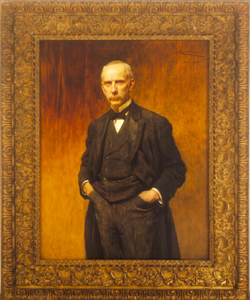 Leslie M. Shaw Shortly after retiring as Governor of Iowa, Leslie M. Shaw (1848 - 1932) was appointed Secretary of the Treasury by President Theodore Roosevelt. His selection as Secretary was due to his championing the gold standard during the Presidential campaign of 1896 and his support of Roosevelt in 1900. Like his predecessor Secretary Lyman Gage, Shaw firmly believed that the Treasury should serve the money market in times of difficulty through the introduction of Treasury funds.1902 - 1907 (President T. Roosevelt) Taking several actions towards this end, Shaw bought back government bonds from the commercial banks that owned them, increased the number of government depository banks, and, in 1902, told the banks that they no longer needed to keep cash reserves against their holdings of public funds. The intended effect of these actions was to provide a more elastic currency, which would then respond to the needs of the market. Government intervention in the money market reached its height with Shaw. He resigned in 1907 to become a banker in New York. |
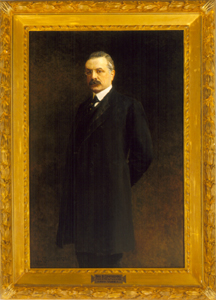 George B. Cortelyou In 1907 President Theodore Roosevelt appointed George Bruce Cortelyou (1862 - 1940) to his third Cabinet position, as Secretary of the Treasury. Previously, and also under Roosevelt, he had been the first head of the Department of Commerce and Labor and had served as Postmaster General. Cortelyou was Secretary of the Treasury during the devastating Panic of 1907 in which the business of the country was brought to a standstill. Like his predecessor, Secretary Leslie M. Shaw, Cortelyou believed it was Treasury's duty to protect the banking system, but he realized that the Treasury was not equipped to maintain economic stability.1907 - 1909 (President T. Roosevelt, President Taft) He eased the crisis by depositing large amounts of government funds in national banks and buying government bonds. To prevent further crises, Cortelyou advocated a more elastic currency and recommended the creation of a central banking system. In 1907, the Aldrich-Vreeland Act was passed, providing special currency to be issued in times of panic, and additionally establishing a Commission that helped prompt the creation of the Federal Reserve in 1913. Cortelyou resigned at the end of Roosevelt's term. |
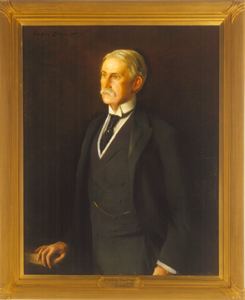 Franklin MacVeagh Although Franklin MacVeagh (1837 - 1934) had been a director of the Commercial National Bank of Chicago for twenty-nine years when President William Howard Taft asked him to be Secretary of the Treasury in 1909, he was a man with little real banking experience. He did not tackle the pressing problem of currency reform, leaving it to the National Monetary Commission, which had been established by the Aldrich-Vreeland Act of 1907 to study the issue. He did, however, stress the urgency of reform in his Annual Report: "Taking large sums of actual money out of ordinary financial uses and locking them up as a dead mass in the vaults of the Treasury is ... unscientific and unreasoned."1909 - 1913 (President Taft, President Wilson) What he contributed to the Administration was a businesslike management of the Treasury Department and a spark of progressiveness in an otherwise conservative Cabinet. The era was marked by efforts to modernize the Federal Government and MacVeagh promoted efficiency and economy within the Treasury Department. In 1909 MacVeagh commissioned the architectural firm of York and Sawyer to study the Department's efficiency, which resulted in a physical rearrangement of offices and an increase in the security of the Main Treasury Building in Washington. He abolished 450 unnecessary positions, rehabilitated the Customs Service with the introduction of electric automatic weighing devices and accepted certified checks instead of currency for Customs and Internal Revenue payments. MacVeagh resigned at the end of Taft's term. |
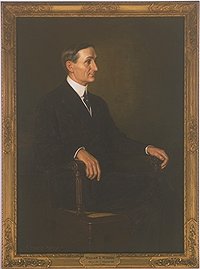 William G. McAdoo Seeking a Secretary of the Treasury with financial experience who was not too closely identified with Wall Street, President Woodrow Wilson found lawyer-businessman William G. McAdoo (1863 - 1941). The pressing issue of the era was bank reform, which had been gaining attention since the Panic of 1907, and it was clear that some kind of central banking system was needed. There were two problems with the existing system. It was inelastic, or unable to expand and contract the money supply with the needs of the Nation, and it was decentralized, resulting, at times, in an uneven distribution of currency throughout the country.1913 - 1918 (President Wilson) McAdoo opposed Senator Nelson W. Aldrich's proposed system of private reserve banks under control of the banking industry and advocated instead a central bank operated by the Treasury. The Federal Reserve Act (1913) was a compromise, creating a centralized banking system controlled by an independent federal board with the power to perform such central banking functions as determining and harmonizing discount rates defining eligible paper, and controlling the issue of notes. The income tax, declared unconstitutional in 1895, was made constitutional by the Sixteenth Amendment and reintroduced permanently in 1913 to provide revenue for the fast-growing nation. McAdoo also successfully financed World War I by awakening a patriotic spirit in the American people, who were unused to saving through the purchase of government bonds, and floating four Liberty Loans to pay for the War. He resigned in 1918 to resume the practice of law in New York. |
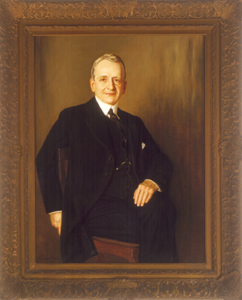 Carter Glass Born to a newspaper family in Lynchburg, Virginia, Carter Glass (1858 - 1946) took an early and active interest in politics. Elected to Congress in 1902, Glass later became Chairman of the Subcommittee, which was set up to explore the reformation of the Nation's banking and currency system. Glass favored a highly decentralized system of reserve banks, but he supported and helped guide through Congress President Wilson's proposal for the Federal Reserve System, established in 1913. In 1919, Wilson appointed Glass Secretary of the Treasury to succeed former Secretary William G. McAdoo.1918 - 1920 (President Wilson) His most notable achievement in office was the successful floating of a $5 billion Victory Loan, a huge consolidation of government borrowings and an important administrative accomplishment, to help liquidate the expenses of World War I. Upon returning to Congress as a Senator in 1920, Glass remained interested in the Federal Reserve and contributed to the acts of 1933 and 1935 which modernized the institution and removed it from the Treasury Department. For his long support of the Federal Reserve, Glass became popularly known as the "Father of the Federal Reserve." |
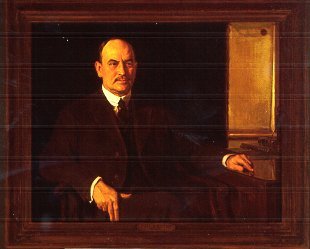 David F. Houston When Secretary of the Treasury Carter Glass (1866 - 1940) returned to the Senate in 1920, President Wilson appointed David F. Houston, his Secretary of Agriculture, to succeed him. Houston came to the Treasury as World War I ended and his brief tenure was marked by stormy controversies over federal monetary policies. As ex-officio Chairman of the Federal Reserve Board, he issued severe warnings and increased rediscount rates in order to prevent the inflation that the European Allies were experiencing. Houston predicted a fall in U.S. prices, particularly of farm products, after the optimism of the Armistice wore off. He pushed for easier credit for farmers and urged them to produce less.1920 - 1921 (President Wilson) But when prices fell more dramatically than expected in 1920, Houston was unfairly accused by farm spokesmen of deliberately wrecking agrarian prosperity. Abroad, England and France were pushing to cancel their war debts. Houston, Congress, and the President instead converted the short-term debts to long-term loans. Houston resigned at the end of Wilson's term, after only a year in office. |
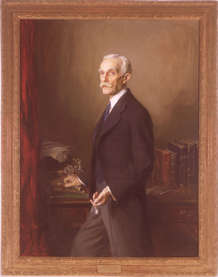 Andrew W. Mellon One of the major figures in the industrial and financial development of the Trans-Allegheny region, Andrew W. Mellon (1855 - 1937) was appointed Secretary of the Treasury by President Warren G. Harding in 1921, and he continued to serve under Presidents Calvin Coolidge and Herbert Hoover. As the Nation embarked on the most materialistic period in its history, Mellon's philosophy was one of debt reduction, tax reduction, and a balanced budget. His tax reform scheme, known as the Mellon Plan, reduced taxes for business.1921 - 1932 (President Harding, President Coolidge, President Hoover) His theory was that big business would prosper in proportion to the lightening of its tax load and its profit would be transferred to the rest of the Nation. During much of his tenure, general prosperity and times of peace enabled Mellon to implement his measures. The Great Depression, however, beginning in 1929, undercut Mellon's prestige and brought him under increasing criticism. Despite the downturn in the economy, Mellon continued his policy of balancing the budget by cutting spending and increasing taxes, which worsened the effect of the Depression on the ordinary citizen. When Mellon began spending a great deal of time overseas renegotiating World War I debt payments, Hoover relied more and more on Ogden L. Mills, Mellon's Under Secretary, for advice. In 1932 Mellon left Treasury to become Ambassador to Great Britain, and he was replaced by Mills. |
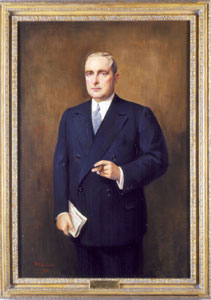 Ogden L. Mills Upon the recommendation of Treasury Secretary Andrew W. Mellon, President Coolidge appointed Ogden L. Mills (1884 - 1937) Under Secretary of the Treasury in 1927. Much of the responsibility for representing the Treasury Department before Congress fell to Mills. He continued as Under Secretary in President Hoover's Administration, during which the dominant issues were the post World War I reconstruction of Europe and the German American Debt Funding Agreement (1930). This Agreement arranged German payment to the United States for costs suffered by the American military and citizens during World War I.1932 - 1933 (President Hoover) Toward the end of his term Secretary Mellon spent much of his time overseas, and President Hoover grew to rely greatly on Mills, who served as Acting Secretary during Mellon's absence. Hoover promoted Mills to Secretary when Mellon vacated the position in 1932. As Secretary, Mills continued the policies of his predecessor, recommending a drastic reduction in Government spending and a tax increase in order to balance the budget by 1934. Congress also imposed a general manufacturer's excise tax but neither of these policies helped alleviate the Depression. Mills resigned at the end of Hoover's term in 1933. |
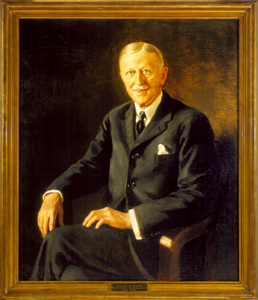 William H. Woodin In 1933 William H. Woodin (1868 - 1934) was appointed Secretary of the Treasury by his close personal friend President Franklin D. Roosevelt at one of the most critical moments in the Nation's history. The financial system of the country had been weakened by the effects of the Depression, including increasing lack of confidence in the banking system and huge withdrawals of deposits. The crisis of 1933 saw massive bank failures, which made the situation worse. Woodin's task was to restore public confidence in the Government and to carry out Roosevelt's New Deal policies of fiscal and monetary expansion, which deviated sharply from those of his predecessor Ogden Mills.1933 (President F.D. Roosevelt) To deal with the crisis of 1933, Roosevelt created the Federal Deposit Insurance Corporation, an independent agency that insured bank deposits and was designed to increase public confidence in the banks. Woodin devised regulations permitting banks to resume operations and took measures to prevent the hoarding of gold. He resigned after less than a year due to ill health. |
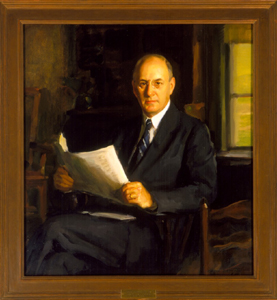 Henry Morgenthau, Jr. Having served as head of the Farm Credit Administration in 1933, Henry Morgenthau (1891 - 1967) was appointed Secretary of the Treasury by President Franklin D. Roosevelt in 1934, continuing briefly under President Harry Truman. As Roosevelt's Secretary, Morgenthau was instrumental in setting up the Works Progress Administration and the Public Works of Art Project in the 1930's. To finance World War II, Morgenthau initiated an elaborate system of marketing war bonds. He arranged that the Federal Reserve would support Treasury borrowing and would purchase bonds not bought by the public at an agreed rate. The War Bond program raised 49 billion dollars towards the cost of the war.1934 - 1945 (President F.D. Roosevelt, President Truman) Morgenthau made his most significant contribution as Chairman of the Bretton Woods Conference in New Hampshire, in 1944. This Conference, the keystone of postwar international finance, established the International Monetary Fund and the International Bank for Reconstruction and Development (World Bank) and pegged all international currencies to the dollar, which was in turn pegged to gold. Morgenthau resigned shortly after the accession of Truman to the Presidency. |
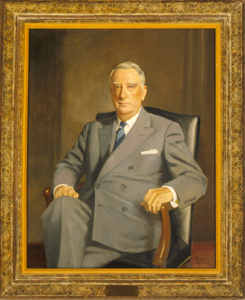 Fred M. Vinson During World War II, Frederick M. Vinson (1890 - 1953) was Director of the Office of Economic Stabilization, an executive agency charged with fighting inflation. In 1946, President Truman named him Secretary of the Treasury. His mission was to stabilize the American economy during the last months of the war and to adapt the United States financial position to the drastically changed circumstances of the postwar world. Before the war ended, Vinson directed the last of the great War Bond drives.1945- 1946 (President Truman) At the end of the war, Vinson negotiated payment of the British Loan of 1940, the largest loan made by the United States to another country, and the lend-lease settlements of economic and military aid given to the Allies during the war. In order to encourage private investment in postwar America, he promoted a tax cut in the Revenue Act of 1945. He also supervised the inauguration of the International Bank for Reconstruction and Development and the International Monetary Fund, both created at the Bretton Woods Conference of 1944, acting as the first chairman of their respective boards. In 1946 Vinson resigned from Treasury to be appointed Chief Justice of the Supreme Court by Truman. |
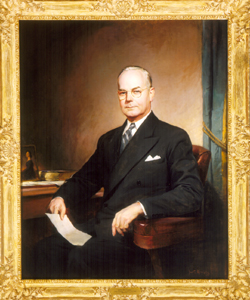 John W. Snyder John W. Snyder (1895 - 1985) came to Washington in the early 1930's with a broad background in banking and business. He held several public and private positions including National Bank Receiver in the Office of the Comptroller of the Currency, Federal Loan Administrator, and Director of War Mobilization and Reconversion. In the last office he played a leading part in the transition of the Nation's economy from wartime to a peacetime basis.1946 - 1953 (President Truman) Snyder was appointed Secretary of the Treasury in 1946 by his close personal friend President Truman, with whom he had served in World War I. His task as Secretary was to establish a stable postwar economy. The main points of his program were maintaining confidence in the credit of the Government, reducing the federal debt, and encouraging public thrift through investment in U.S. Savings Bonds. He also developed programs to promote greater efficiency within the Treasury Department, including a streamlining of the Internal Revenue Service, which assured a more impartial administration of tax laws, and a reform of the federal accounting system. Snyder resigned at the end Truman's term. |
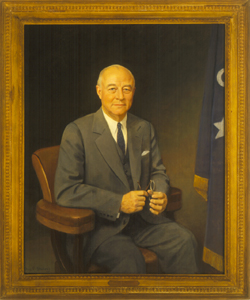 George M. Humphrey Appointed Secretary of the Treasury by President Dwight D. Eisenhower in 1953, George M. Humphrey (1890 - 1970) advocated a free market economy. He believed that the less the Government did, the more the American people would prosper, and he recommended a reduced federal budget and a cut in taxes to spur individual initiative.1953 - 1957 (President Eisenhower) Humphrey adopted a policy of offering government securities at the higher market rate of interest, rather than at the fixed Federal Reserve rate, to attract investment by the general public and to reduce the proportion of such securities held by Federal Reserve banks. He enlivened Cabinet meetings with polemics on the need for checking federal deficits, delivered as ardently as Secretary of State John Foster Dulles' exhortations on checking Communist expansion. In response to Eisenhower's 1953 budget he quipped, "There are a lot of places in this budget that can be cut." He warned that the "terrific" tax burden must be eased or "I will predict that you will have a depression that will curl your hair." He placed the national debt on a longer term basis in order to ward off further inflation. Humphrey resigned from office in 1957. |
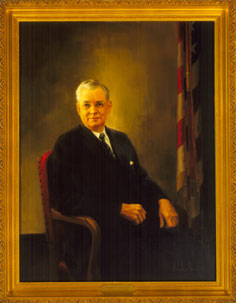 Robert B. Anderson Eisenhower appointed Robert B. Anderson (1910 - 1989), formerly President Eisenhower's Secretary of the Navy (1953 - 1954) and Deputy Secretary of Defense (1954 - 1955), Secretary of the Treasury in 1957. He was financially conservative, standing behind the Eisenhower Administration's desire to pare down the size of the Government and balance the budget in order to cut inflation and invigorate private enterprise. He believed that the Government could be run more efficiently by adopting the policies and practices of private business.1957 - 1961 (President Eisenhower) Upon the retirement of Secretary of State John Foster Dulles in 1959, Anderson became the Cabinet "strongman." He fought for a reduction in the U.S. trade deficit, insisting that the Allies remove their quotas against the importation of American goods and assume a greater share of the cost of defending their territories. Though he left office in 1961 and returned to private business, Anderson remained an important economic advisor to Presidents John F. Kennedy and Lyndon B. Johnson. |
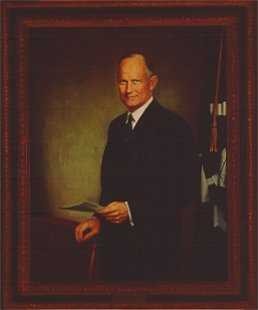 C. Douglas Dillon A Republican and a former Wall Street banker, C. Douglas Dillon (1910 - 2003) was the "unrepentant Republican in the midst of Kennedy's Democratic cabinet" and the most influential member of President Kennedy's economic policy making team. He had previously served as Under Secretary of State for Economic Affairs under President Eisenhower, where he established the Organization for Economic Cooperation and Development.1961 - 1965 (President Kennedy, President L.B. Johnson) Respected for his keen mind which quickly discerned trouble spots in the economy, Dillon stressed that the United States had not been growing fast enough and that the Nation's most pressing problem was the trade deficit. Secretary Dillon devoted himself to alleviating the intractable trade deficit by controlling inflation and encouraging exports. He also concentrated on promoting the Kennedy tax program, which consisted of sweeping tax cuts intended to encourage economic growth. He was instrumental in convincing President Johnson, after Kennedy's death, to push the tax cut bill through the Senate, and it was passed by Congress with some alterations, in 1964. Dillon resigned the next year to return to private finance. |
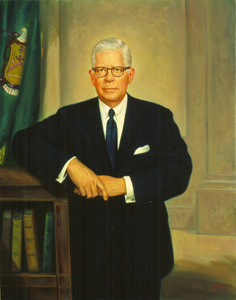 Henry H. Fowler As Under Secretary (1961 - 1964) to Treasury Secretary C. Douglas Dillon, Henry H. Fowler (1908 - 2000) had spent much of his time with Congress promoting the passage of the Kennedy Administration's tax reform program. Appointed Secretary of the Treasury by President Johnson, he had to face the problems of inflation and a trade deficit, both of which had been exacerbated by massive spending due to the war in Vietnam.1965 - 1968 (President L.B. Johnson) To spur economic growth, Fowler's immediate predecessors had administered "Keynesian" policies combining tax incentives and tax cuts. Fowler had to employ the next and less popular step in the Keynesian approach: tax increases to slow the economy and curb inflation. In order to pay the increasing expenses of the Vietnam War, Fowler lobbied and won Congressional approval for a ten- percent tax surcharge in June 1967. Another Fowler concern was the trade deficit, which had continued to grow throughout the Johnson years. He implemented a tax on foreign securities and urged corporations to place voluntary restraints on overseas investments. Fowler resigned one month before the end of Johnson's term to become a private banker. |
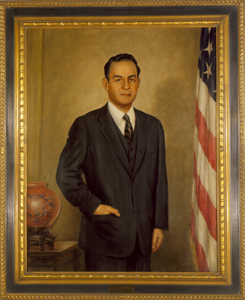 Joseph W. Barr As Under Secretary (1965 - 1968) to Secretary of the Treasury Henry H. Fowler, Joseph W. Barr (1918 - 1996) was the Johnson Administration spokesman before Congress. When Fowler resigned in December 1968, Barr was appointed Secretary to serve the remaining month of President Johnson's incumbency. He was characterized by a New York Times reporter as "a kind of Rexford Guy Tugwell of New Deal days who does not accept that the law of supply and demand is an immutable economic dictum that must work at all times and in all circumstances." As Secretary, Barr coined the phrase "taxpayer's revolt" to describe the rising sentiment, in and out of Congress, for tax reform.1968 - 1969 (President L.B. Johnson) A later Secretary, William Simon, said of Barr that he was the first to realize that the tax system was too complicated for normal individuals. Barr resigned at the end of Johnson's term to become President of the American Security Trust Company in Washington. |
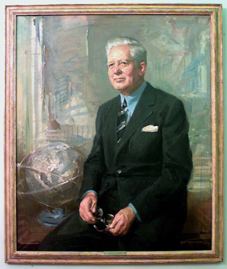 David M. Kennedy David M. Kennedy (1905 - 1996) was appointed Secretary of the Treasury by President Richard M. Nixon, who praised his "good streak of native midwestern conservatism" at a time of high taxes, a rising cost of living, and large military expenditures for the war in Vietnam. Kennedy deplored the U.S. trade deficit and envisioned an international trade system designed to prevent countries from erecting trade barriers to deal with payment problems.1969 - 1971 (President Nixon) Domestically Kennedy gave top priority to inflation, advocating a deflationary policy of high interest rates, a slowing of monetary growth, and a balanced budget. In late 1969 and early 1970, as the economy began to slow down in response to the Administration's measures, Kennedy continued to be a spokesman for these policies. However, when the Democrats realized great gains in the 1970 Congressional elections, Nixon brought in a new Secretary of the Treasury, John Connally, to give his Cabinet a more bipartisan character. Kennedy was appointed Ambassador-at-Large with Cabinet status and left Treasury early in 1971. |
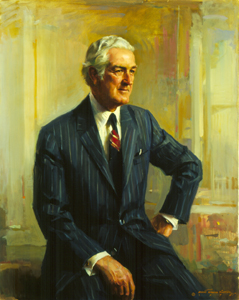 John B. Connally Democrat John B. Connally's (1917 - 1993) appointment as Secretary of the Treasury was seen as a shrewd political move for President Nixon, who had to reorganize his Republican Cabinet in response to Democratic gains in the 1970 congressional election. In response to deteriorating domestic and international economic conditions, Nixon announced his "New Economic Policy" in 1971. Internationally this meant, "closing the gold window," or an end to the United States' legal obligation to exchange dollars held by foreign banks for gold. For the first time since the 1944 Bretton Woods Conference, the dollar was no longer pegged to gold and world currencies floated (this was formalized by Treasury Secretary George Shultz in 1973).1971 - 1972 (President Nixon) Domestically Nixon and Connally initiated deficit spending under the name of a "full employment budget," and imposed a wage and price freeze. Connally was described by New York Times columnist James Reston as "the spunkiest character in Washington these days.... He is tossing away computerized Treasury speeches, and telling American business and labor off the cuff to get off their duffs if they want more jobs, more profits and a larger share of the competitive world market." Connally resigned in 1972 to campaign for Nixon's reelection. |
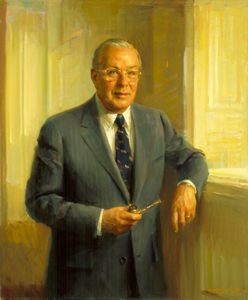 George P. Shultz Having served as Secretary of Labor in 1968 and head of the Office of Management and Budget in 1970, George P. Shultz (b.1920) was appointed Secretary of the Treasury by President Nixon in 1973. During his tenure, Shultz was concerned with two major issues: the continuing domestic administration of Nixon's "New Economic Policy," begun under Secretary John B. Connally, and a renewed dollar crisis that broke out in February 1973.1972 - 1974 (President Nixon) Domestically Shultz enacted the next phase of the NEP, which involved a lifting of price controls begun in 1971. This phase was a failure, resulting in high inflation, and price freezes were reestablished five months later. Meanwhile Shultz's attention was increasingly diverted from the domestic economy to the international arena. He participated in an international monetary conference in Paris in 1973, which grew out of the 1971 decision to close the gold window. The conference formally abolished the fixed rate exchange system, which was eliminated in 1971, thereby causing all currencies to float. Shultz resigned shortly before Nixon to return to private life. He returned to the Cabinet in 1982 as President Ronald Reagan's Secretary of State. |
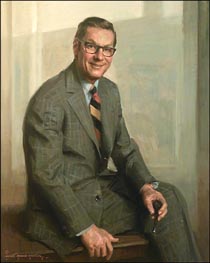 William E. Simon William E. Simon (1927 - 2000) served as Deputy Secretary of the Treasury under Secretary George P. Shultz and, beginning in 1973, served concurrently as the Director of the Federal Energy Office during the oil shortage. He was named Secretary of the Treasury by President Nixon in 1974 and continued under President Gerald Ford. Domestically, he faced a growing economic slump as he entered office. In response to the oil crisis, he convinced the oil-producing nations to place their petrodollar surpluses in U.S. bank deposits but discouraged them from direct investment in U.S. corporations.1974 - 1977 (President Nixon, President Ford) Before and during the 1974 - 1975 recession, the most severe contraction of industrial production since the Great Depression, Simon was the Administration's spokesman for austerity, fiscal constraint, and maintenance of stable capital markets. In foreign affairs, Simon continued the policies begun under Shultz of pressuring Europe and the Eastern Bloc with U.S. economic weapons and thereby keeping international policy initiative in the hands of the United States. Simon resigned at the end of Ford's term. |
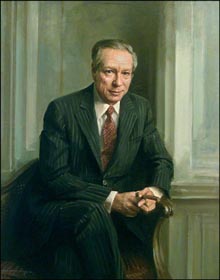 W. Michael Blumenthal Born in Berlin, W. Michael Blumenthal (b.1926) fled the Nazis in 1939 and moved to the United States in 1946. He had held several public offices, including Deputy Assistant Secretary of State for Economic Affairs under President Kennedy and Deputy Special Representative for Trade Negotiations under President Johnson, before being named Secretary of the Treasury by President Jimmy Carter in 1977. Secretary Blumenthal was acceptable both to business, because of his unabashed espousal of capitalism, and to labor, because of his progressive employment and social policies.1977 - 1979 (President Carter) He supported fiscal and monetary restraint and was firmly opposed to any sort of wage or price controls. "The government's role is to motivate [the private sector], to assure that it performs in a way which serves the public interest," he asserted. "When the private sector fails the government should step in, but not until then." However, in a period of inflation, U.S. currency depreciation, and budget deficits, Blumenthal's policy inched too slowly toward fiscal restraint. He left Treasury after a Cabinet reorganization in 1979. |
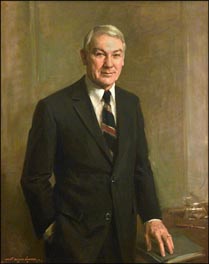 G. William Miller Having served as Chairman of the Advisory Council to President Kennedy's Committee on Equal Employment Opportunities in the early 1960's and later as an outspoken member of the National Alliance of Businessmen, G. William Miller (1925 - 2006) was appointed Chairman of the Board of Governors of the Federal Reserve by President Carter in 1977. As Fed Chairman he worked closely with the White House planning a joint assault on inflation by government, private industry, and labor groups. Appointed Secretary of the Treasury by Carter in 1979, Miller's plan was to find the fundamental causes of the country's economic problems and attack them. He successfully convinced Congress to extend unemployment benefits and encourage private investment by cutting taxes for individuals.1979 - 1981 (President Carter) Miller had a long-standing commitment to jobs programs and promoted good relations between Carter and the AFL-CIO. He was described as "a feisty little guy, with a boyish grin and a broken nose, and that spontaneous, optimistic American attitude that trouble is inevitable but everything is possible." Miller resigned at the end of Carter's term. |
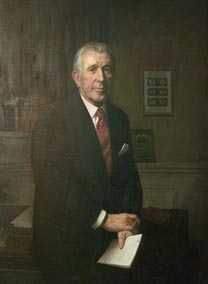 Donald T. Regan Formerly chief executive officer at the investment firm of Merrill Lynch, Donald.T. Regan (1918 - 2003) was appointed Secretary of the Treasury by President Ronald Reagan in 1981 and became the champion of Reagan's plan to cut taxes in order to stimulate investment. The Economic Recovery Act of 1981 introduced sweeping tax cuts which especially affected big business. An undeviating champion of free enterprise, deregulation, and competition in American industry, Regan declared, "If you're going to be a capitalist, you have to believe in a free market economy."1981 - 1985 (President Reagan) The final result of the Reagan Administration's revolutionary tax legislation was a twenty-five-percent reduction in Federal income taxes. "The more I examine supply side economics, the more I find I've always been on this side. But I thought it was just old fashioned conservatism," he commented. Regan resigned in 1984 to become President Reagan's Chief of Staff. |
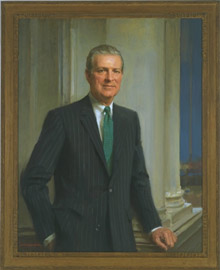 James A. Baker, III Former Chief of Staff under President Reagan, James Baker, III (b.1930) was appointed as the sixty-seventh Secretary of the Treasury on February 3, 1985, exchanging jobs with Secretary Donald Regan. A lawyer by training, he practiced law in Houston with the firm of Andrews & Kurth for more than twenty years. His introduction to Washington came when President Ford appointed him Under Secretary of Commerce. Considered a savvy political strategist, he also served on President Ford's campaign staff as Deputy Chairman for Delegate Operations and four months later as the National Chairman of the President Ford Committee.1985 - 1988 (President Reagan) From January 1979 to May 1980 he served as National Chairman of the George Bush for President Committee. During his tenure as Treasury Secretary, Baker is credited with guiding a major tax reform bill through Congress in 1986. His efforts in encouraging international economic cooperation by lowering the value of the dollar encouraged the sale of American products abroad. He was described as "the guy who rose to the challenge of international policy coordination" because of his efforts to encourage economic cooperation between the United States, Canada, Western Europe, and Japan. Secretary Baker resigned on August 17, 1988 to become Chairman of the Bush campaign and in 1989 became Secretary of State. |
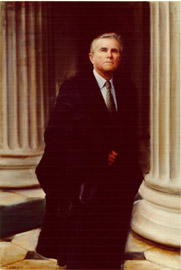 Nicholas F. Brady The former chairman of the New York investment banking firm of Dillon, Read & Co. Inc., Nicholas F. Brady (b.1930) was appointed Secretary of the Treasury by President Reagan in 1988, and he continued in office throughout the Administration of President Bush. During his tenure, Secretary Brady successfully resolved two severe economic crises that confronted the world financial markets. Internationally the Brady Plan to defuse the $1.3 trillion Third World debt crisis was a catalyst for economic and political reform in Latin America.1988 - 1993 (President Reagan, President G.H.W. Bush) The collapse of the Savings and Loan industry was an unparalleled financial crisis that threatened the stability of the entire American financial system. Brady restored health and public faith in that system. Building upon this successful experience, he proposed the most comprehensive reforms of the American banking system since the 1930's. A tireless advocate for the free market, Secretary Brady supported prudent fiscal policies at home and open markets abroad as a way of ensuring sustainable prosperity for all in an increasingly global economy. He fought to restrain Government spending while creating incentives for private saving and investment. He strongly advocated international free trade agreements and was an early supporter of measures designed to facilitate the integration of the emerging economies of Eastern Europe and the former Soviet Union into the world market. Nicholas Brady resigned as Secretary of the Treasury on January 17, 1993. |
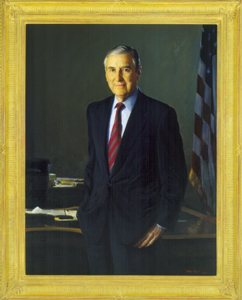 Lloyd M. Bentsen United States Senator and Chairman of the Finance Committee, Lloyd Bentsen (1921-2006) was appointed the 69th Secretary of the Treasury by President Clinton in 1993. A decorated World War II bomber pilot and business leader, Secretary Bentsen began a long and distinguished career of public service by representing south Texas in the House of Representatives for three terms from 1949 to 1955. Subsequently, Bentsen established a successful financial services company in Houston which he sold in 1970 in order to campaign and then win a seat in the United States Senate.1993 - 1994 (President Clinton) Rising to chair the powerful Finance Committee, Bentsen's Senate record included legislation protecting the pensions of American workers, creating the Individual Retirement Account (IRA), and improving access to health care for low income women and children. In 1988 he was his party's choice for Vice President. called ''the most valuable legislative asset Clinton has," Secretary Bentsen was the Administration's chief spokesman and principal architect for an economic program that witnessed a number of major accomplishments in less than two years. He was a staunch advocate of regaining control over federal finances and a major proponent of President Clinton's plan to reduce the deficit by $500 billion. This deficit reduction plan helped the United States regain credibility and leadership among the other industrialized nations. It also contributed to the recovery of the economy and created over 5 million new jobs during Bentsen's tenure as Secretary. An advocate of free trade, Bentsen's leadership helped ensure the passage of the North American Free Trade Agreement (NAFTA), which eliminated trade barriers between the United States, Canada and Mexico as well as passage of the global treaty known as the Uruguay Round of the General Agreement on Tariffs and Trade (GATT). Bentsen had a major impact in promoting U.S. interests in the international financial institutions and ensured that the Treasury Department was a regular participant in the international summit process. Domestically, Secretary Bentsen also helped push the Interstate Banking and Branching Efficiency Act of 1994, which permits interstate branching of banks. He was also a pivotal figure in the passage of the 1994 crime bill, which banned assault rifles. Bentsen believed that "public service is the best way to affect the most lives, hopefully for the better," and often stated publicly that all he wanted said about his record was that "he made a difference." |
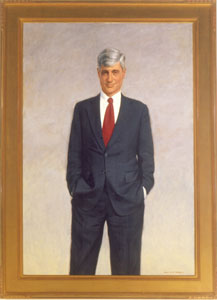 Robert E. Rubin When President William Jefferson Clinton swore in Robert E. Rubin (b. 1938) as the 70th Secretary of the Treasury, he was already one of the most knowledgeable and best prepared leaders of finance t/p>o assume the office. Before entering public service, Secretary Rubin worked for twenty-six years at Goldman Sachs & Company, one of Wall Street's venerable investment firms, where he rose to the position of Co-Chairman. He was originally appointed by President Clinton to be Assistant to the President for Economic Policy and to serve as the Nation's first director of the National Economic Council (1993 - 1995), which coordinated economic policy throughout the Clinton Administration. With his vast experience in financial markets and collegial temperament, he helped President Clinton and his economic team develop an economic policy based on vigorous deficit reduction, global open markets, and investments in education, training and the environment. This program helped to spark and sustain the longest economic expansion in the Nation's history to date, transforming the Nation's budgetary position from deficit to surplus, and producing the lowest national rates of unemployment in decades.1995 - 1999 (President Clinton) After succeeding Lloyd Bentsen as Treasury Secretary, Secretary Rubin faced threats to the Nation's creditworthiness and to the stability of the global financial system. Secretary Rubin used his statutory authority to safeguard the Federal Government's finances and make timely payments of the federal debt when Congress did not raise the debt limit during an extensive budgetary confrontation. During his tenure financial crises flared in Mexico and Asia, posing real risks to global financial stability. Secretary Rubin led efforts with the IMF, the Federal Reserve and others to stop both crises from overwhelming the global financial system, thereby protecting the American economic expansion and spurring Mexico and Asia towards economic recovery. Secretary Rubin's tenure at Treasury was extraordinarily varied. He spoke out about growing "interdependence" among nations and urged Americans to appreciate the benefits of increasing economic integration in the post-Cold War era. He worked forcefully throughout his tenure for fiscal discipline and open trade, while strongly advocating policies to provide greater skills and support for workers and low income Americans, particularly those in the inner city. Rubin strongly supported aid for developing nations and acted to reform the architecture of the global financial system. He worked to reform the IRS and for financial modernization. He also championed the priorities of Treasury's law enforcement agencies, including policies to redesign the Nation's currency to thwart counterfeiting, decrease the accessibility of guns to former felons and to minors, enhance Presidential security, interdict drugs at U.S. borders, and combat money laundering. Upon Secretary Rubin's retirement, President Clinton called him the "greatest Secretary of the Treasury since Alexander Hamilton." |
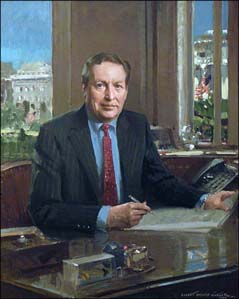 Lawrence H. Summers Lawrence H. Summers was sworn in as the 71st Secretary of the Treasury in July 1999 after serving as Under Secretary for International Affairs and Deputy Secretary of the Treasury. From 1991 to 1993 he served as Chief Economist of the World Bank, where he played a key role in designing strategies to assist developing countries. Before coming to Washington, Summers had a distinguished academic career as the Nathaniel Ropes Professor of Political Economy at Harvard University.1999 - 2001 (President Clinton) As Under Secretary and Deputy Secretary of the Treasury, Summers worked closely with Secretaries Bentsen and Rubin in formulating domestic and international economic policies. He played a key role in designing the United States support program for Mexico in the wake of its 1995 financial crisis and in crafting the international response to the Asian financial crisis of 1997. As Deputy Secretary, Summers was also instrumental in the introduction of indexed Treasury debt securities and in the reform of the Internal Revenue Service. When President Clinton appointed Summers as Secretary of the Treasury, he called Summers "a critical part of our economic team during the entire life of this administration." During Summers' tenure as Secretary of the Treasury, the United States used budget surpluses to repurchase Treasury debt for the first time since the 1920's, and extended the life of the Social Security and Medicare trust funds. Summers led efforts to modernize the financial system, extend financial privacy protections, provide for digital signatures, and insure the viability of the over-the-counter derivatives market. Summers also championed reforms to address corporate tax shelters and predatory lending practices. Internationally, Summers worked to address the challenges presented by modern capital markets. His work with the International Monetary Fund contributed to a more effective surveillance of financial vulnerabilities, greater transparency in the international financial system, the introduction of new lending facilities to deal with capital account crises, and improvements in IMB lending practices. Summers was a key figure domestically and internationally in securing significant expansion in debt relief for the world's poorest and most indebted countries. This measure led to the increased availability of funds for primary health care and education in a number of countries. Summers also unveiled the first National Anti-Money Laundering Strategy, and led international efforts to limit the abuses of tax and regulatory havens. He also played an important role in negotiating the United States' agreement to allow China to join the World Trade Organization. During Summers' tenure, the United States marked the longest period of sustained economic growth in its history. |
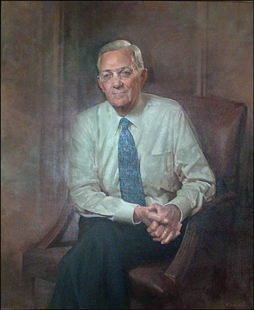 Paul H. O'Neill Paul H. O'Neill (b.1935) was appointed the 72nd Secretary of the Treasury Department in 2001 by President George W. Bush. O'Neill started his career in government service under President Kennedy and continued working under Presidents Johnson, Nixon and Ford. Under the former administrations he acted as a computer systems analyst from 1961-1967 (Ford) in the U.S. Veterans Administration and as staff member/Deputy Director of the Office Management and Budget (OMB) from 1967-1977. After working with the OMB he left the Government in order to pursue business interests in the private sector. Secretary O'Neill came to the Treasury Department with several years of experience as the Chairman and CEO of aluminum giant Alcoa. During this time O'Neill managed a corporation of more than 140,000 employees world wide.2001 - 2002 (President G.W. Bush) Months after O'Neill was appointed Treasury Secretary, the country faced the most horrific terrorist attacks in its history, 9/11 (September 11, 2001). The events surrounding 9/11 precipitated a sudden downturn in U.S. economic growth, closely tied to economic uncertainty worldwide. Secretary O'Neill helped restore confidence in the economy by vowing to eliminate the funding source of terrorist attacks which continually threatened America's peace and prosperity. Through his Treasury tenure, Secretary O'Neill utilized the Department's resources to fight terrorist financing. He worked personally and closely with Middle Eastern countries in order to stop money laundering and fraud in charitable organizations. He was also instrumental in setting up a special task force within the Department whose avowed purpose was to combat terrorist finance. This initiative ultimately led to the creation of the Office of Terrorism and Financial Intelligence. In addition to the fight against terrorism, Secretary O'Neill was an outspoken critic on the complexity of the Nation's tax code. He believed the code's complexity was inhibiting personal as well as corporate growth in America and became one of the Administration's leading advocates for its change. As a testament to Secretary O'Neill's work ethic and dedication to public service, he has been awarded many honorary doctorates over the years from various universities. He has also served on a wide variety of committees including the American Red Cross, Committee for Economic Development, Joint Council on Economic Education, Institute for International Economics, and National Leadership Commission on Health Care. Secretary Paul H. O'Neill resigned from the Treasury Department on December 6, 2002. |
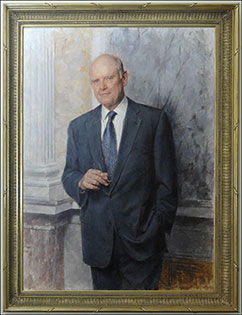 John W. Snow John W. Snow was the 73rd Secretary of the Treasury serving from February 2003 until June 2006.2003 - 2006 (President G.W. Bush) He came to office following a recession, the aftermath of the September 11th terrorist attacks, and the corporate scandals that produced the largest overhaul of corporate governance since the Securities Acts of the thirties. As Secretary, he worked to pass the Jobs and Growth Act of 2003, and later to extend its key features, many of which remained in effect long after he left office. In particular, he was a strong advocate for the lower rates on the taxation of capital income. His leadership in the financial war on terror was a hallmark of his tenure. He created the new Office of Terrorism and Financial Intelligence, which included the first ever dedicated intelligence unit within a cabinet level finance ministry, and worked to internationalize this critical initiative. America and the rest of the world are safer as a result of these efforts. He spoke often before Congress of the potential systemic risk posed by housing –related government sponsored enterprises (GSE's), and was tireless in urging adoption of legislation to create a strong regulator to supervise them. His extensive international economic diplomacy focused attention on the need to address growing global imbalances. These efforts led to heightened focus on this issue by the IMF, and to China taking the historic step in 2005 to introduce a more flexible currency regime. Through his leadership role in the G-7 and G-8, he broadened participation of emerging market economies, including China, India, Brazil, and South Africa on a regular basis. He played a pivotal role in international efforts to establish a far-reaching plan to completely cancel the burden of international debt on the world's poorest and most heavily indebted countries. |
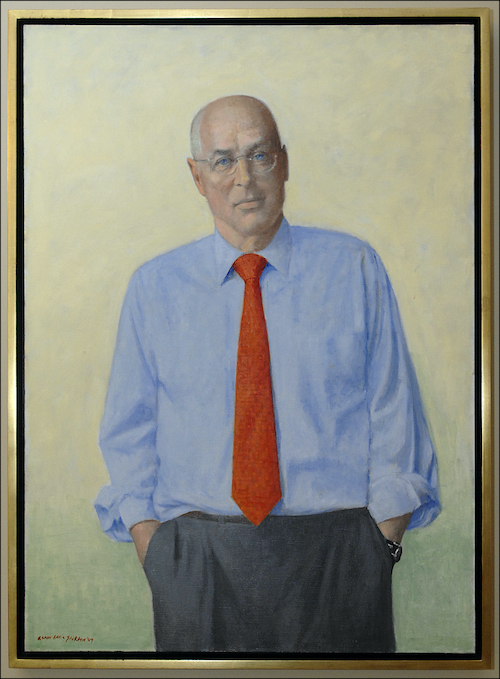 Henry M. Paulson, Jr. Secretary Henry M. Paulson, Jr. led President George W. Bush's economic team in designing and coordinating the successful domestic and international response beginning in 2008 to the greatest financial crisis since the Great Depression. His courage and decisiveness helped protect the United States financial system from collapse, staving off an economic catastrophe that might have well have seen unemployment reach the level last recorded in the 1930s.2006 - 2009 (President G.W. Bush) Secretary Paulson arrived at Treasury in July 2006 well prepared for the challenges he would face. He came from a 32-year career in finance with a leading global investment bank, Goldman Sachs, where he served eight years as Chairman and CEO. Paulson assembled a team of experienced professionals and reinstituted regular meetings of the President's Working Group on Financial Markets. The coordinated efforts of the PWG's financial regulators would later prove critical to the U.S. government's ability to prevent the collapse of the financial system. Secretary Paulson's non-partisan leadership enabled him to convince Congress to grant the unprecedented emergency powers necessary to stem the crisis. Looking to the future, Secretary Paulson and his Treasury team crafted a regulatory blueprint to fix an outdated financial regulatory structure, including reforms that ultimately became part of the Dodd/Frank financial reform legislation that would eventually be signed into law by President Obama. Together with President Bush, Secretary Paulson established the G20 as the premier leaders' forum for global financial reform and economic recovery, guiding the work of the first Summit that established the roadmap for future leaders meetings. Through his creation and leadership of the Strategic Economic Dialogue, Secretary Paulson fundamentally changed the nature of U.S. engagement with China by fashioning a new framework for prioritizing and dealing with a broad range of economic issues. This dialogue—held at the Cabinet level and led by Paulson on the U.S. side—greatly enhanced the U.S. relationship with China and led to direct results in areas ranging from greater flexibility of China's currency to improved safety of products traded between the two nations as well as an historic 10-year framework for coordinating energy and environmental initiatives. The SED served as a model for the dialogue with China which was carried forward by the Obama Administration. A committed internationalist and a strong advocate of free trade and open investment, Secretary Paulson played a key strategic role in several foreign policy issues. He worked to pass legislation encouraging foreign investment in the U.S. by reforming the national security review process, and he helped to advance Free Trade Agreements with Peru, Korea, Colombia and Panama. Secretary Paulson led an aggressive Treasury Department effort to combat financing to terrorist organizations. He was an important participant in the President's global nonproliferation efforts. Secretary Paulson also undertook various internal Treasury reforms to make Treasury operate more efficiently and effectively, modernizing Treasury in such key areas as the issuance of Treasury bonds and environmental leadership. |
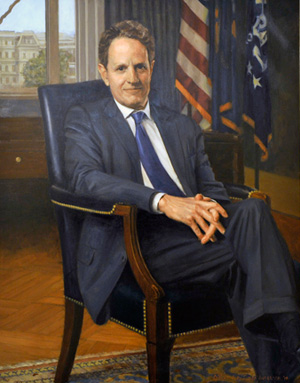 Timothy F. Geithner Timothy F. Geithner served as the 75th Secretary of the Treasury from January 26, 2009 to January 25, 2013. He took office in the midst of the worst financial crisis since the Great Depression and helped design and lead the successful strategy to avert global economic collapse and repair the damage to the U.S. economy and the financial system.2009-2013 (President Obama) Working with the Federal Reserve and a close-knit team of advisors, and building on the work of Secretary Henry Paulson and his team, Secretary Geithner developed and executed a series of programs under President Barack Obama that helped recapitalize and restructure the financial system and restore economic growth. Treasury was able to recover the investments it made under the emergency financial programs at a substantial profit to taxpayers. Alongside those efforts, Secretary Geithner worked to put in place a mix of short-term tax cuts and public investments to support the economy during the crisis, followed by longer term spending and tax reforms to help put the fiscal position of the United States on a more sustainable foundation. Secretary Geithner was the main architect of President Obama's push to restructure and reform the financial system, which resulted in the landmark Wall Street Reform and Consumer Protection Act. The law put in place important constraints on risk in the financial system and established new protections for investors and consumers, including the establishment of the Consumer Financial Protection Bureau. Secretary Geithner also played a leadership role on a broad set of international economic challenges, including helping to contain the European financial crisis, moving China to a more flexible exchange rate system, and forging agreements among developed and emerging economies to reform and strengthen the international financial system. Prior to becoming Secretary, Geithner was President and CEO of the Federal Reserve Bank of New York from 2003 to 2009. From 2001-2003, he was director of the Policy Development and Review Department at the International Monetary Fund. Geithner joined the civil service of the Treasury Department in 1988 as an economist in the Office of International Trade and subsequently served in variety of positions, including Under Secretary for International Affairs. He was the first former member of Treasury's career civil service to become Secretary. |
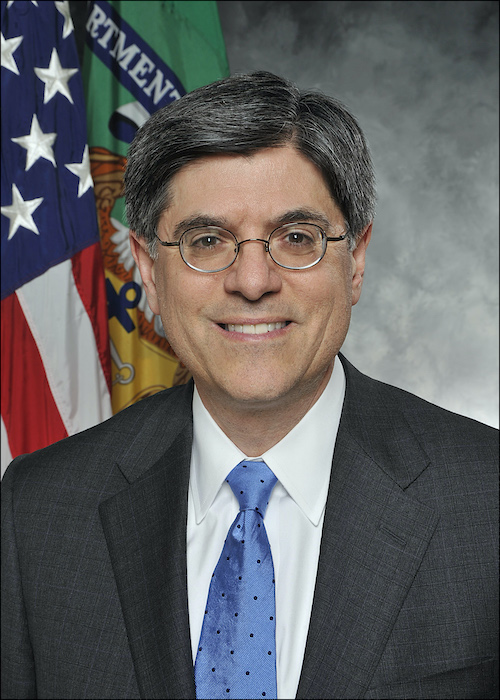 Jacob J. Lew Jack Lew was confirmed by the United States Senate on February 27, 2013, to serve as the 76th Secretary of the Treasury. Secretary Lew previously served as White House Chief of Staff. Prior to that role, Lew was the Director of the Office of Management and Budget (OMB), a position he also held in President Clinton's Cabinet from 1998 to 2001. Before returning to OMB in 2010, Lew first joined the Obama Administration as Deputy Secretary of State for Management and Resources.2013 - 2017 (President Obama) Before joining the State Department, Lew served as managing director and chief operating officer for two different Citigroup business units. Prior to that, he was executive vice president and chief operating officer of New York University, where he was responsible for budget, finance, and operations, and served as a professor of public administration. From 2004 through 2008, Lew served on the Board of Directors of the Corporation for National and Community Service and chaired its Management, Administration, and Governance Committee. As OMB Director from 1998 to 2001, Lew led the Administration budget team and served as a member of the National Security Council. During his tenure at OMB, the U.S. budget operated at a surplus for three consecutive years. Earlier, Lew served as OMB's Deputy Director and was a member of the negotiating team that reached a bipartisan agreement to balance the budget. As Special Assistant to President Clinton from 1993 to 1994, Mr. Lew helped design Americorps, the national service program. Lew began his career in Washington in 1973 as a legislative aide. From 1979 to 1987, he was a principal domestic policy advisor to House Speaker Thomas P. O'Neill, Jr, when he served the House Democratic Steering and Policy Committee as Assistant Director and then Executive Director. He was the Speaker's liaison to the Greenspan Commission, which negotiated a bipartisan solution to extend the solvency of Social Security in 1983, and he was responsible for domestic and economic issues, including Medicare, budget, tax, trade, appropriations, and energy issues. Before joining the Obama Administration, Lew co-chaired the Advisory Board for City Year New York and was on the boards of the Kaiser Family Foundation, the Center on Budget and Policy Priorities, the Brookings Institution Hamilton Project, and the Tobin Project. He is a member of the Council on Foreign Relations, the National Academy of Social Insurance, and of the bar in Massachusetts and the District of Columbia. |
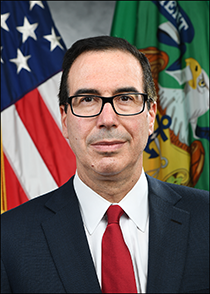 Steven T. Mnuchin Steven Terner Mnuchin was sworn in as the 77th Secretary of the Treasury on February 13, 2017.2017-2021 (President Trump) As Secretary, Mr. Mnuchin is responsible for the U.S. Treasury, whose mission is to maintain a strong economy, foster economic growth, and create job opportunities by promoting the conditions that enable prosperity at home and abroad. He is also responsible for strengthening national security by combating economic threats and protecting our financial system, as well as managing the U.S. Government's finances. Secretary Mnuchin has played a pivotal role in advancing the Administration's economic agenda, including the passage and implementation of its key legislative achievement, the Tax Cuts and Jobs Act. He also leads the Treasury Department's regulatory reform efforts. Secretary Mnuchin is chair of the Committee on Foreign Investment in the United States (CFIUS) and is a member of the National Security Council. He is responsible for using economic tools to combat terrorist financing and other threats to the United States and our allies. Prior to his confirmation, Secretary Mnuchin was Finance Chairman for Donald J. Trump for President and traveled extensively with the President. He also served as a Senior Economic Advisor to the President in developing his economic agenda. Prior to his confirmation he also served as Founder, Chairman, and Chief Executive Officer of Dune Capital Management. He founded OneWest Bank Group LLC and served as its Chairman and Chief Executive Officer until its sale to CIT Group Inc. Earlier in his career, Secretary Mnuchin worked at The Goldman Sachs Group, Inc. where he was a Partner and served as Chief Information Officer. He has extensive experience in global financial markets and investments. Secretary Mnuchin is committed to philanthropic activities and previously served as a Member of the Boards of the Museum of Contemporary Art Los Angeles (MOCA), the Whitney Museum of Art, the Hirshhorn Museum and Sculpture Garden on the Mall, the UCLA Health System Board, the New York Presbyterian Hospital Board, and the Los Angeles Police Foundation. He was born and raised in New York City. Secretary Mnuchin holds a Bachelor's Degree from Yale University. |
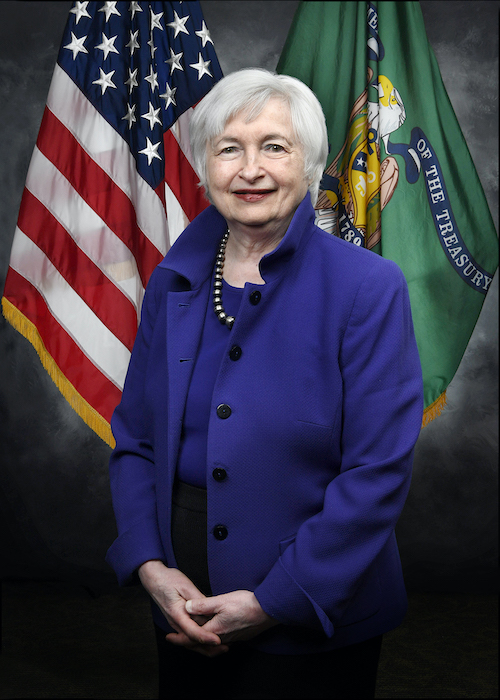 Janet L. Yellen On January 26, 2021, Janet Yellen was sworn in as the 78th Secretary of the Treasury of the United States. An economist by training, she took office after almost fifty years in academia and public service. She is the first person in American history to have led the White House Council of Economic Advisors, the Federal Reserve, and the Treasury Department. 2021 - (President Biden) Janet Louise Yellen was born in Bay Ridge, Brooklyn in 1946. Her mother, Anna Ruth, was an elementary school teacher while her father, Julius, worked as a family physician, treating patients out of the ground floor of the family's brownstone. In 1967, Secretary Yellen graduated from Brown University and went on to earn her PhD at Yale. She was an assistant professor at Harvard until 1976 when she began working at the Federal Reserve Board. There, in the Fed's cafeteria, she met fellow economist, George Akerlof. Janet and George would marry later that year. They would go on to have a son, Robert, now also an economics professor. In 1980, Secretary Yellen joined the faculty of the University of California at Berkeley, where she became the Eugene E. and Catherine M. Trefethen Professor of Business and Professor of Economics. She is Professor Emeritus at the university. Secretary Yellen's scholarship has focused on a range of issues pertaining to labor and macroeconomics. Her work on "efficiency wages" with her husband George Akerlof studied why firms often choose to pay more than the minimum needed to hire employees. These businesses, they found, are often making a wise decision. Firms that offer better pay and working conditions tend to be rewarded with higher morale, reduced turnover and greater productivity. In 1994, President Bill Clinton appointed then-Dr. Yellen to the Federal Reserve Board of Governors. Three years later, he named her Chair of the White House Council of Economic Advisers. In 2004, Secretary Yellen began her third tenure at the Federal Reserve, this time as President of the Federal Reserve Bank of San Francisco. From that post, she spotted a worrying economic trend – a bubble in home values. When the housing bubble popped in 2008, Secretary Yellen helped manage the resulting financial crisis and recession. In 2010, President Barack Obama, appointed her Vice Chair of the Federal Reserve, before nominating her to succeed Fed Chair Benjamin Bernanke as the nation's top central banker. Secretary Yellen would serve as Chair of the Federal Reserve from 2014 until 2018. On December 1, 2020, then-President-elect Biden nominated Dr. Janet Yellen to the post of Treasury Secretary. "She has spent her career focused on unemployment and the dignity of work," he said, "She understands what it means to people and their communities when they have good, decent jobs." Prior to serving at the Treasury Department, Secretary Yellen was a Distinguished Fellow in Residence with the Economic Studies Program at the Brookings Institution. During 2020-2021 she served as President of the American Economic Association. She is a member of the American Academy of Arts and Sciences and the Council on Foreign Relations. She was also a founding member of the Climate Leadership Council. Secretary Yellen has served on the advisory boards of the Bloomberg New Economic Forum, the Committee for a Responsible Federal Budget and Fix the Debt Coalition (CRFB), and the Washington Center for Equitable Growth Steering Committee. She was elected to the Yale Corporation as an alumni fellow in 2000, serving until 2006. Dr. Yellen has received honorary doctorates from Bard College, Brown, the London School of Economics, NYU, the University of Baltimore, the University of Michigan, the University of Warwick and Yale from which she also received the Wilbur Cross Medal for distinguished achievements in scholarship, teaching, academic administration, and public service. |
The Department of the Treasury is the national treasury of the federal government of the United States. It serves as an executive department.United States Department of the Treasury:
- The department oversees the Bureau of Engraving and Printing, and the U.S. Mint. These two agencies are responsible for printing all paper currency and coins, while the treasury executes its circulation in the domestic fiscal system.
- It collects all federal taxes through the Internal Revenue Service.
- It manages U.S. government debt instruments.
- It licenses and supervises banks and thrift institutions
- It advises the legislative and executive branches on matters of fiscal policy.
The department is administered by the secretary of the treasury, who is a member of the Cabinet. The treasurer of the United States has limited statutory duties, but advises the Secretary on various matters such as coinage and currency production. Signatures of both officials appear on all US dollar bills (Federal Reserve notes).
Established by an Act of Congress in 1789 to manage government revenue.
The first secretary of the treasury was Alexander Hamilton. Hamilton established the nation's early financial system and for several years was a major presence in Washington's administration. The office is thus customarily referred to as "Treasury", solely, without any preceding article, as a remnant of the country's transition from British to American English during the late 18th century. Hamilton's portrait appears on the obverse of the ten-dollar bill, while the Treasury Department building is depicted on the reverse.Basic functions:
- Producing all currency and coinage of the U.S.
- Collecting taxes, duties and money paid to and due to the U.S.
- Paying all bills of the U.S.
- Managing the federal finances
- Managing government accounts and the United States public debt
- Supervising national banks and thrift institutions
- Advising on domestic and international financial, monetary, economic, trade and tax policy (fiscal policy being the sum of these)
- Enforcing federal finance and tax laws
- Investigating and prosecuting tax evaders
- Publishing statistical reports
https://en.wikipedia.org/wiki/United_States_Department_of_the_Treasury
